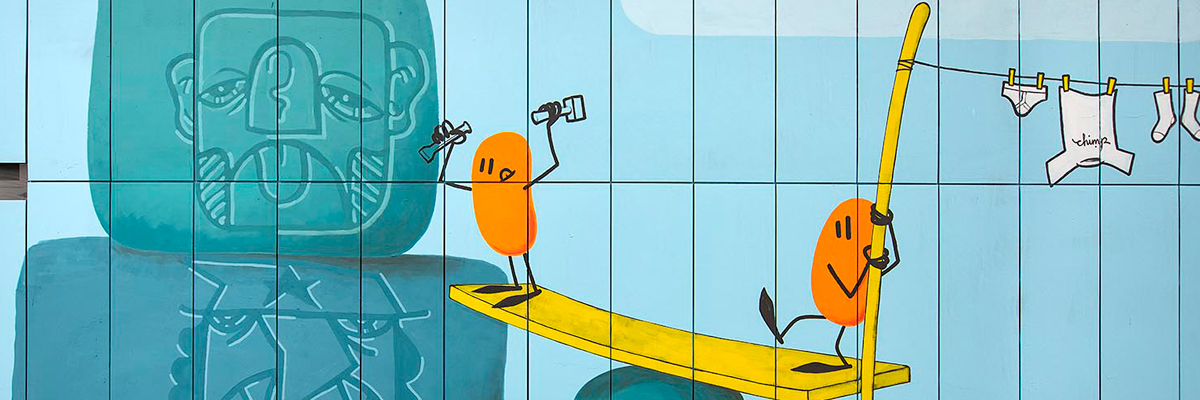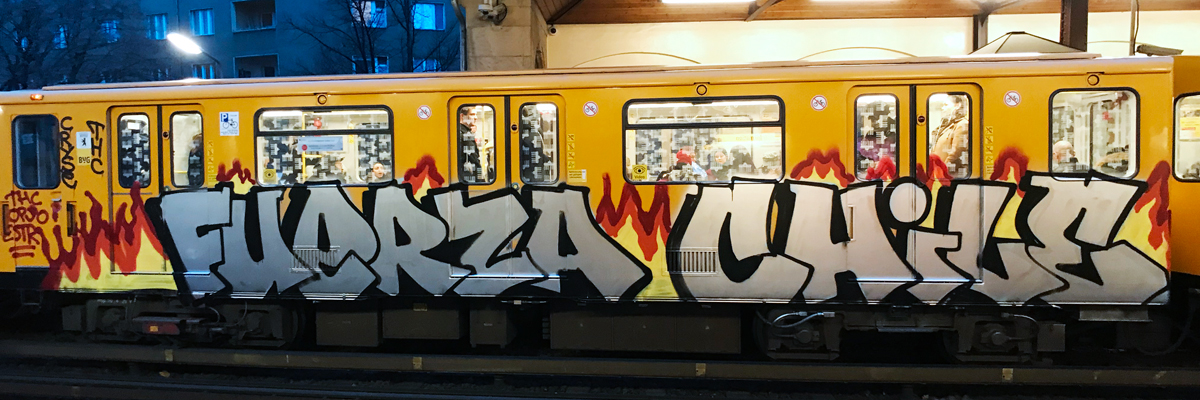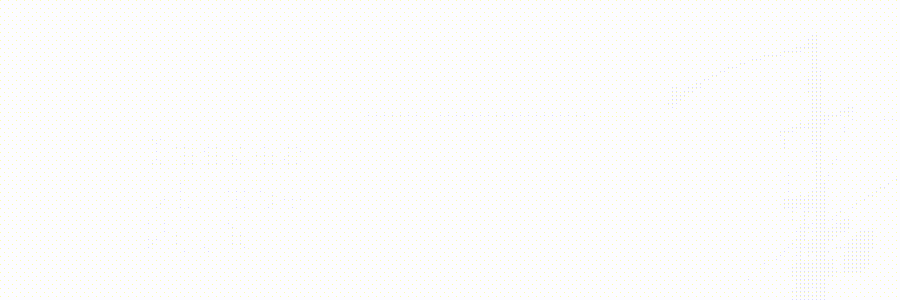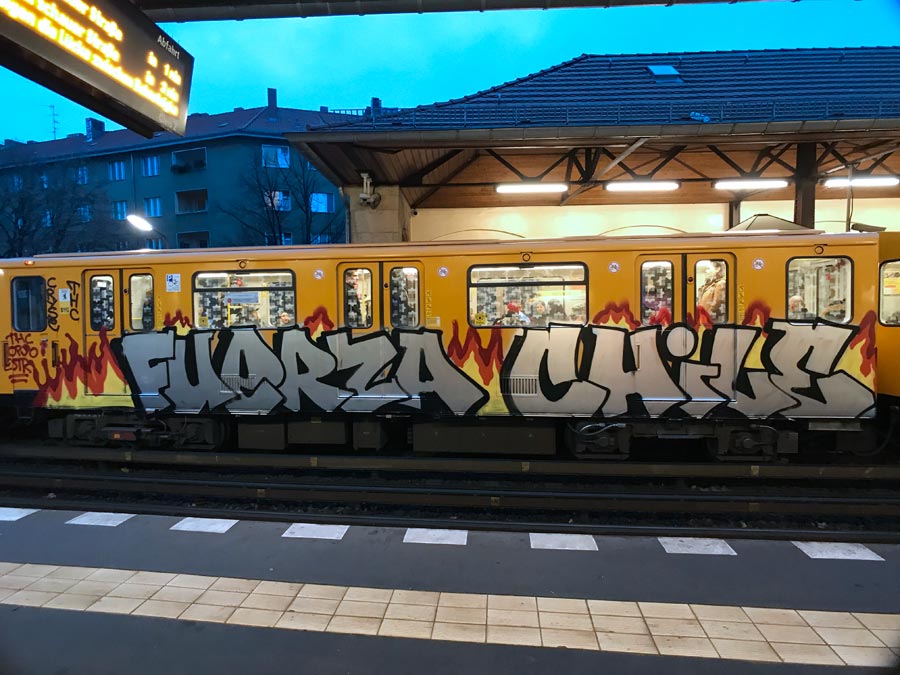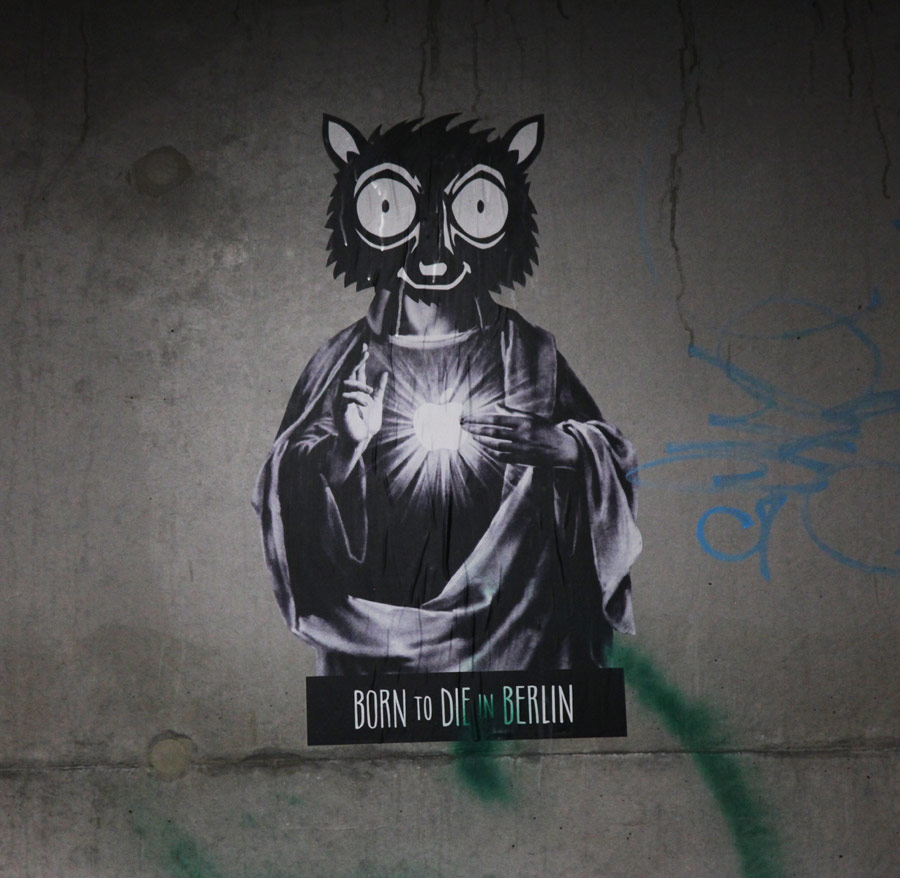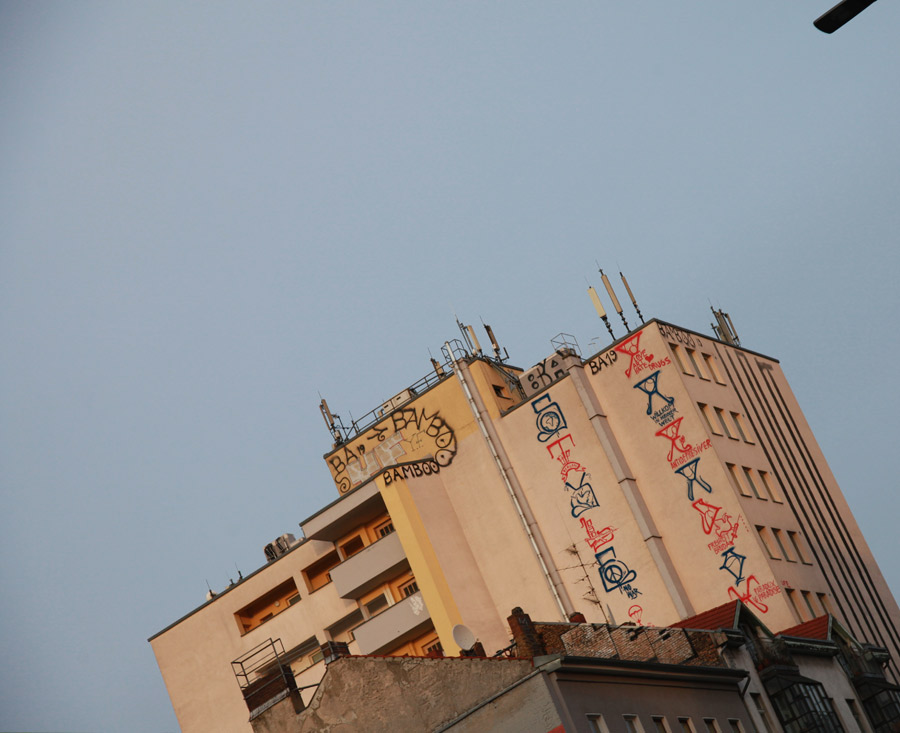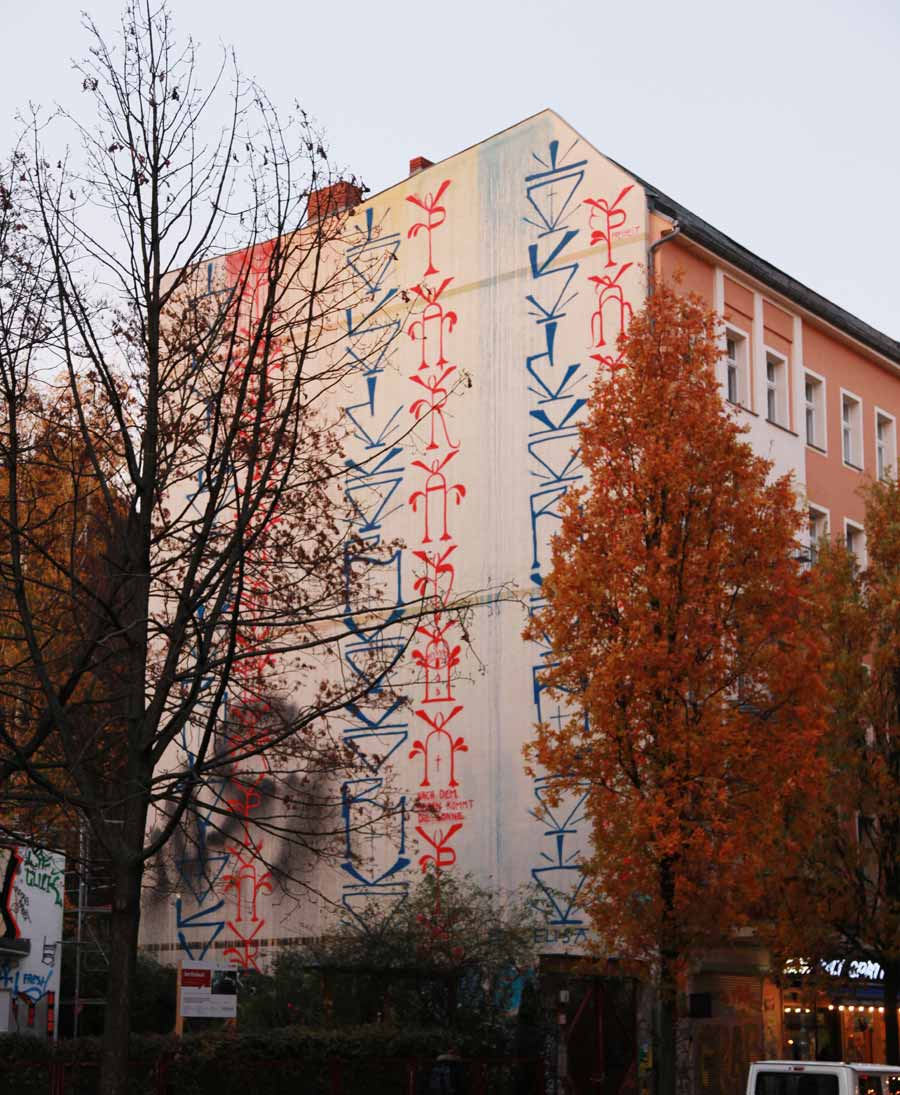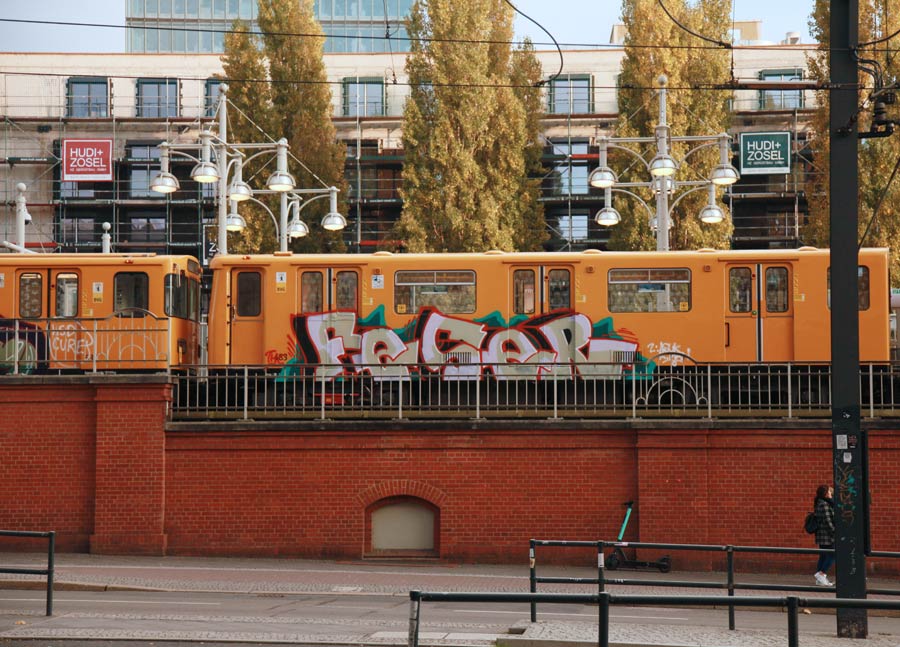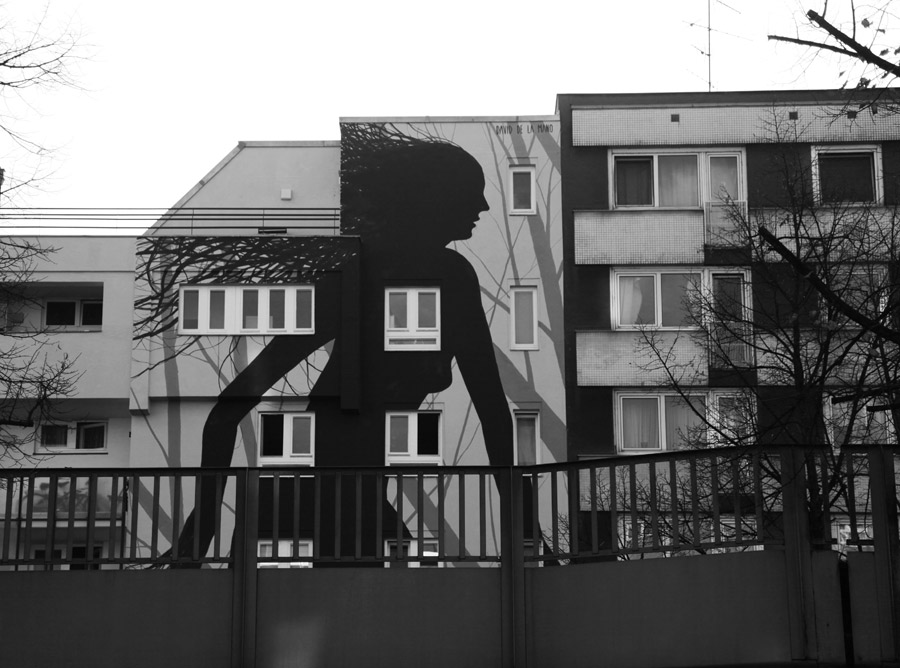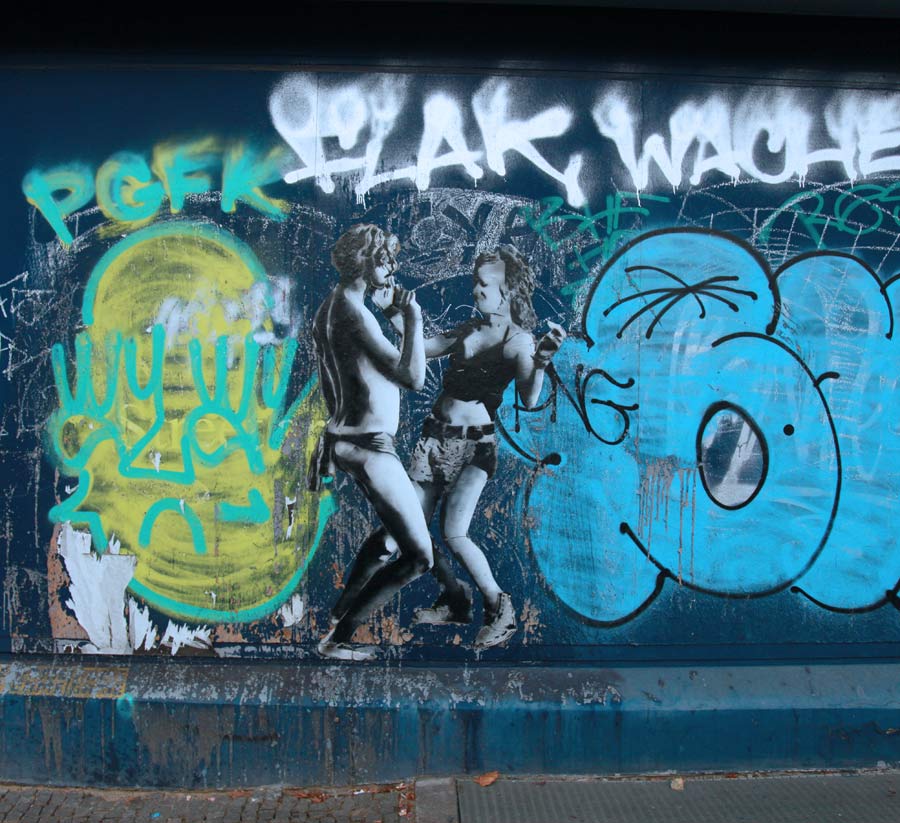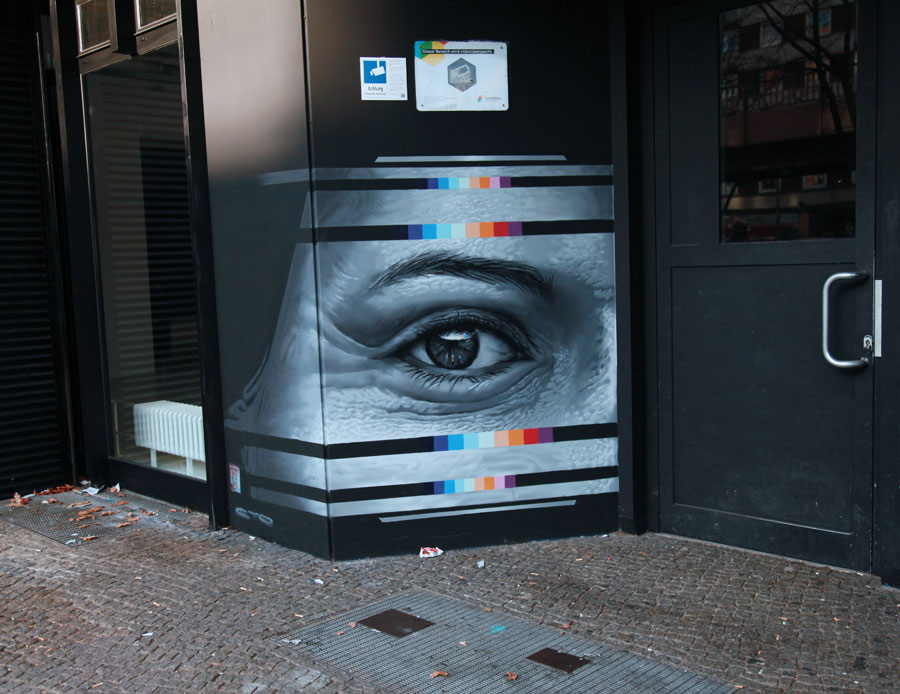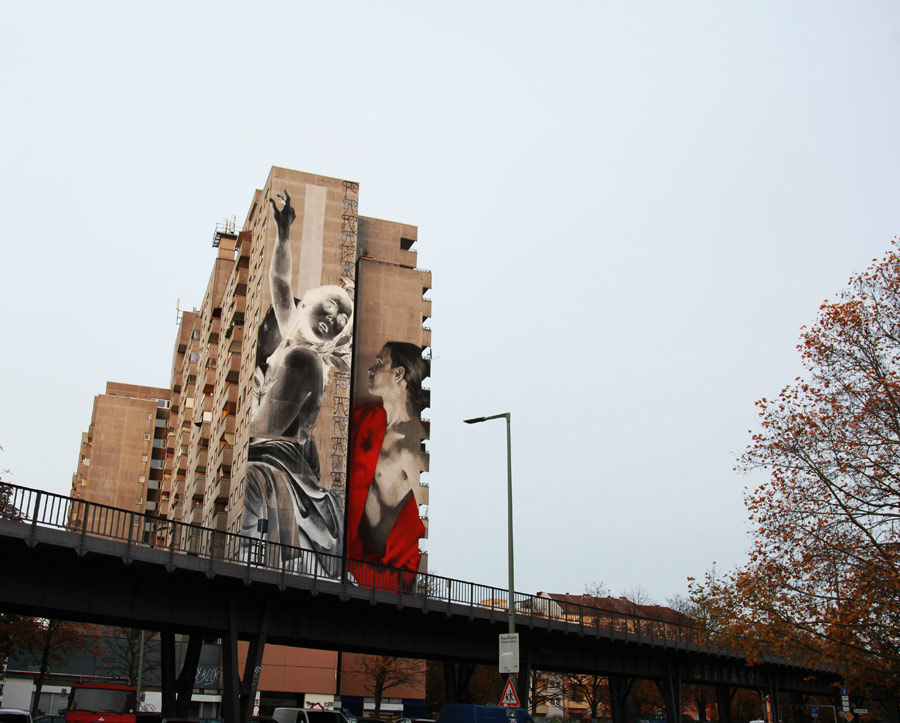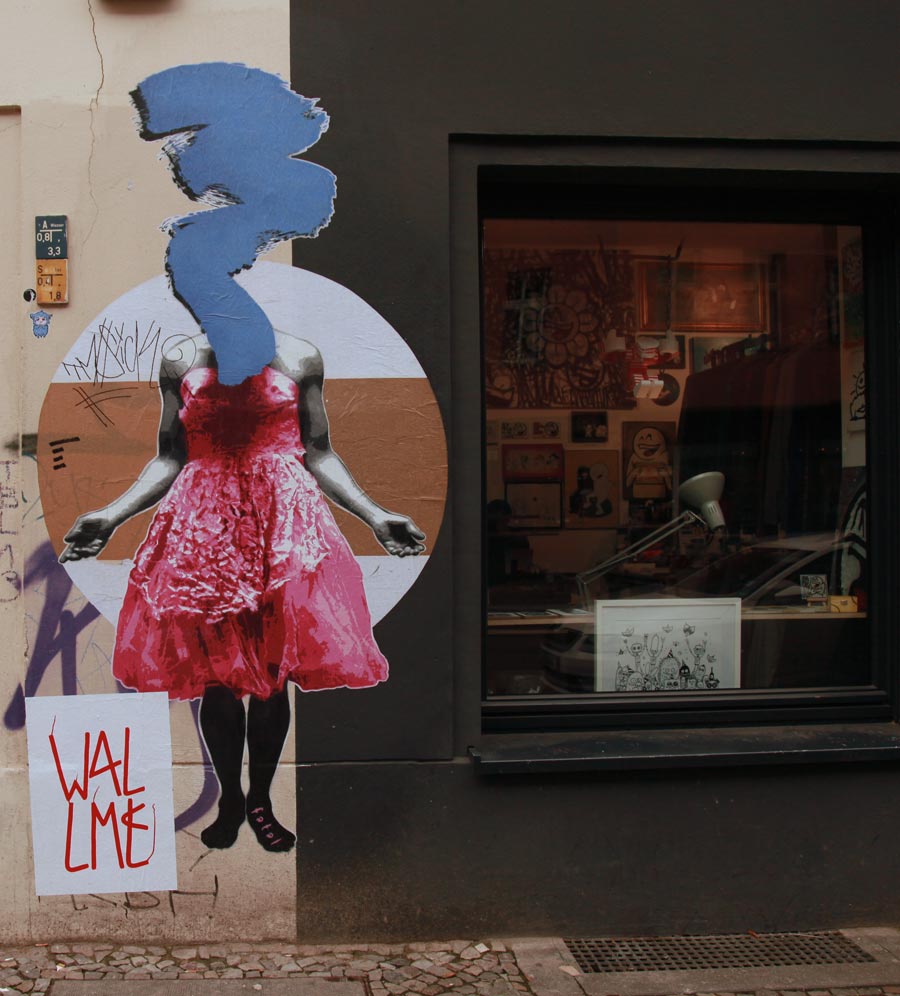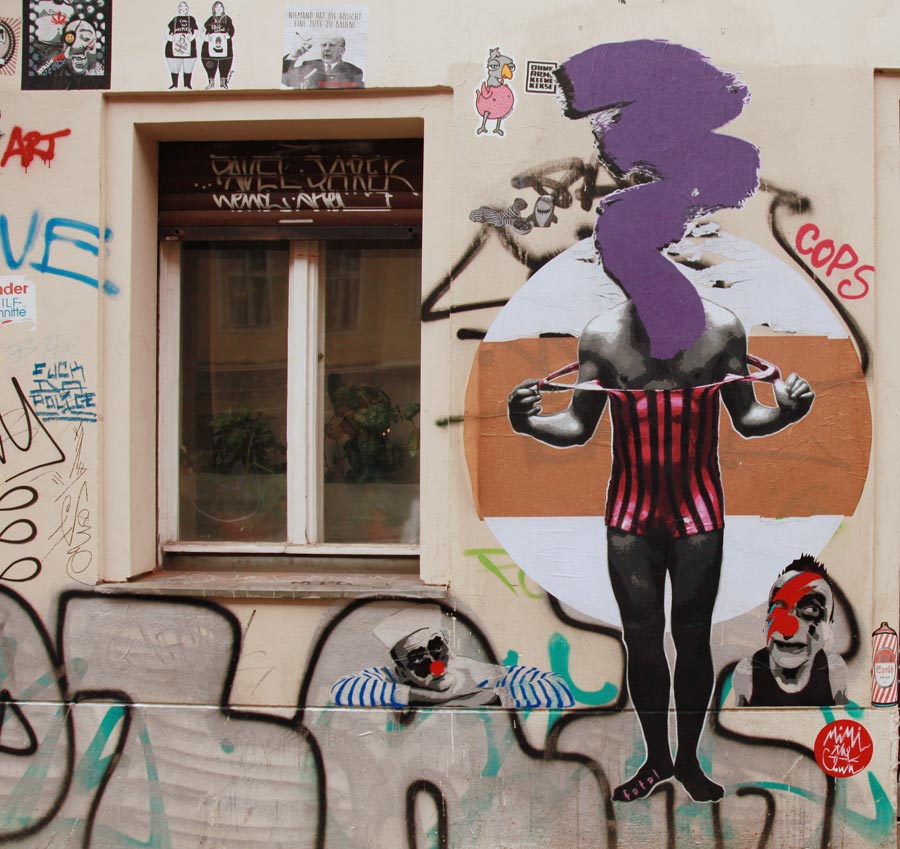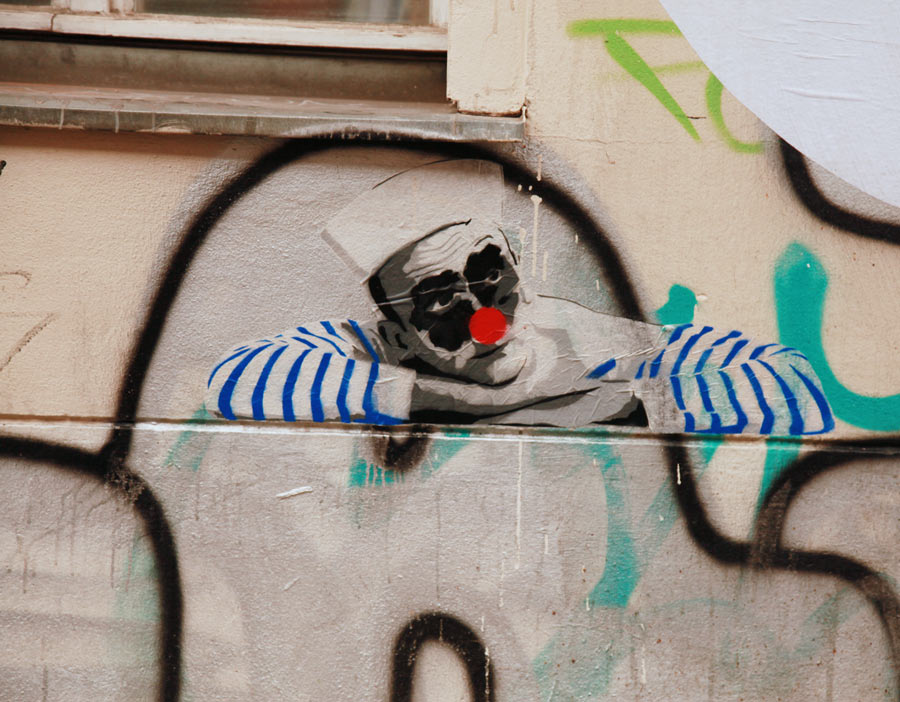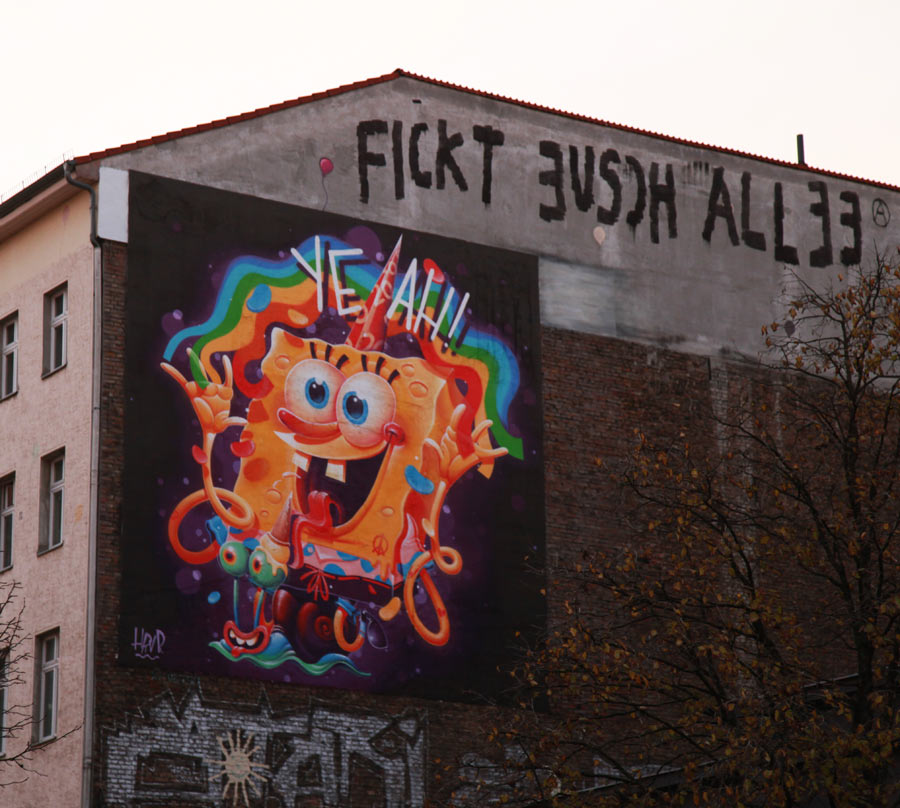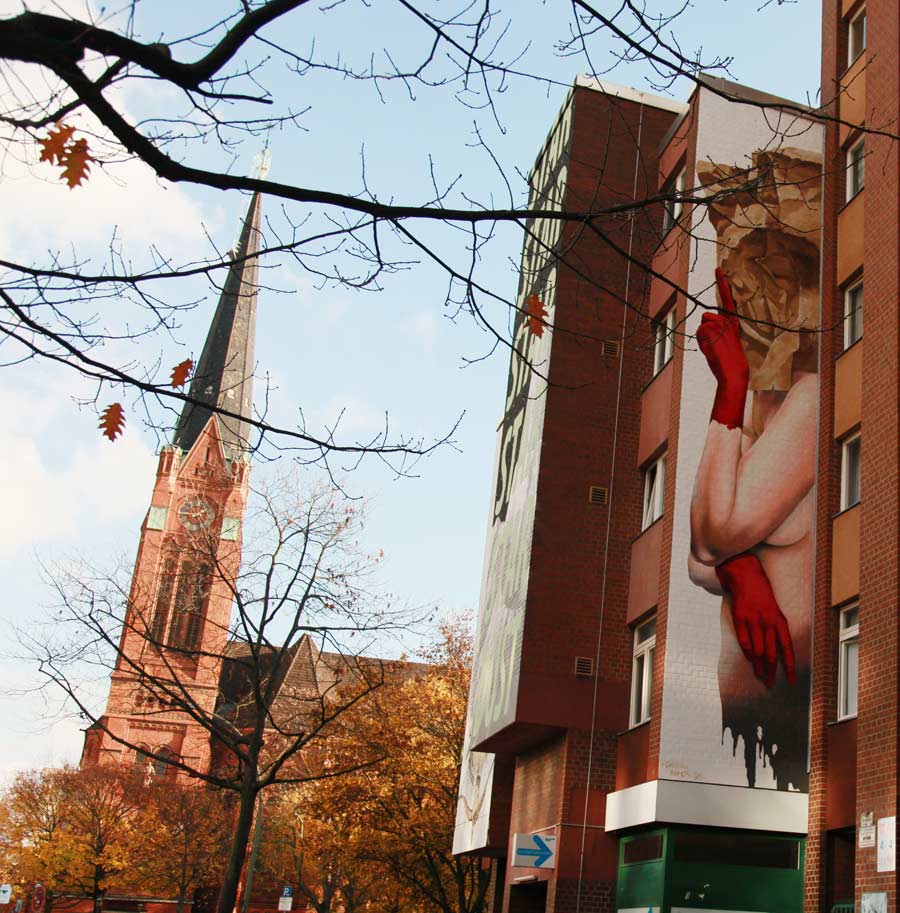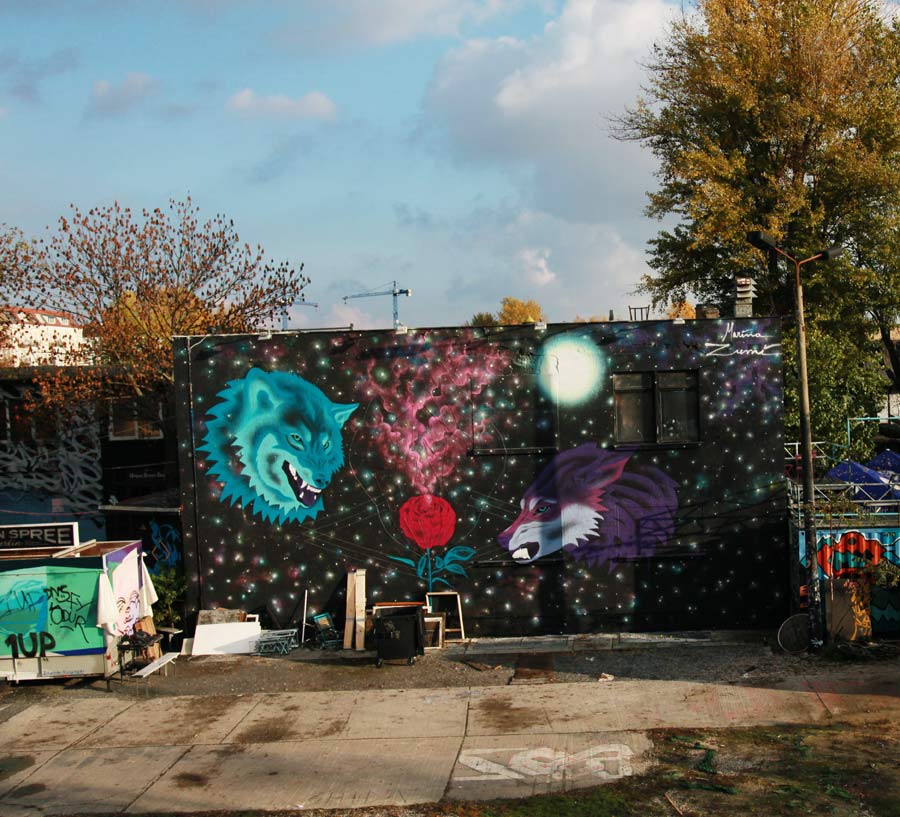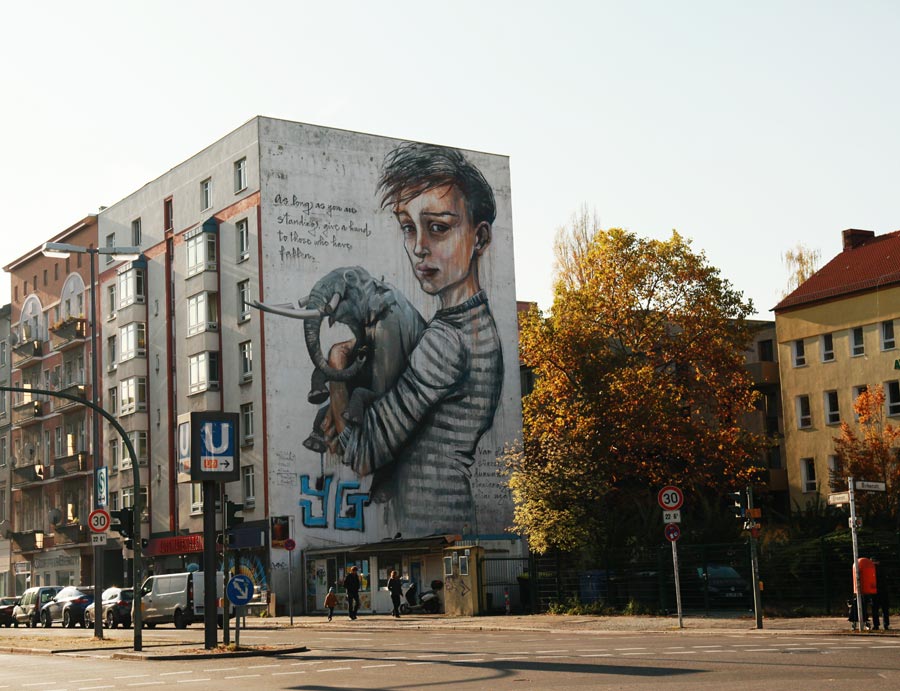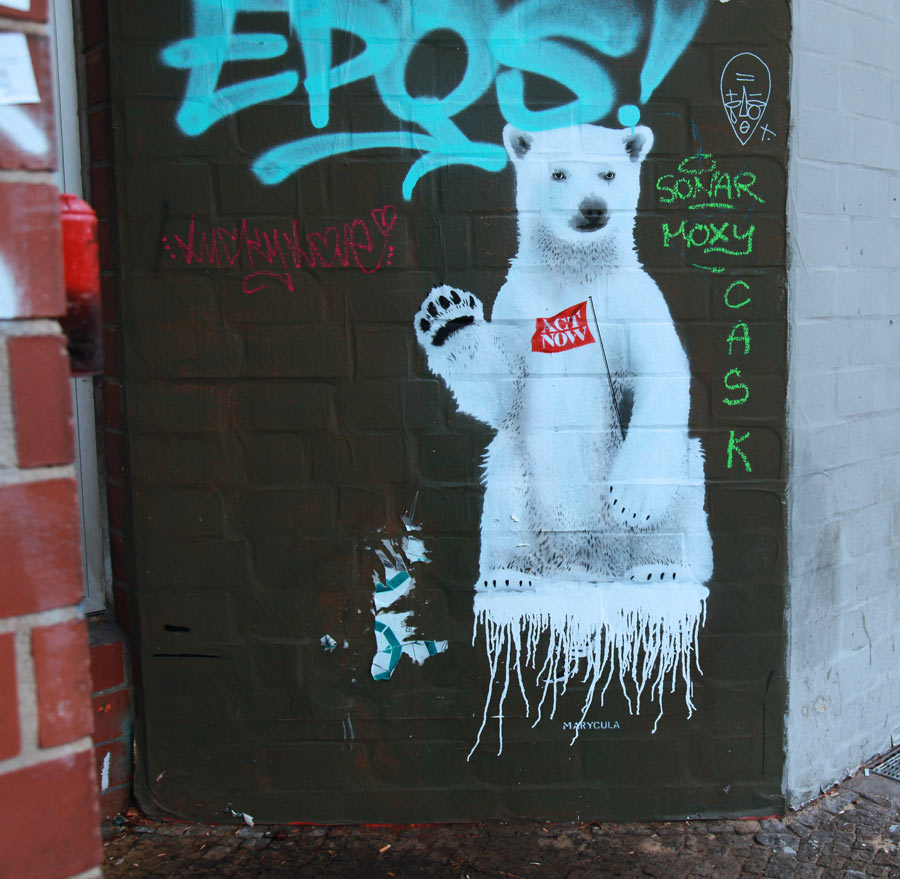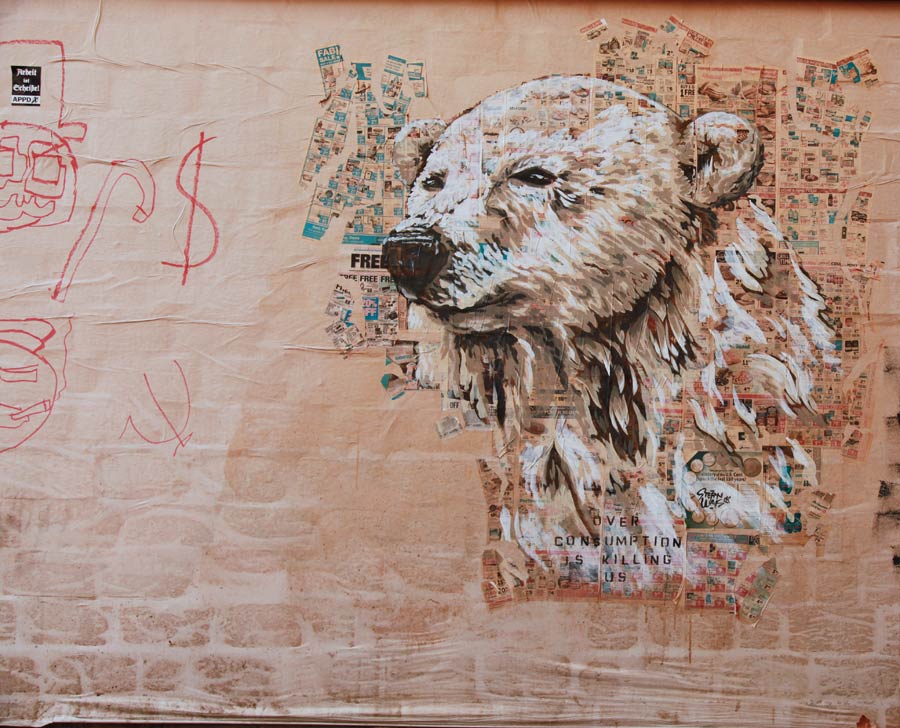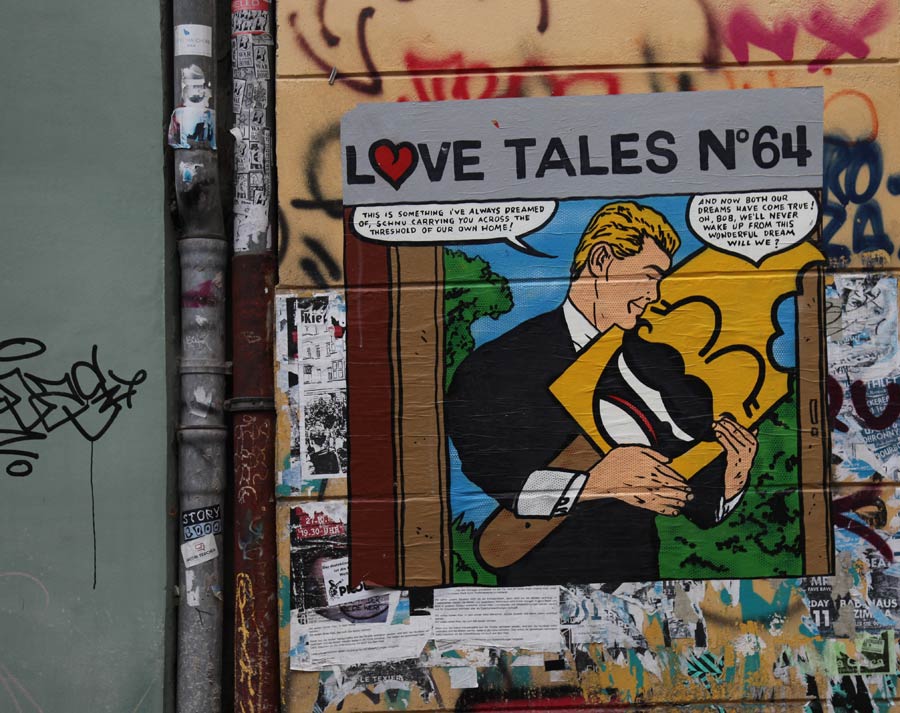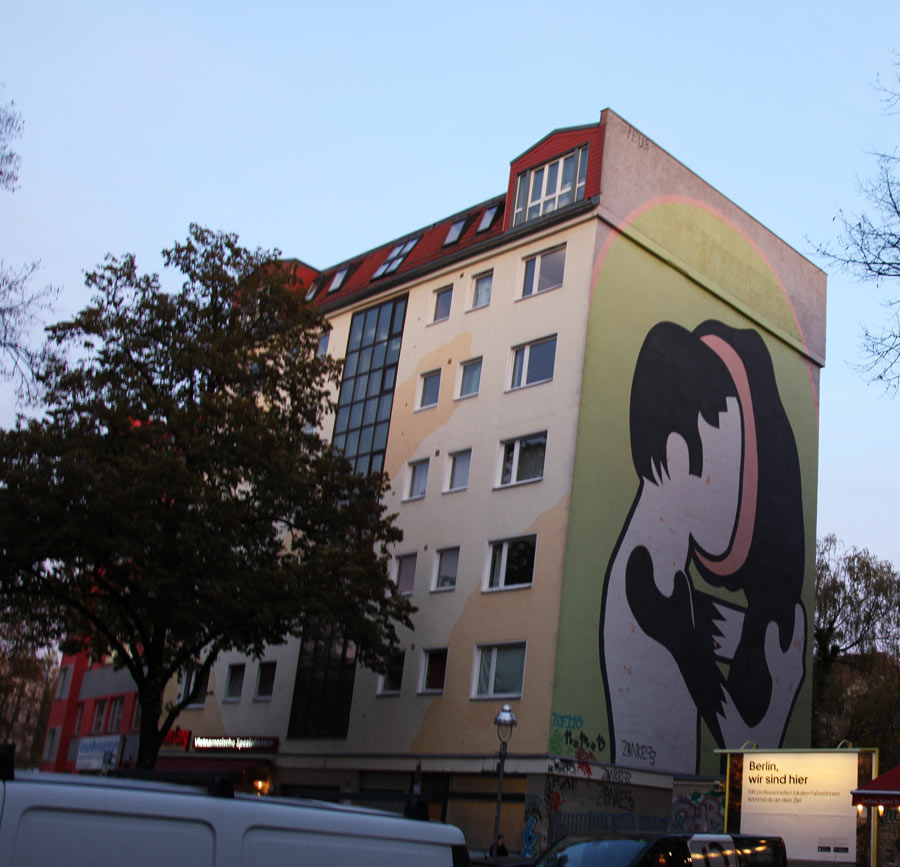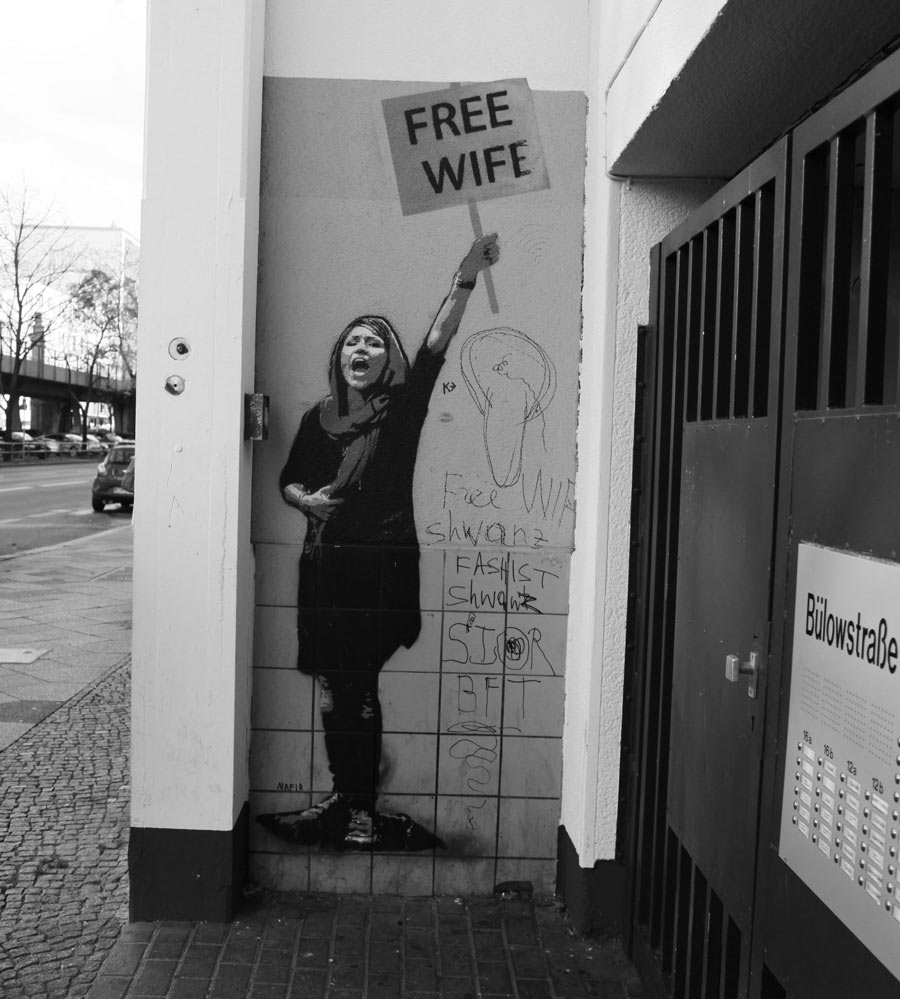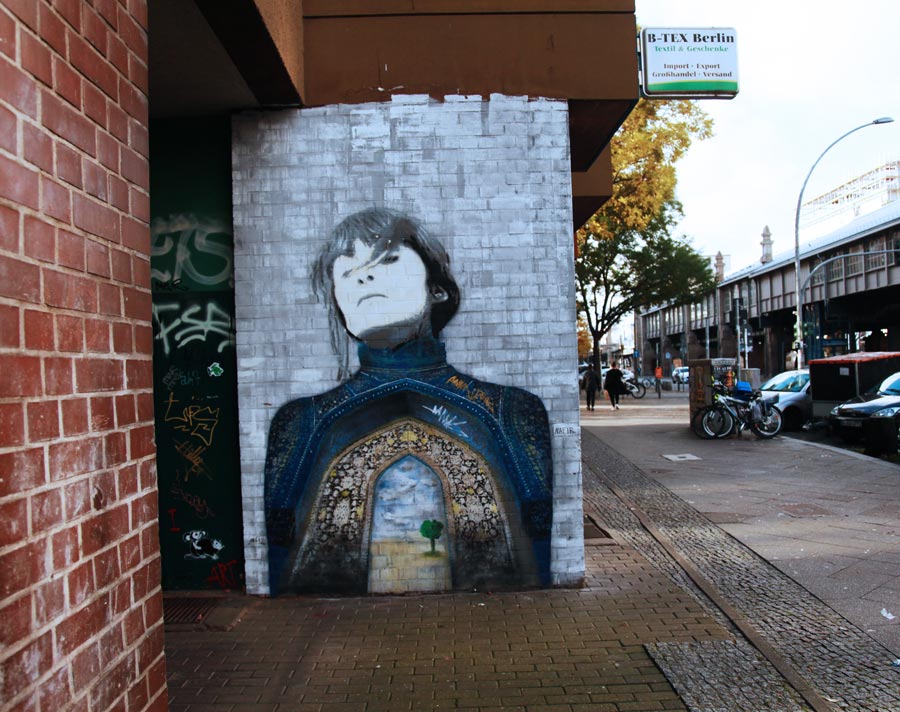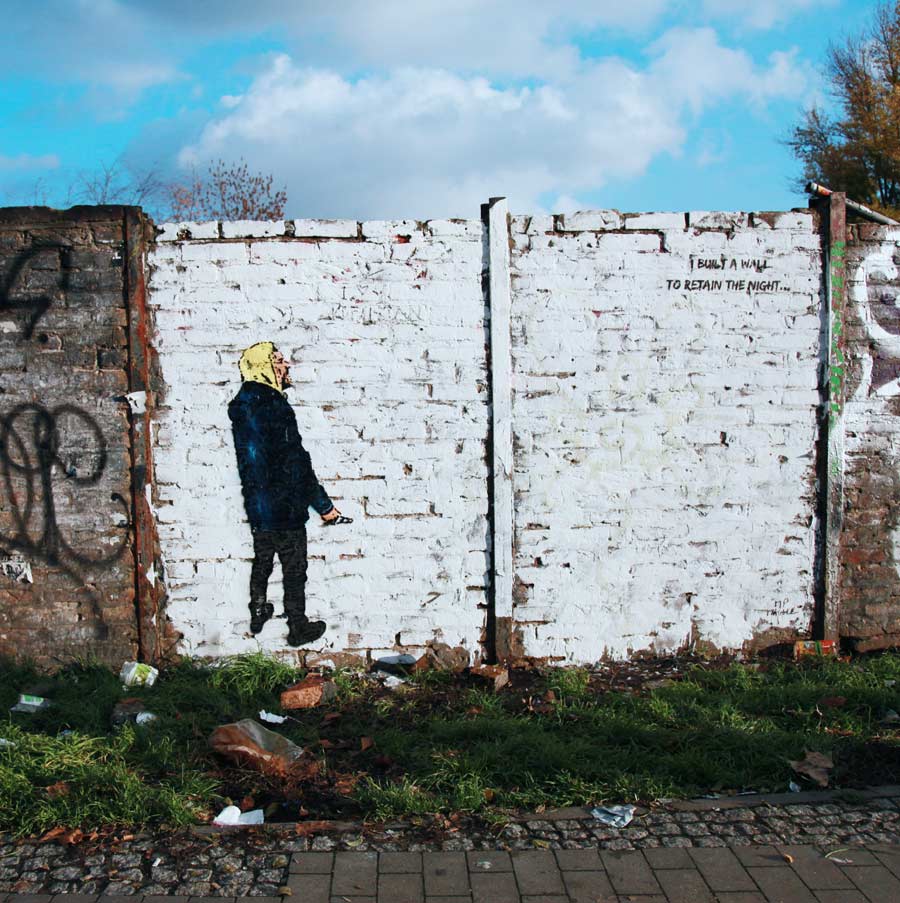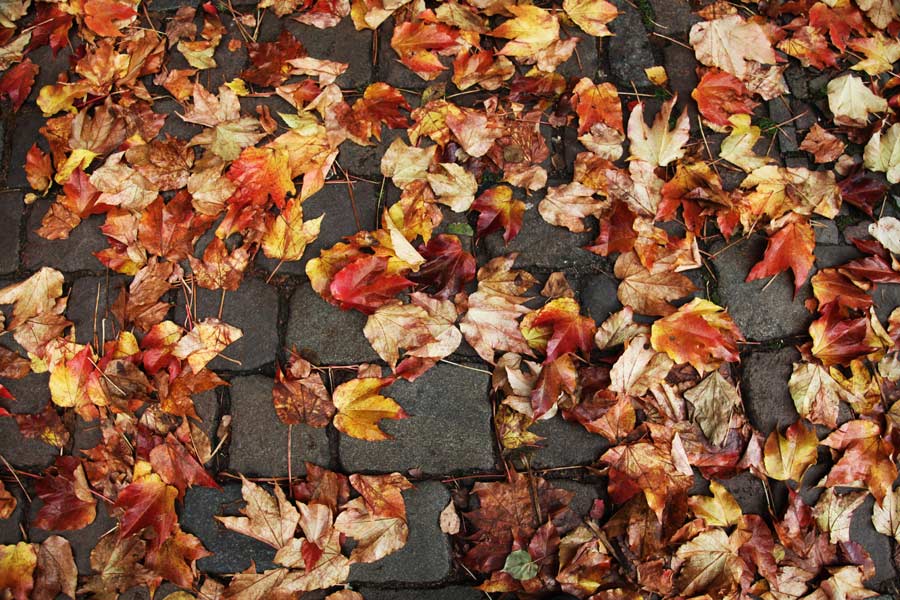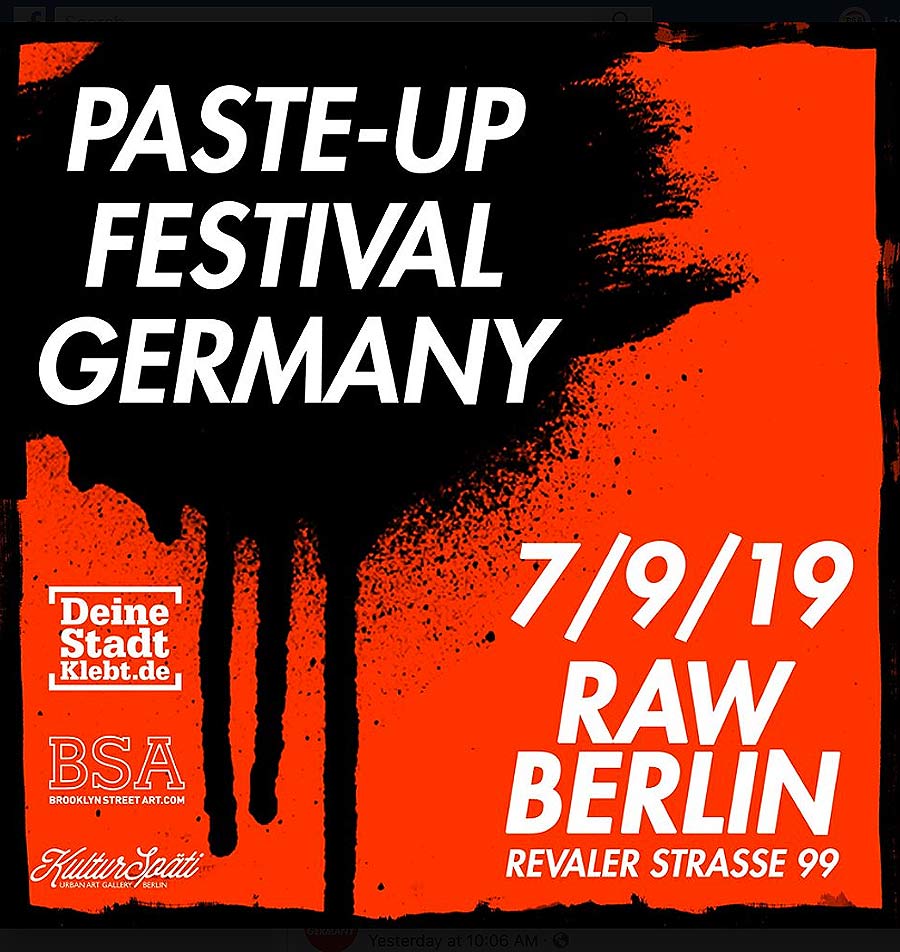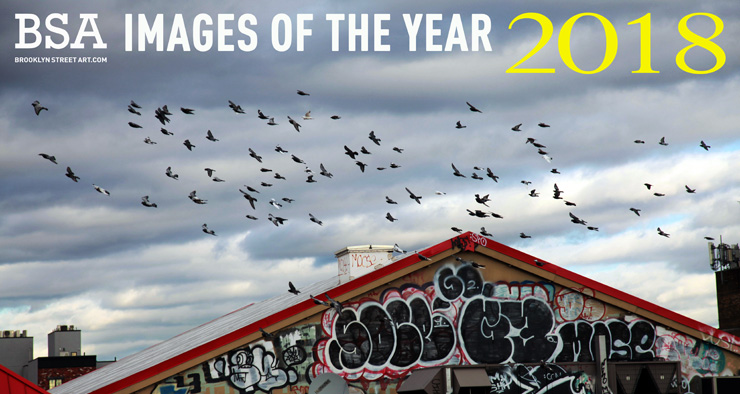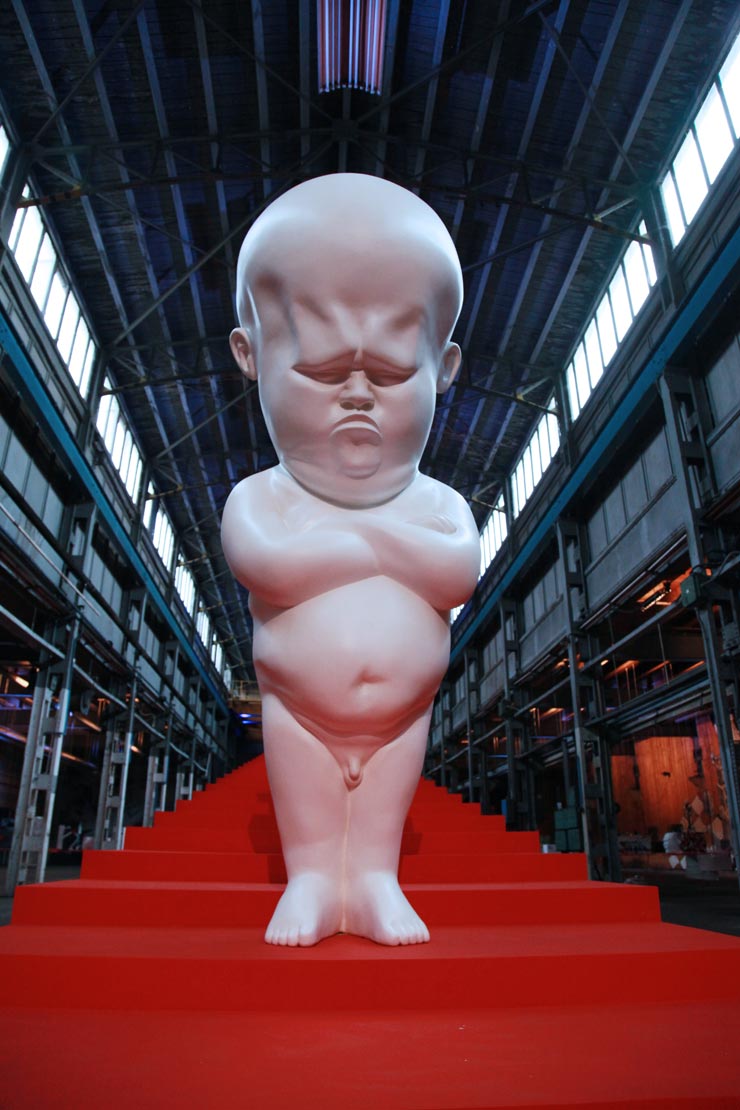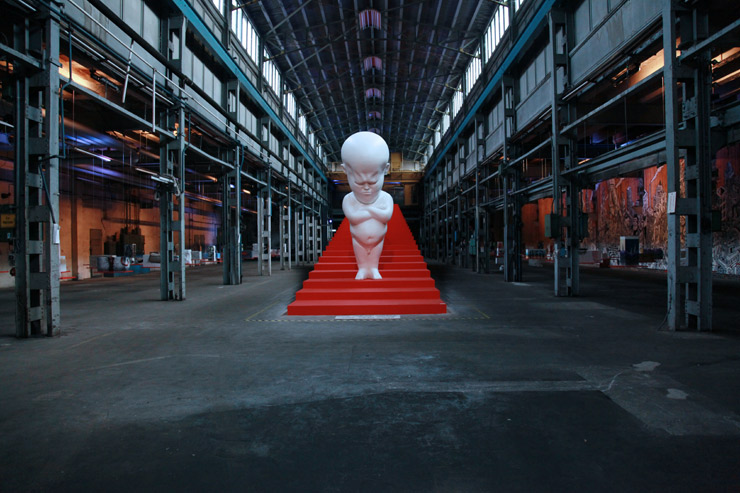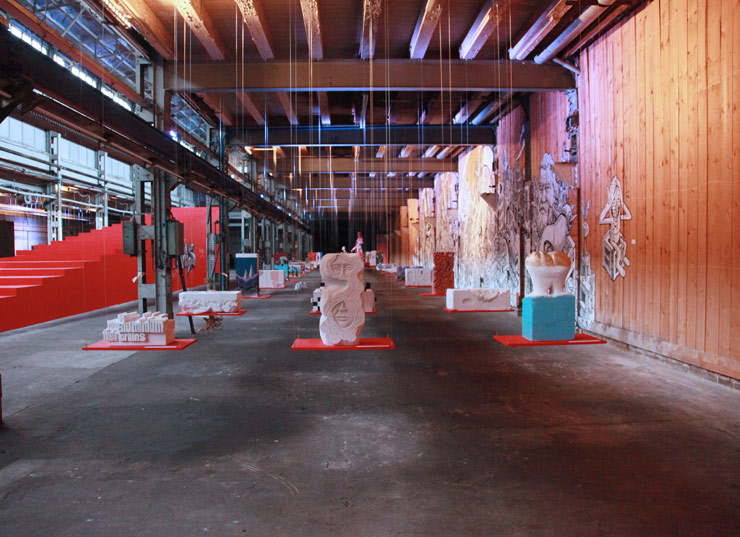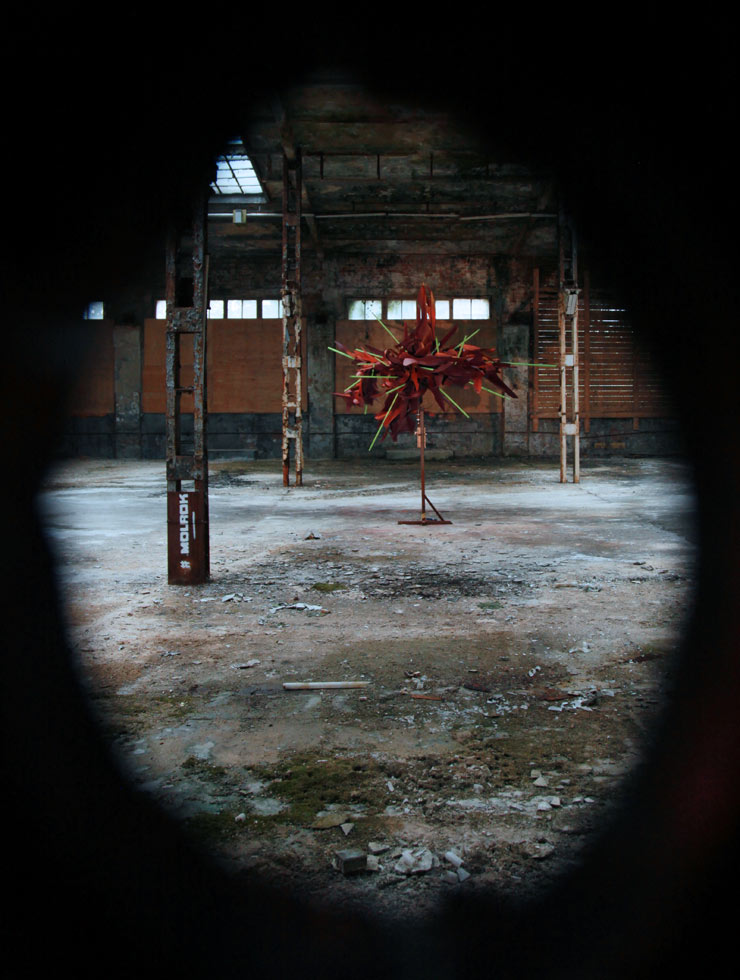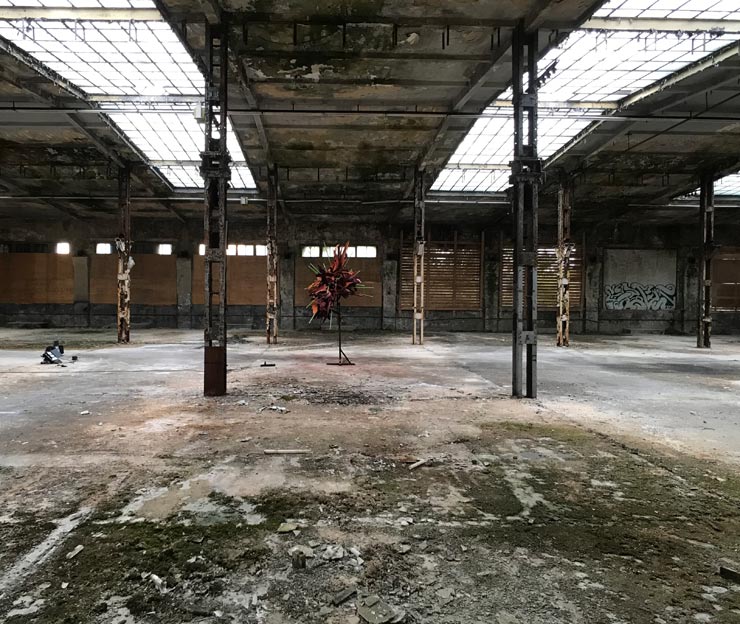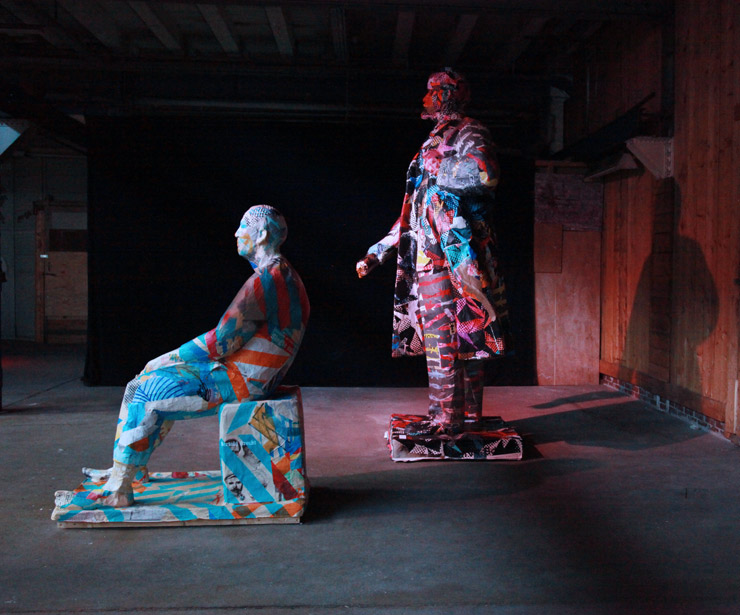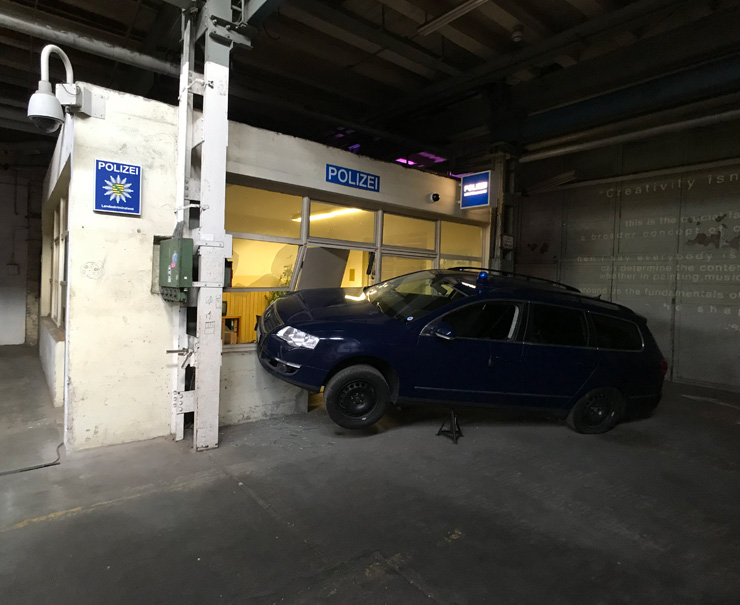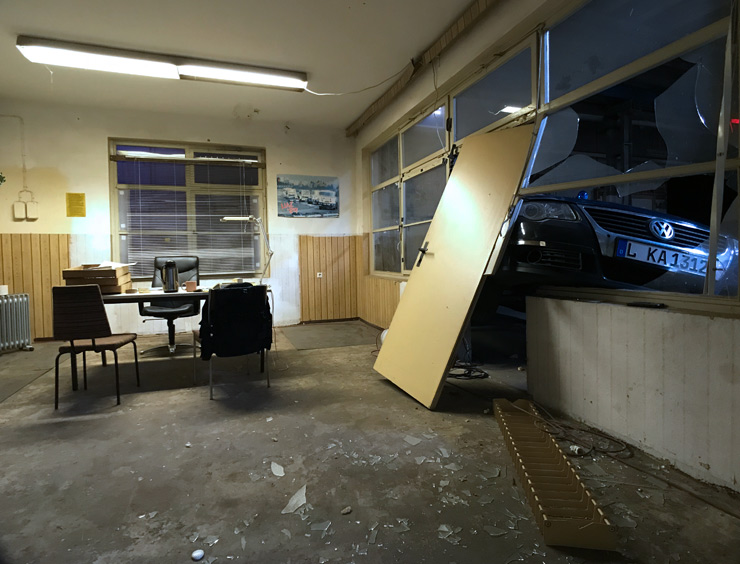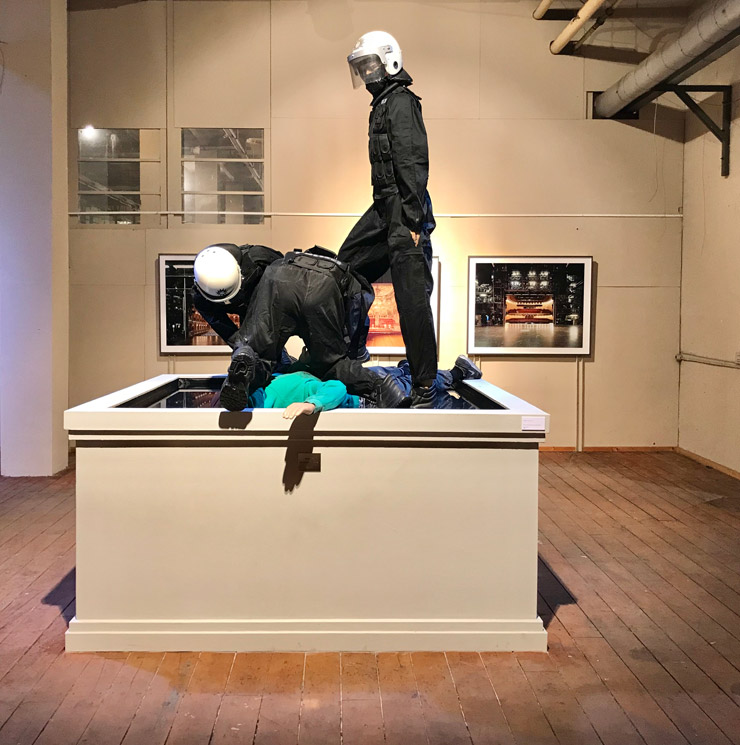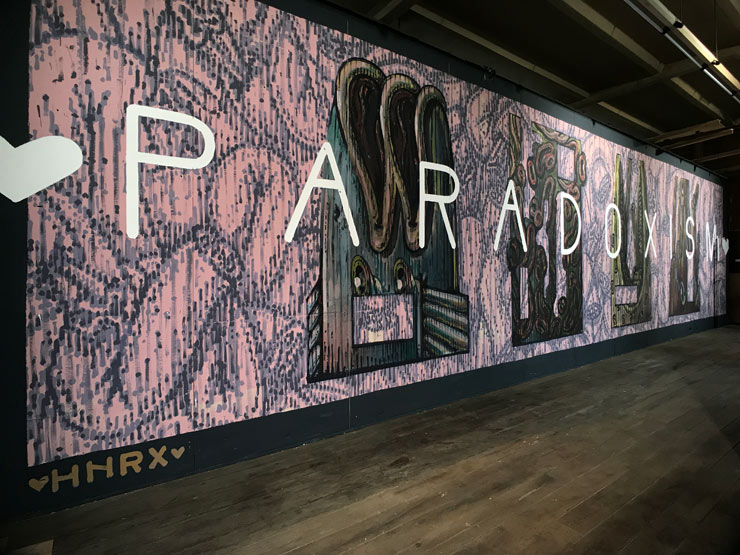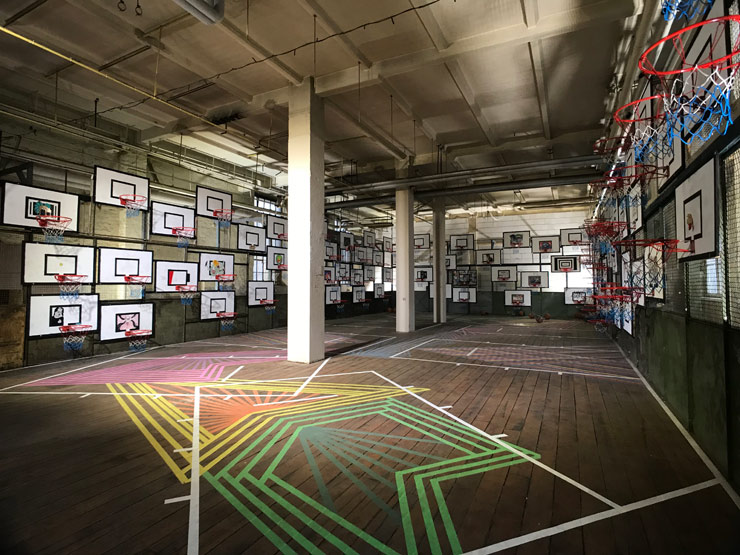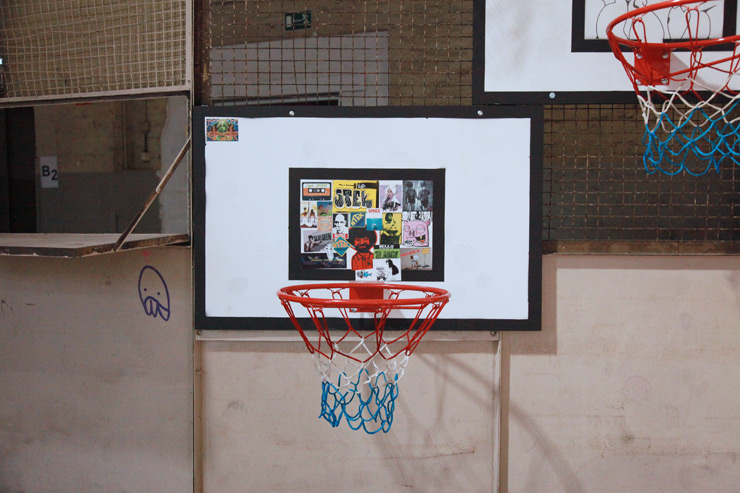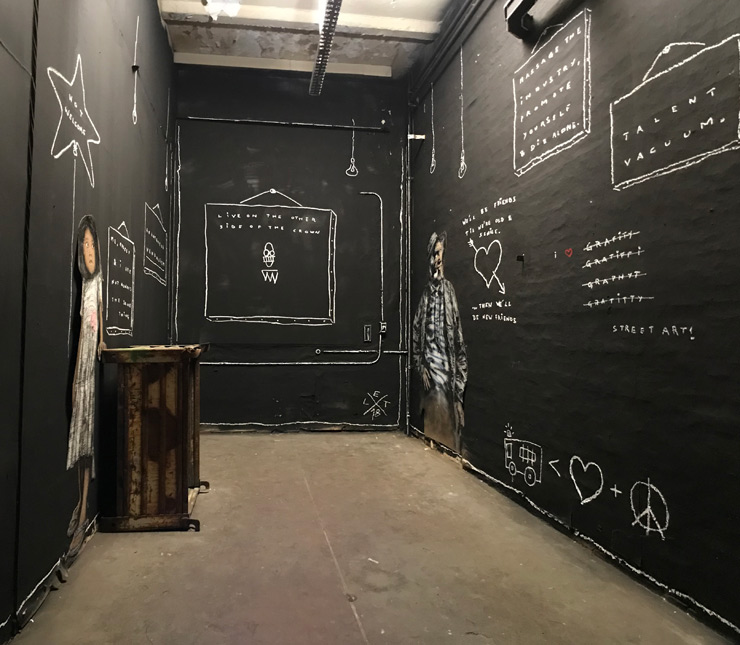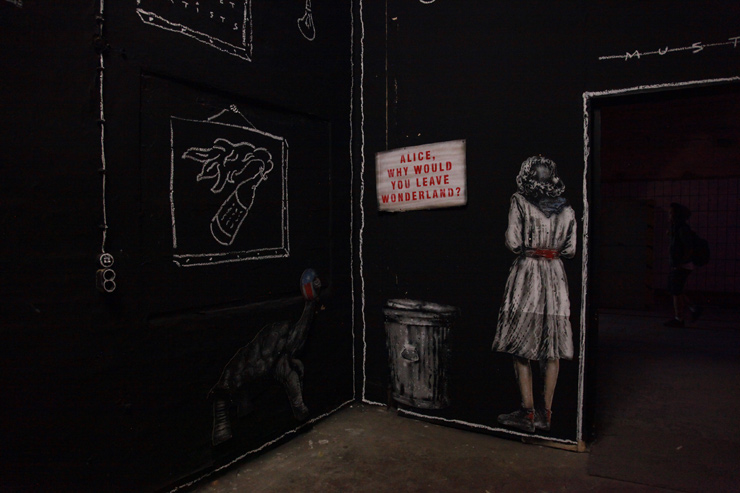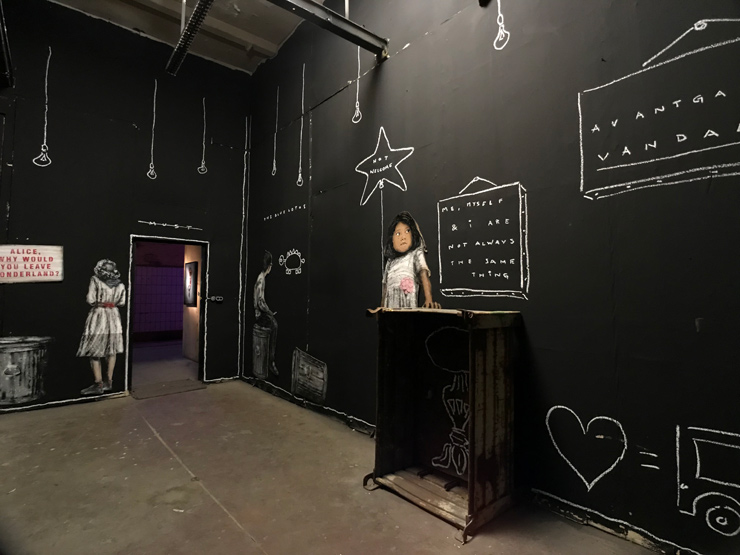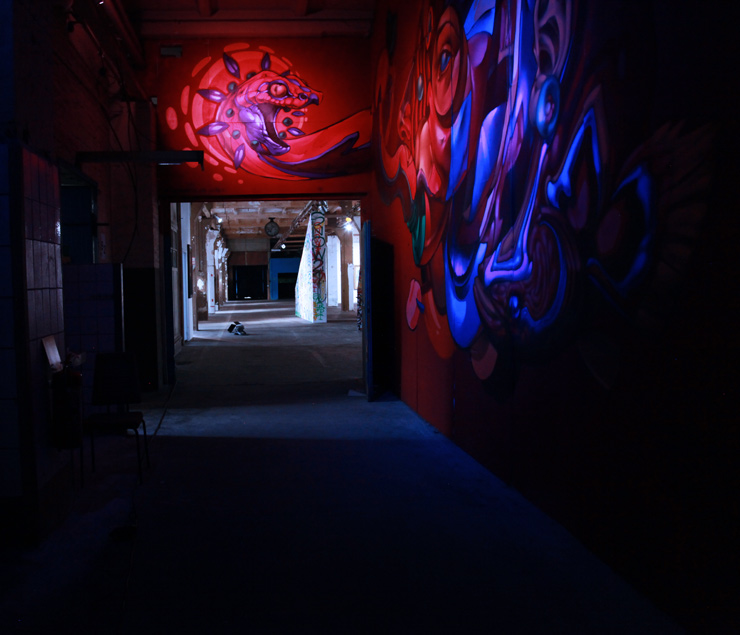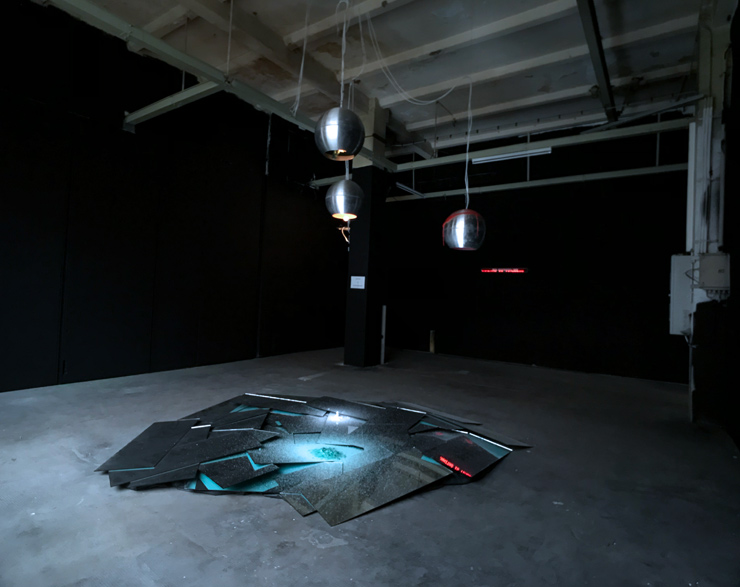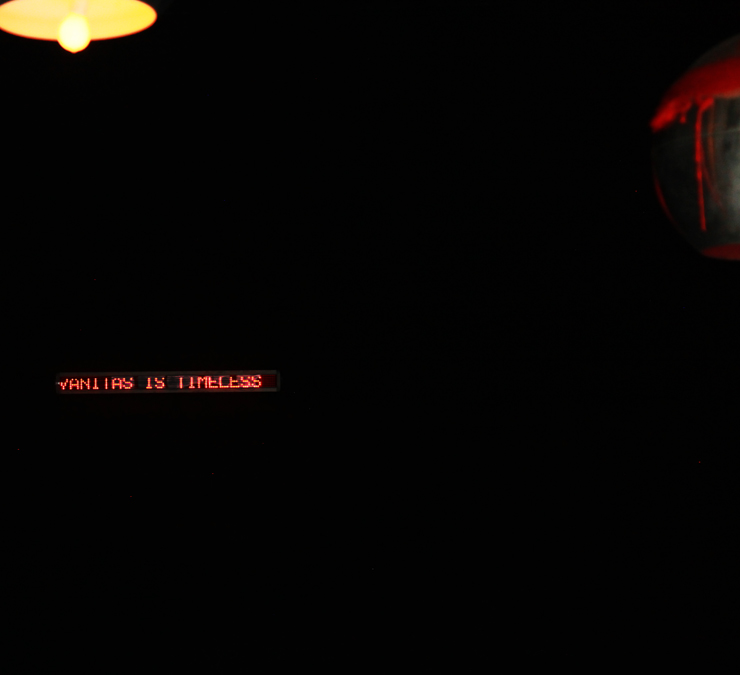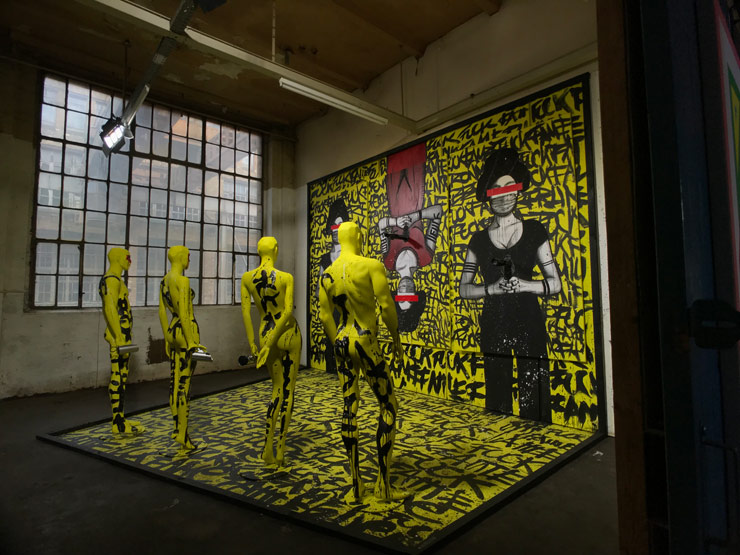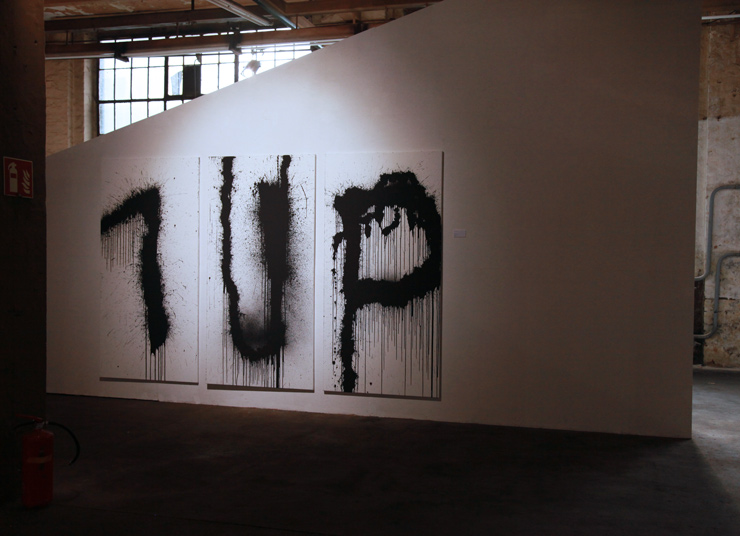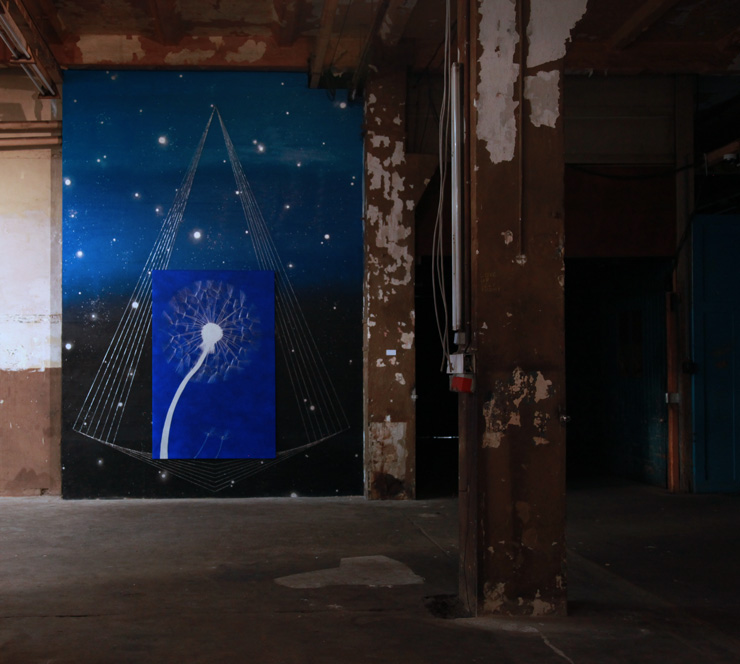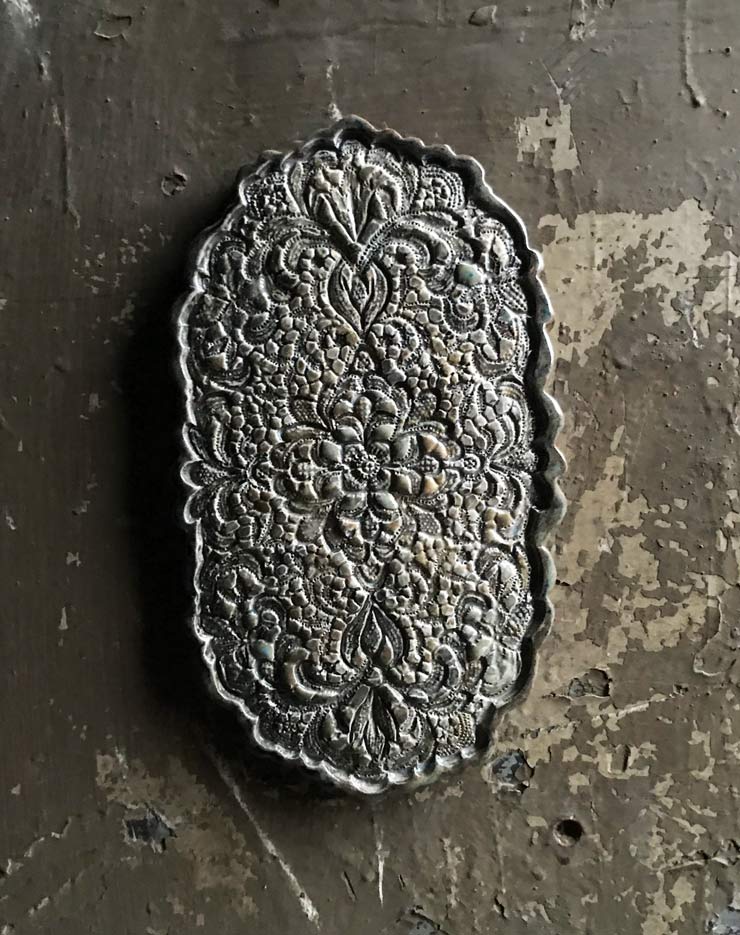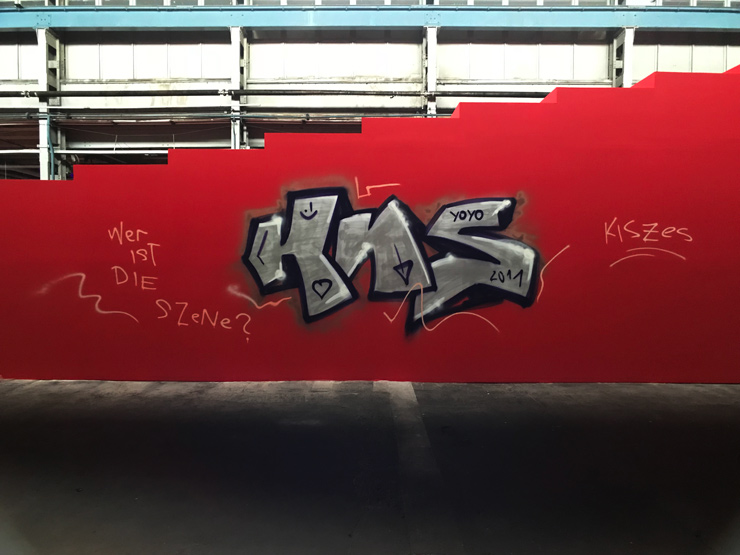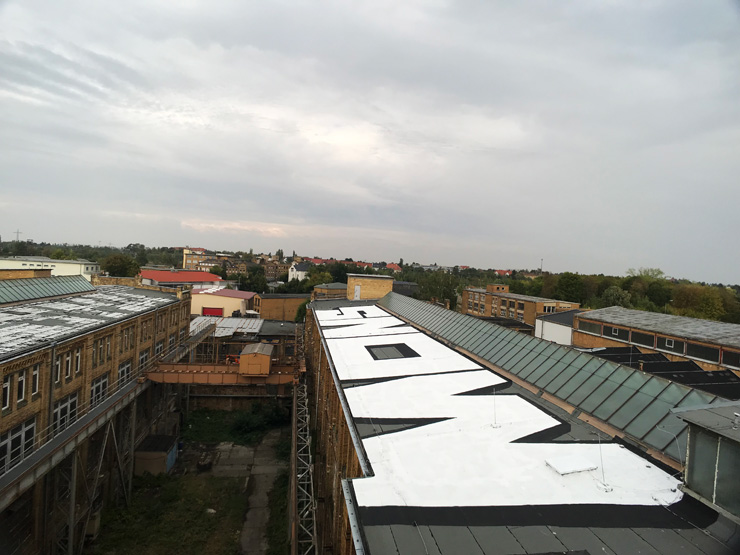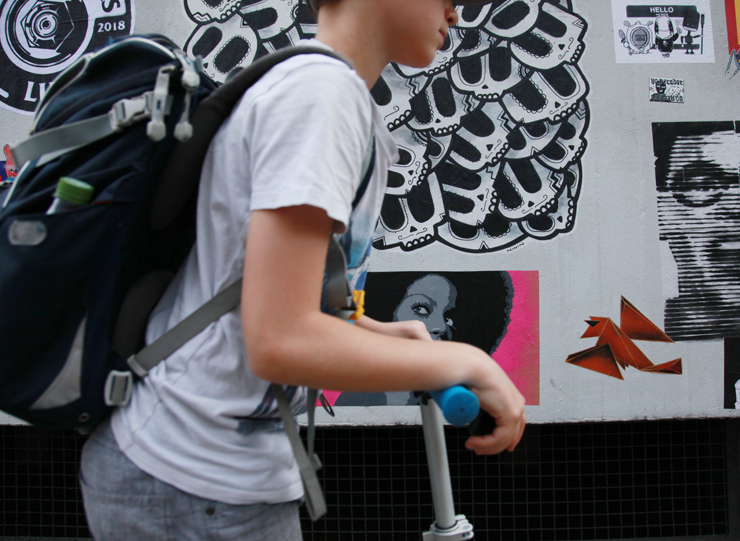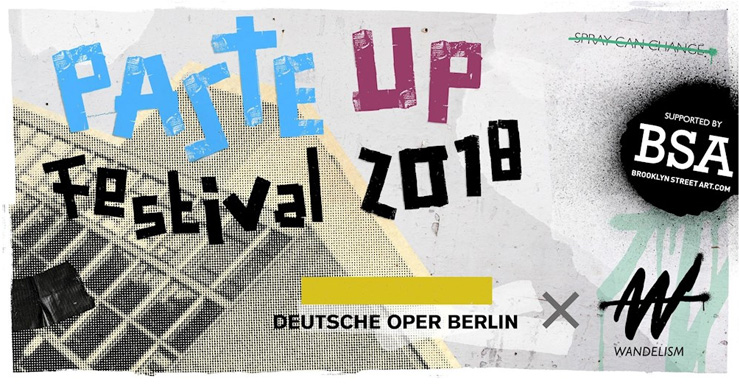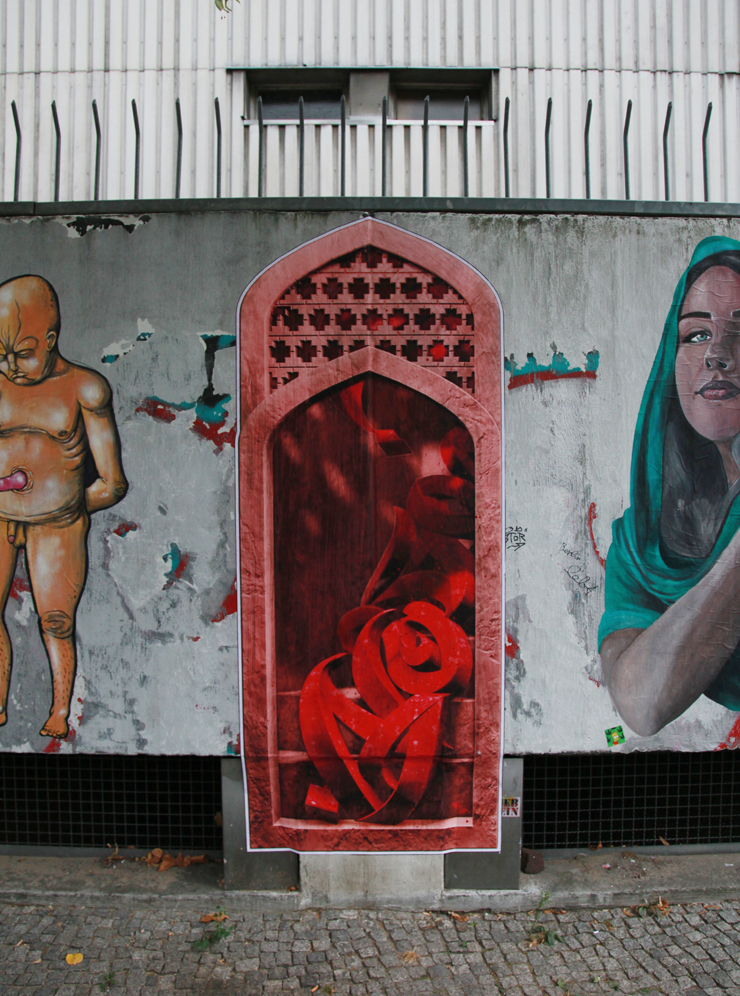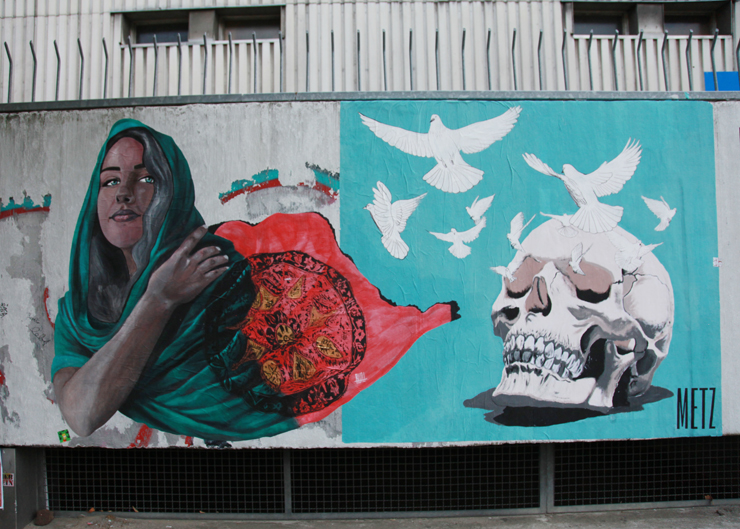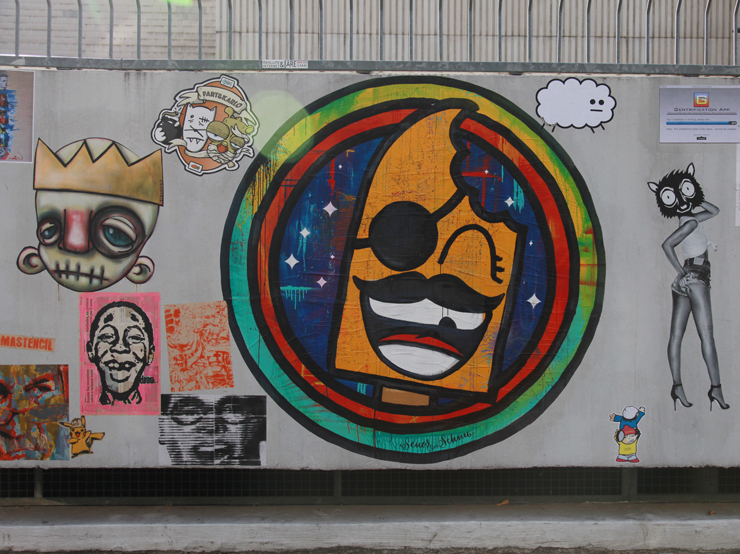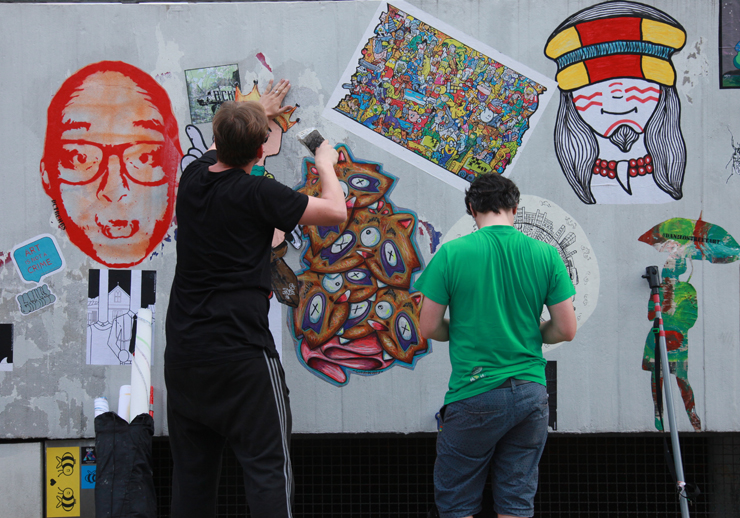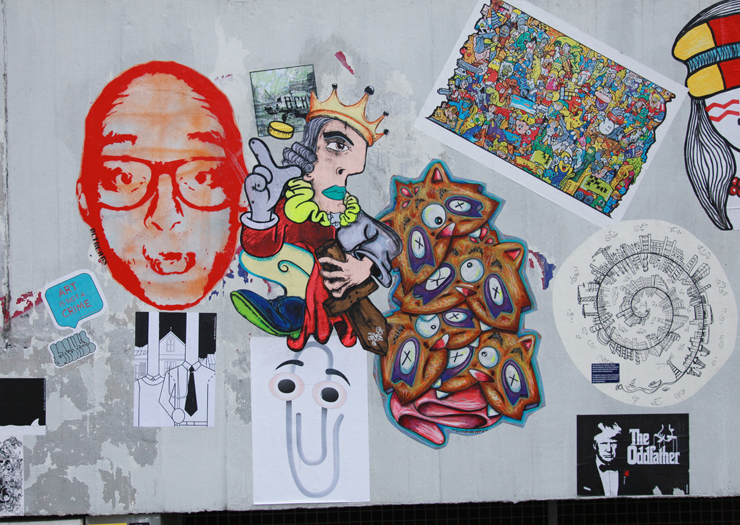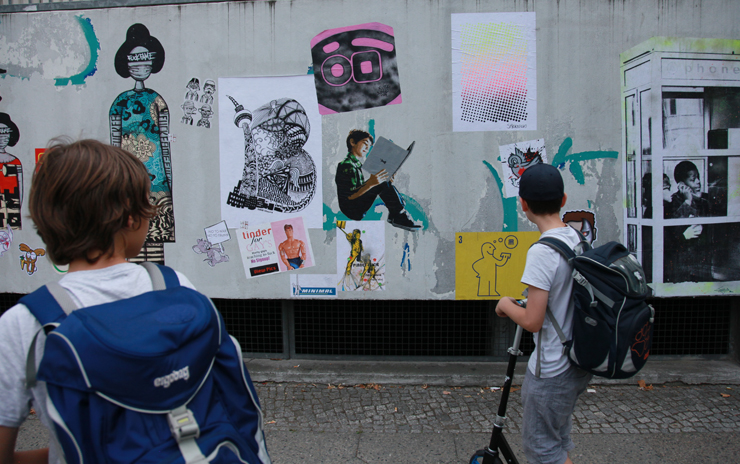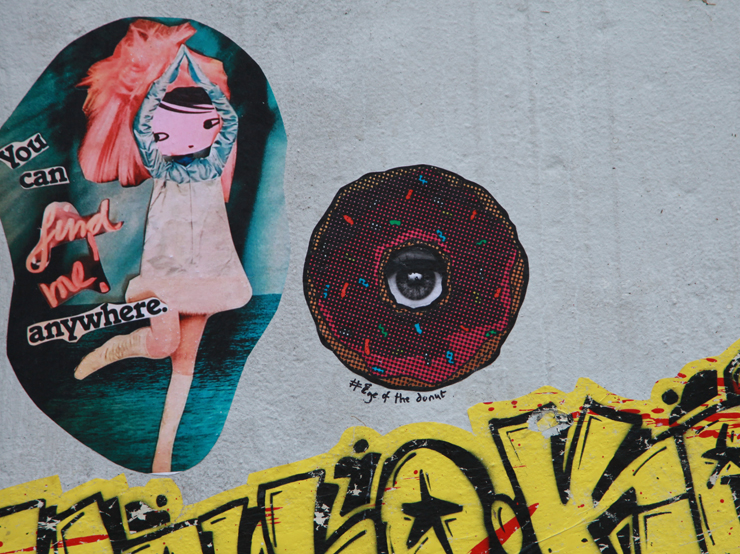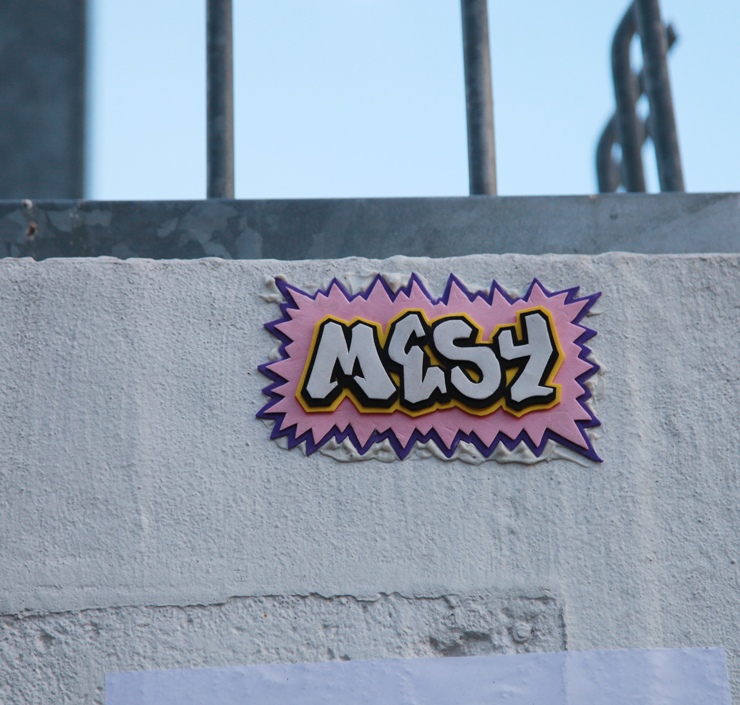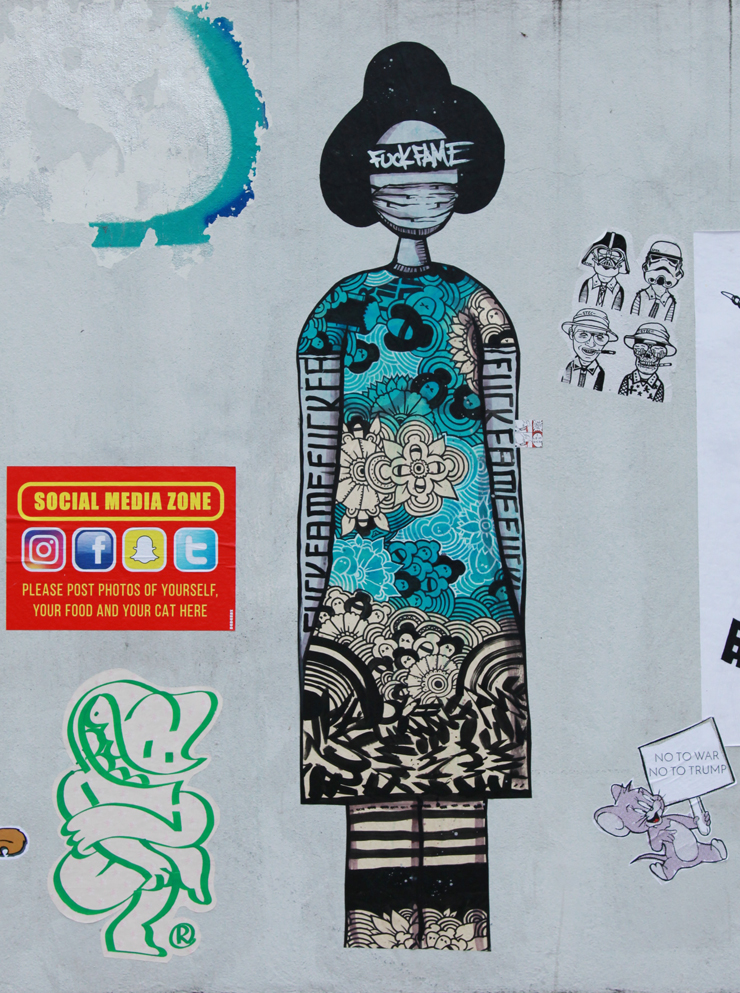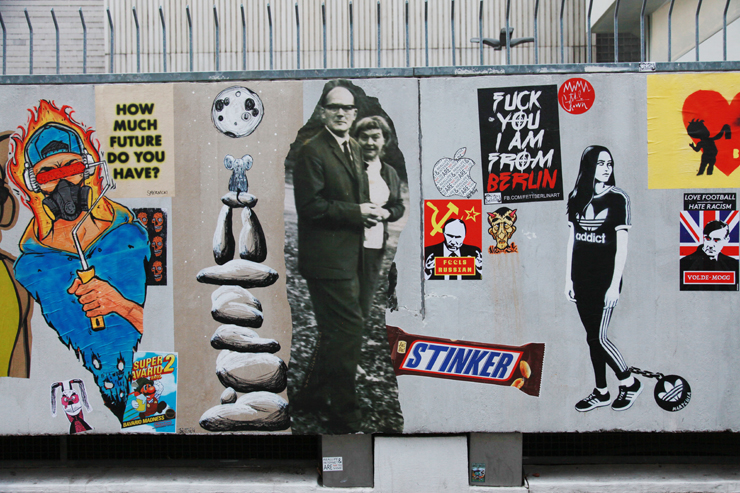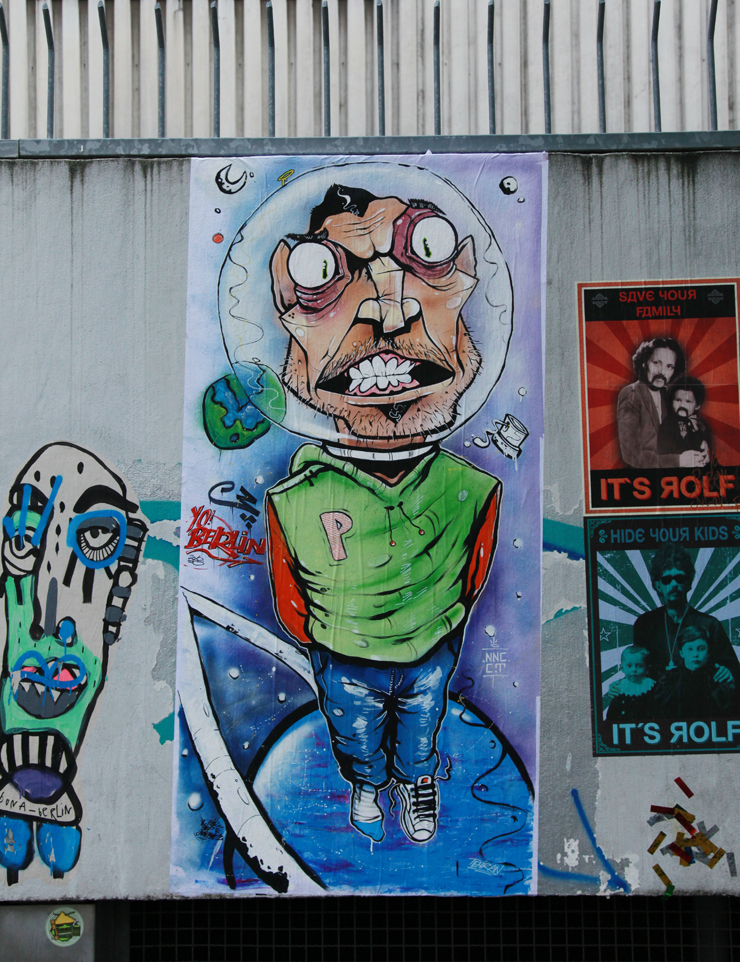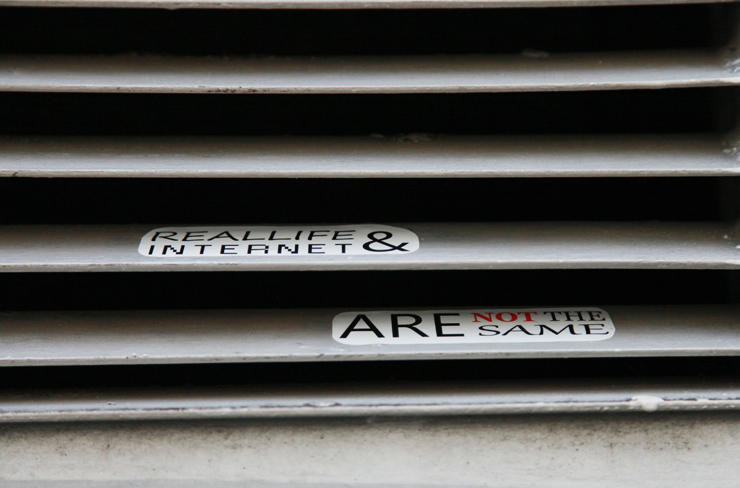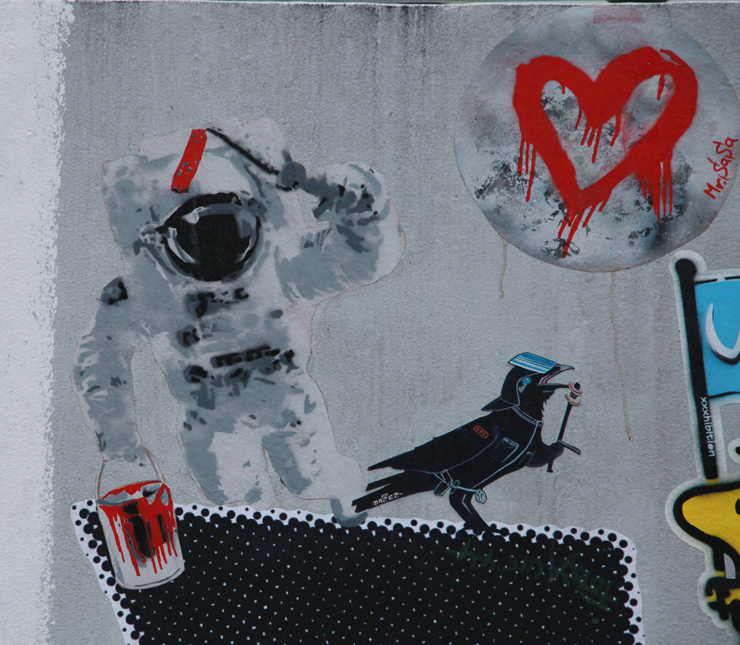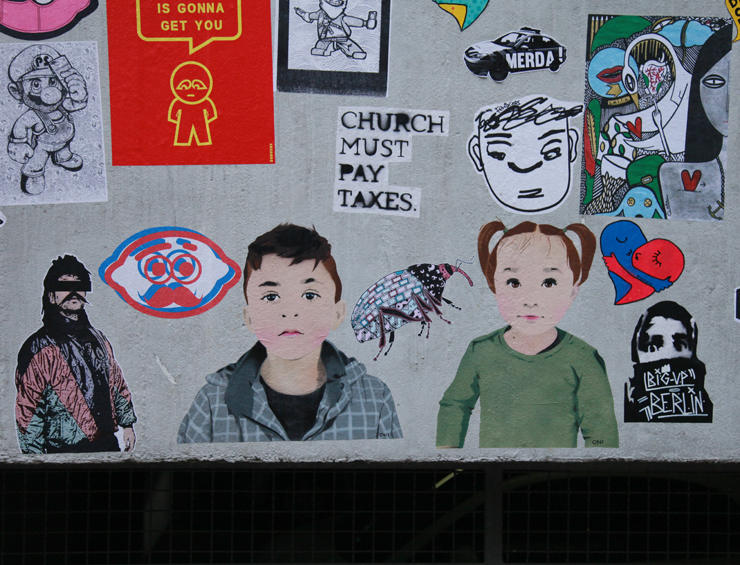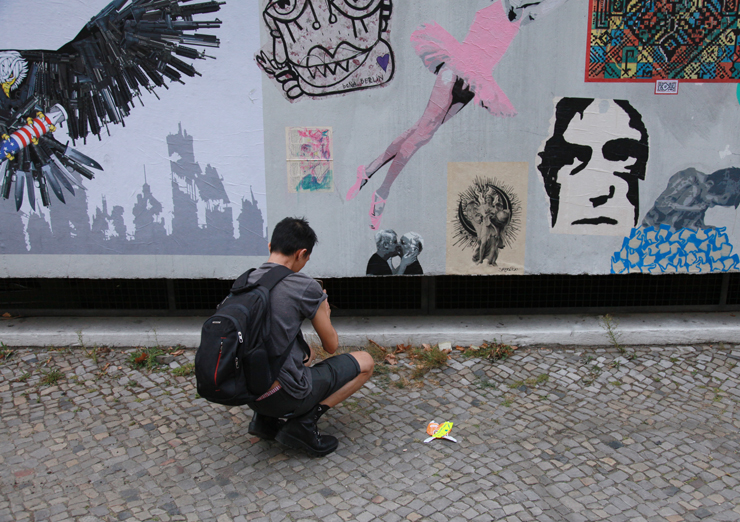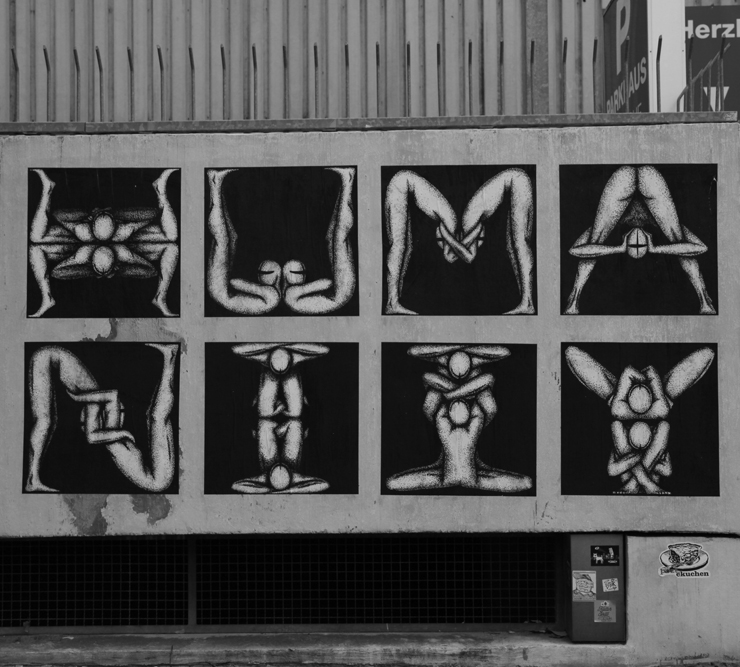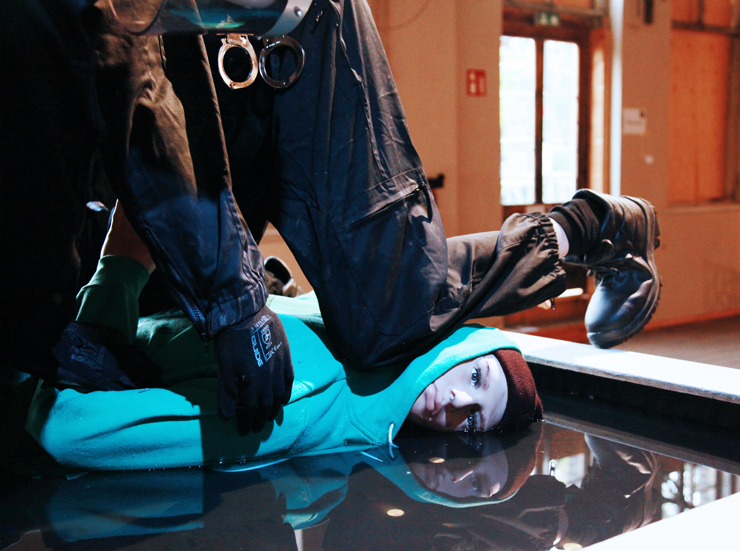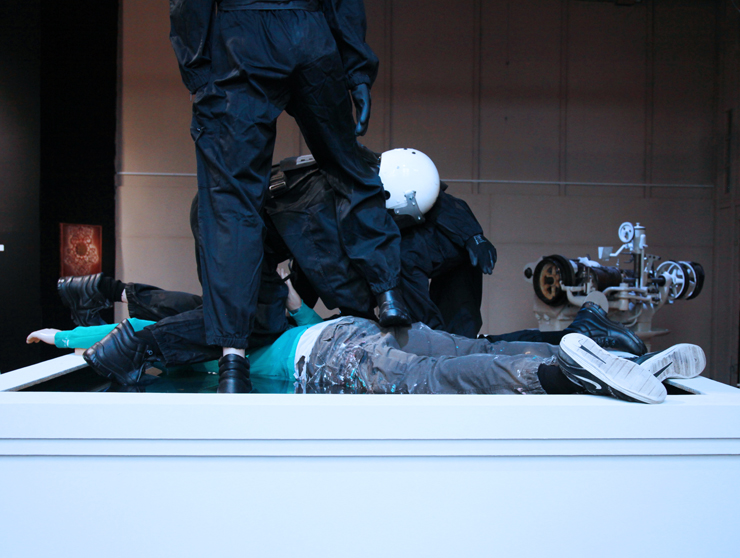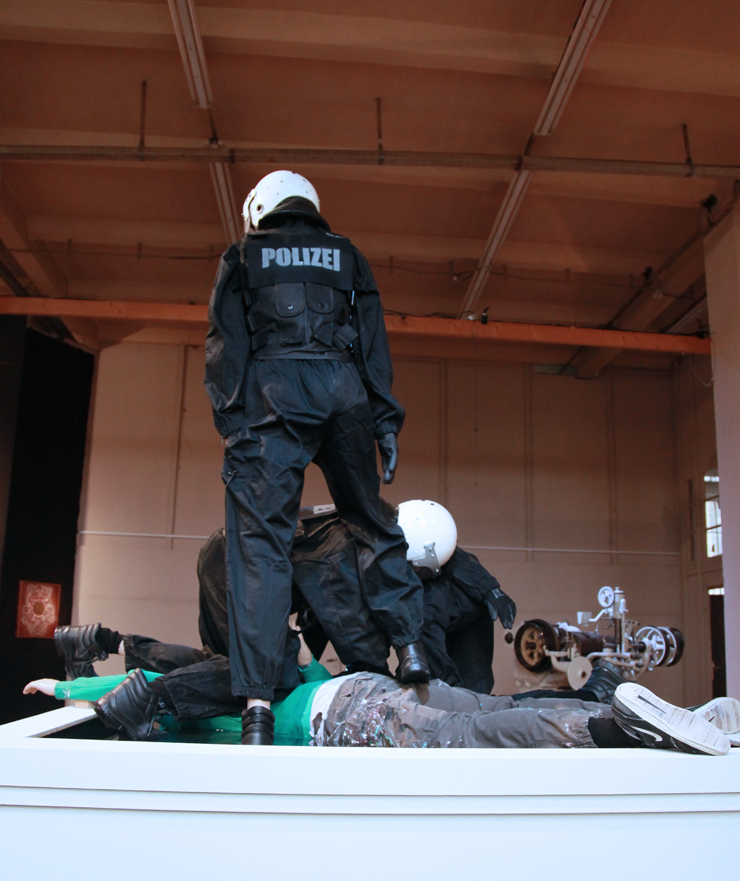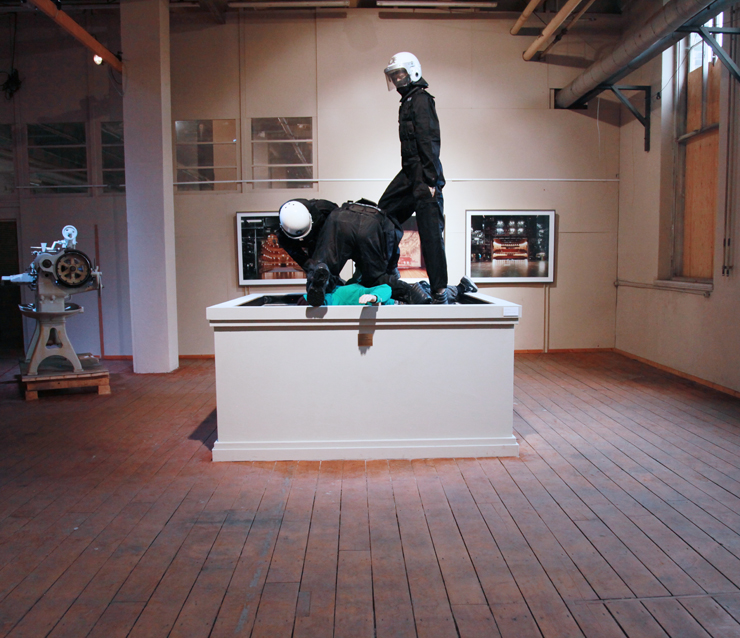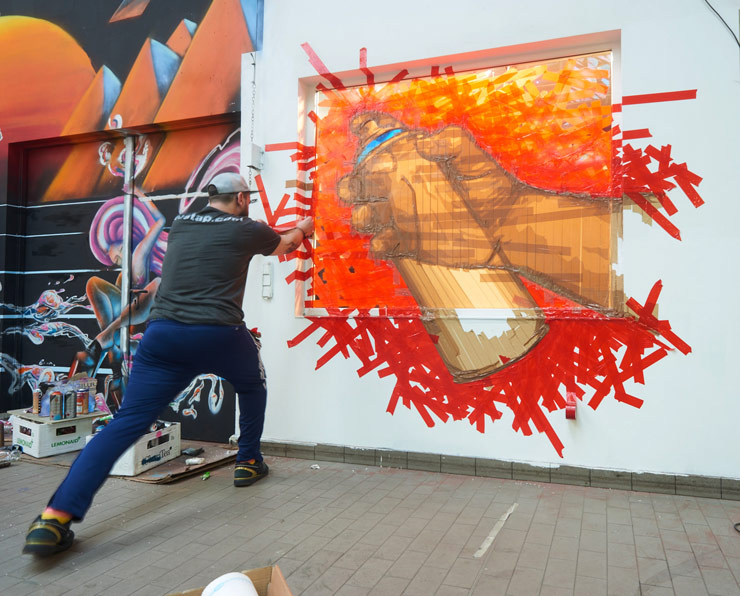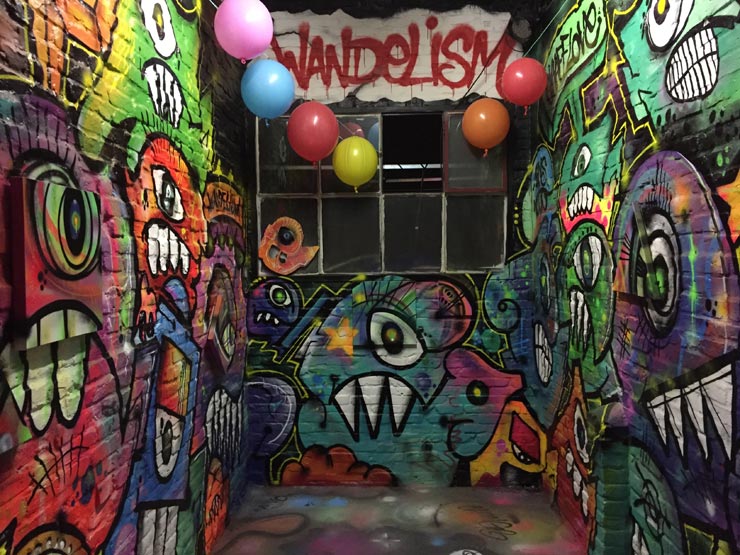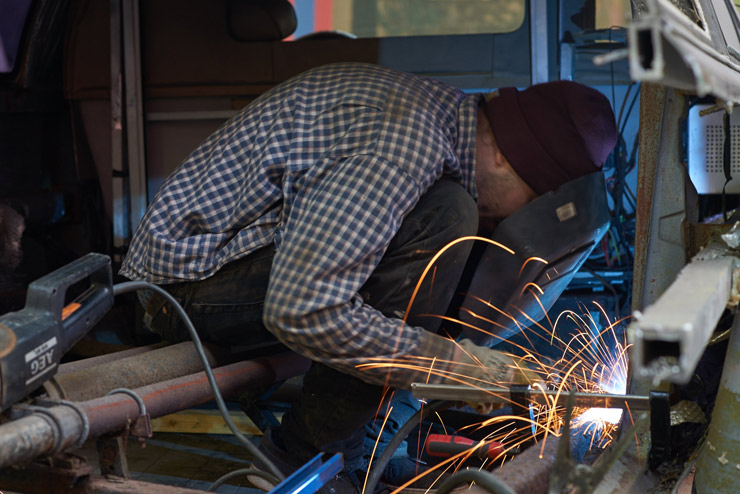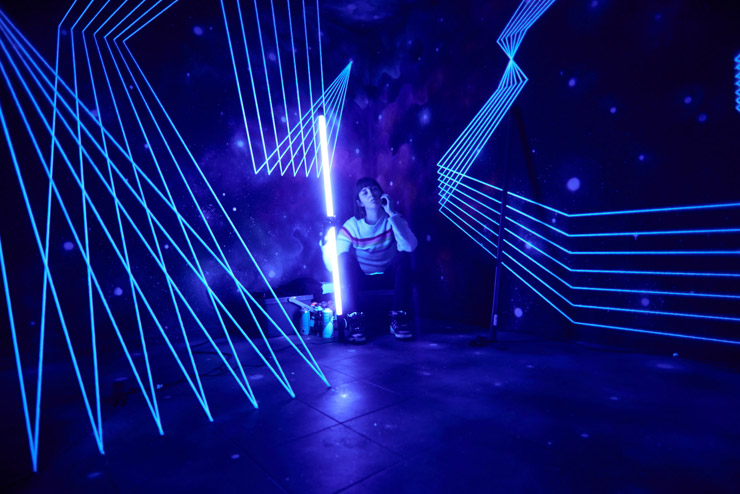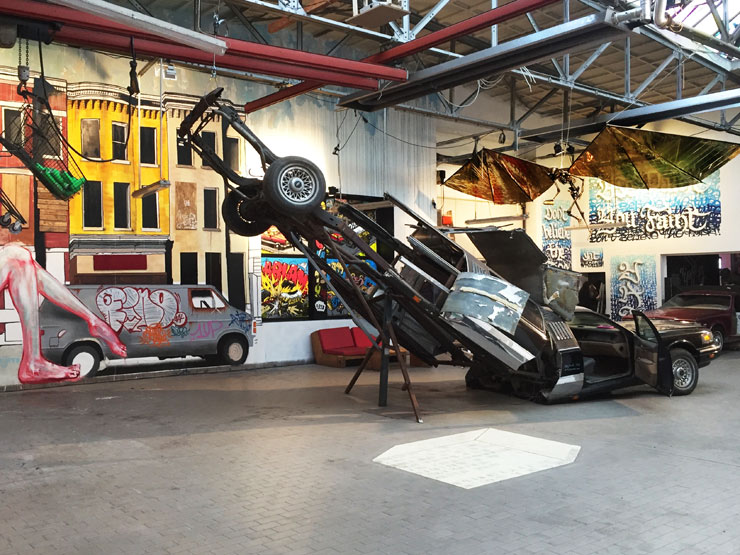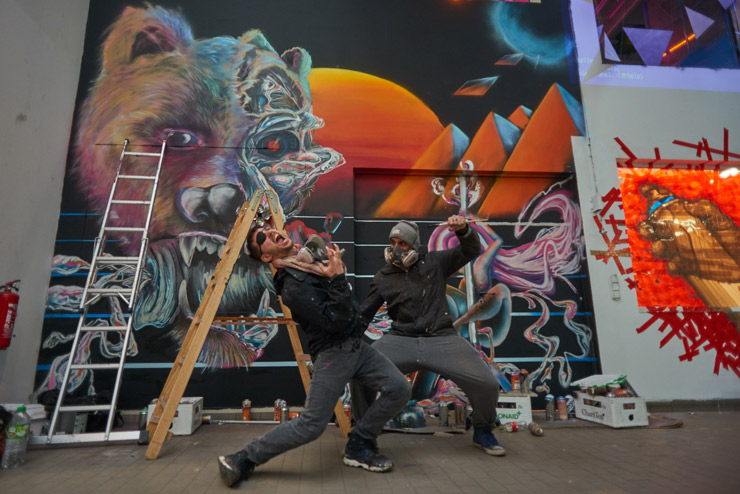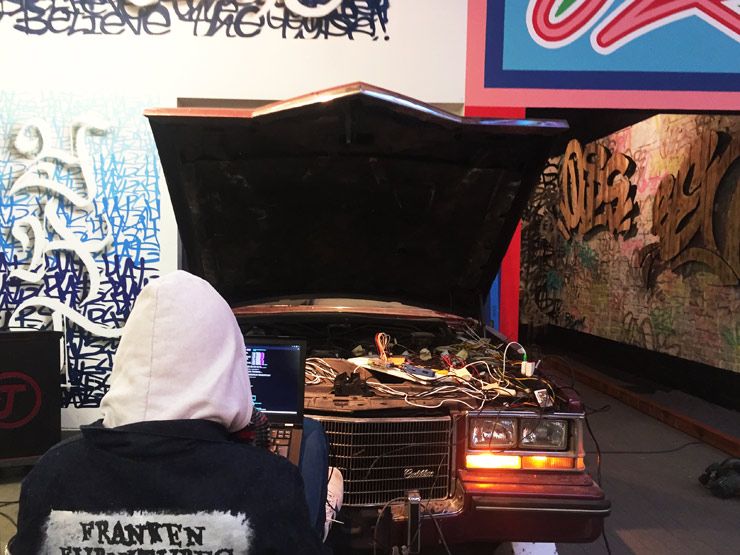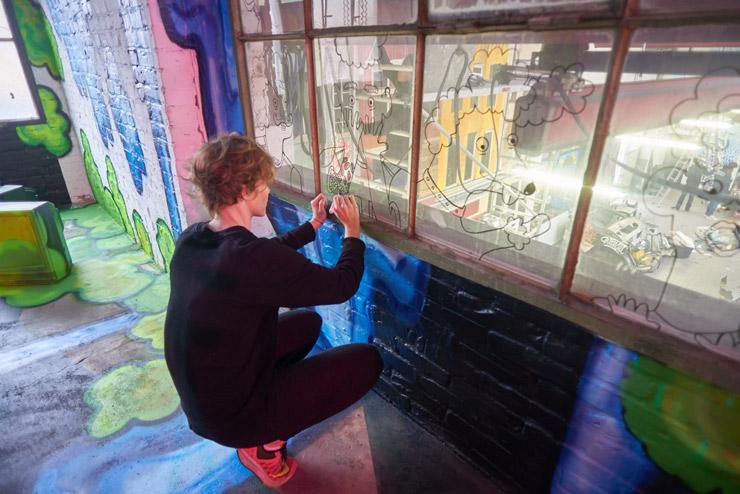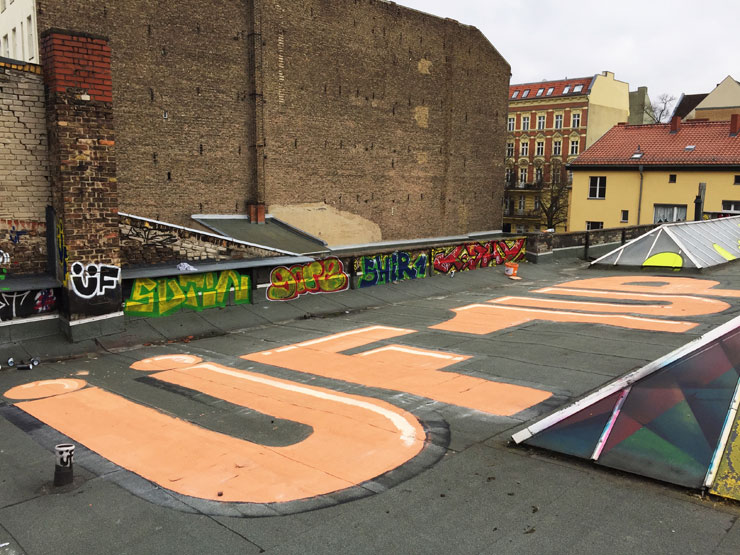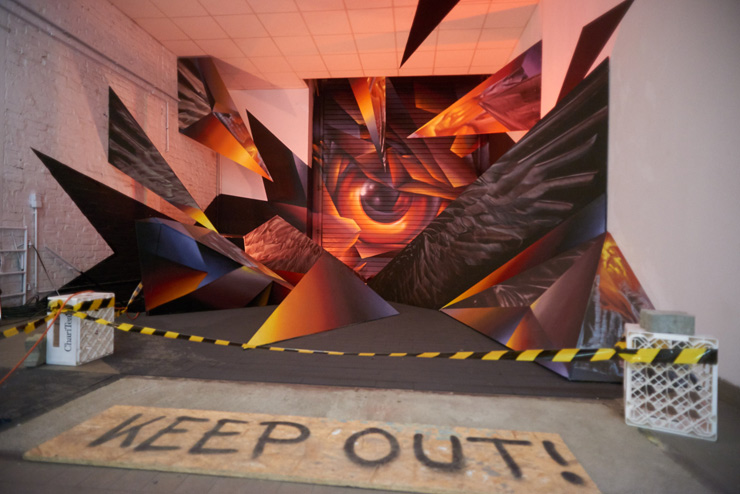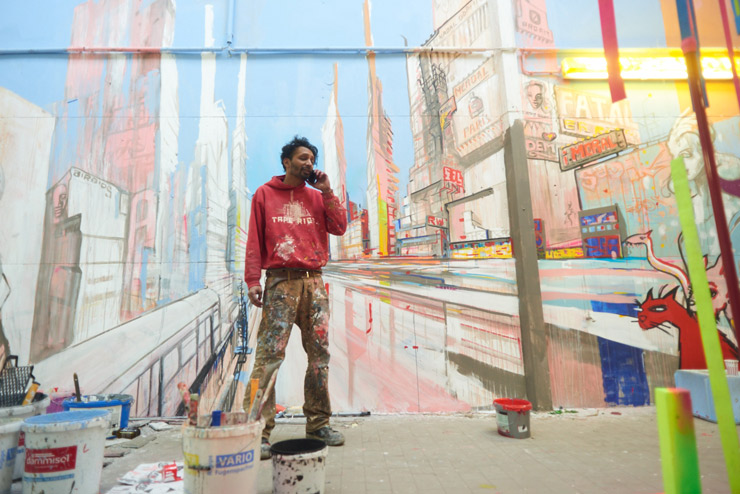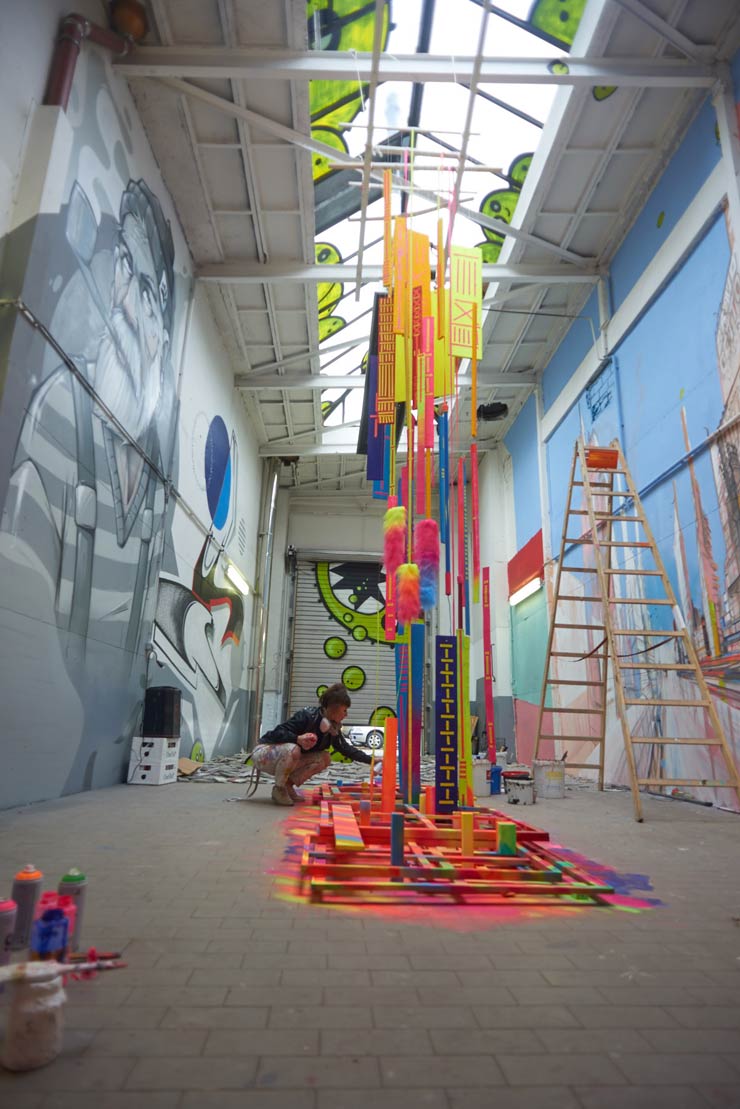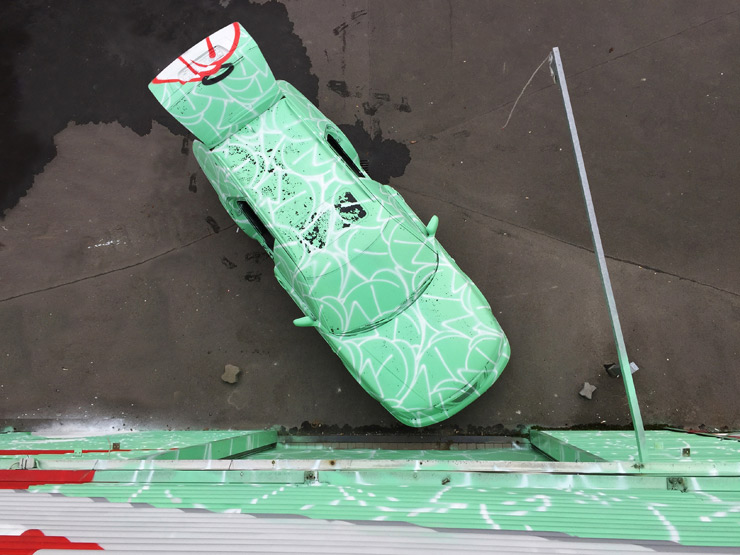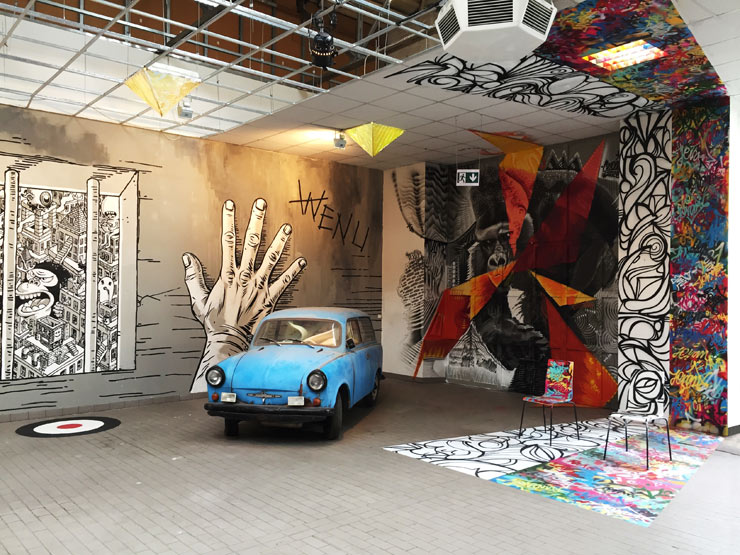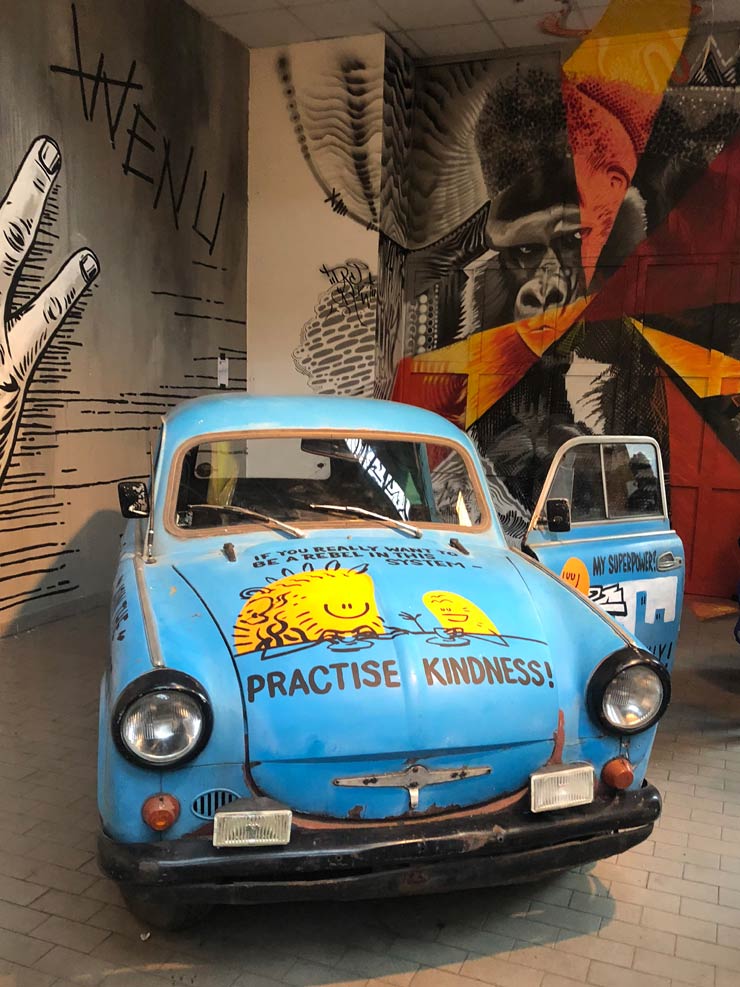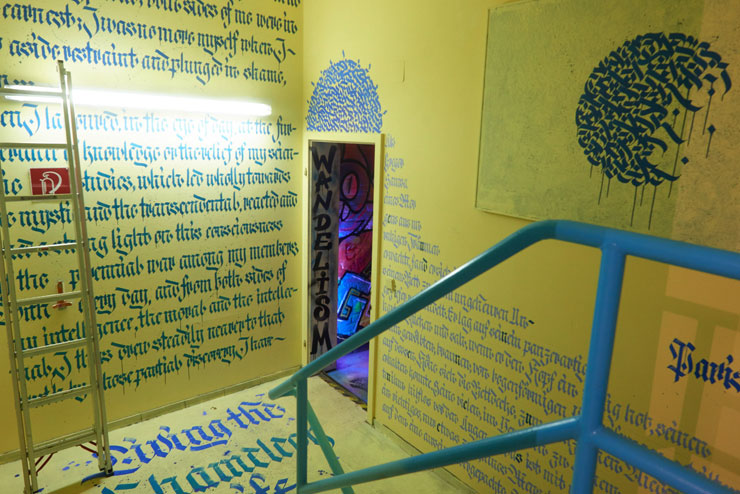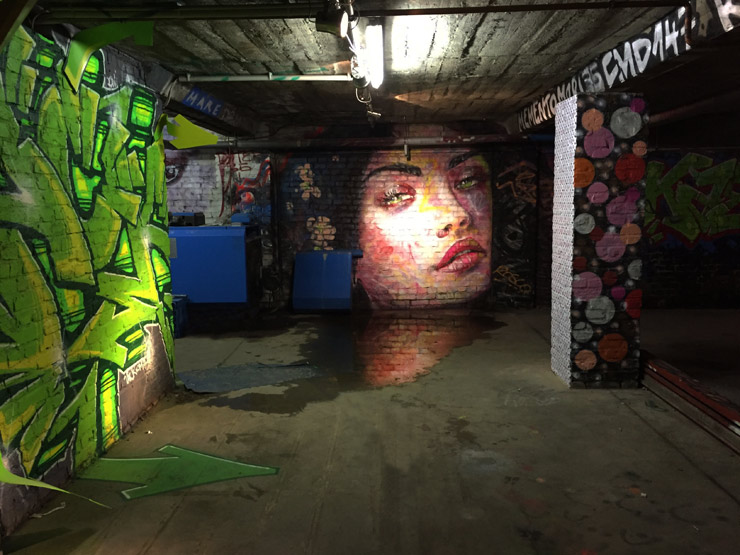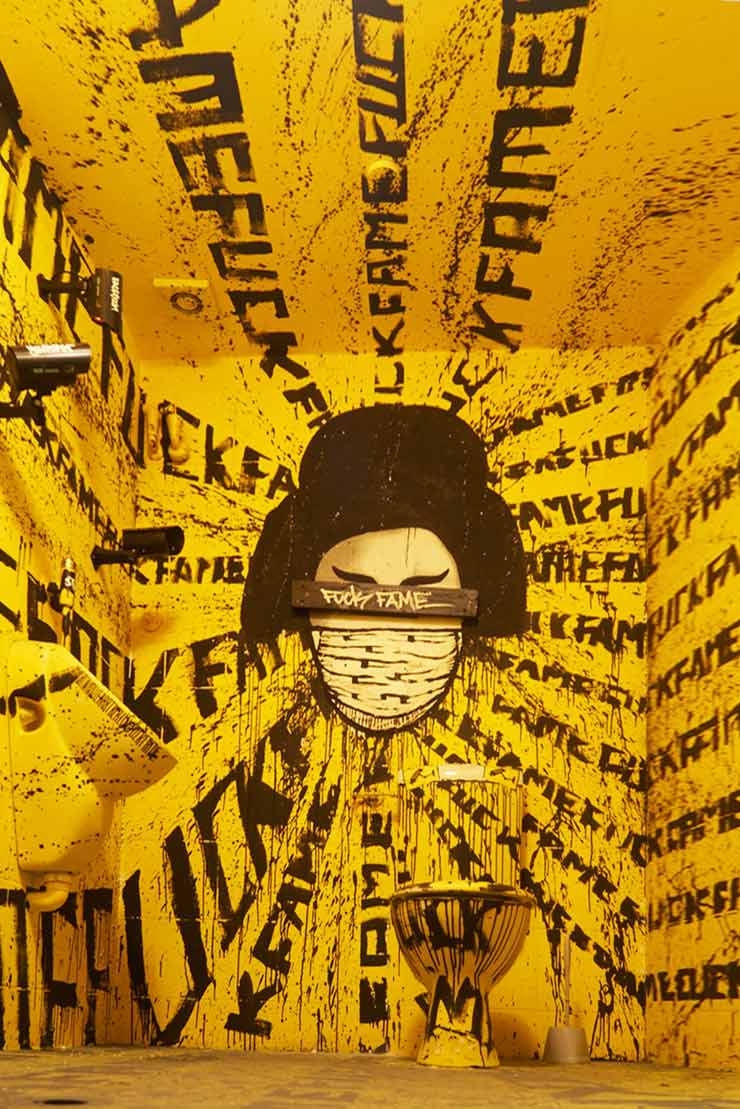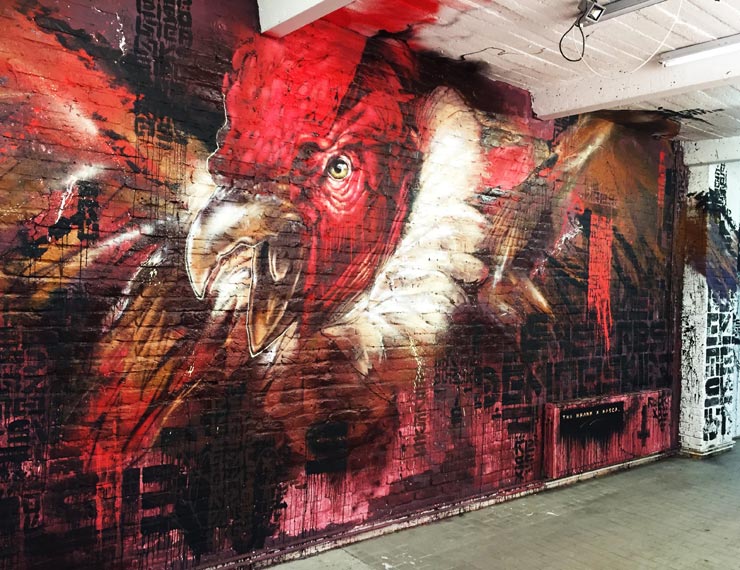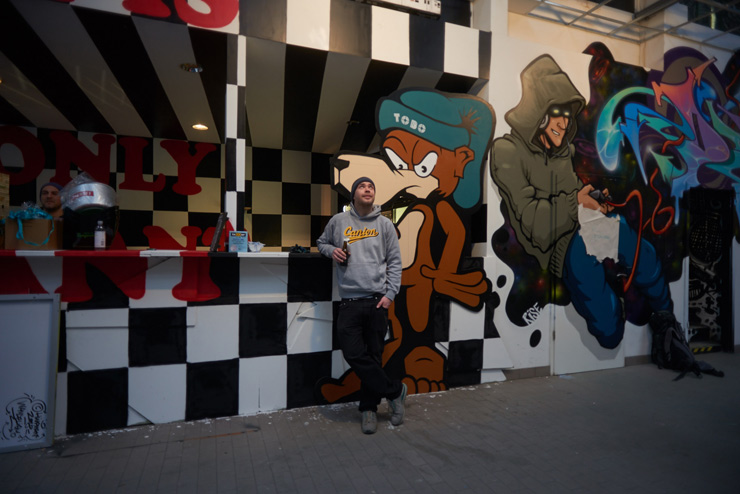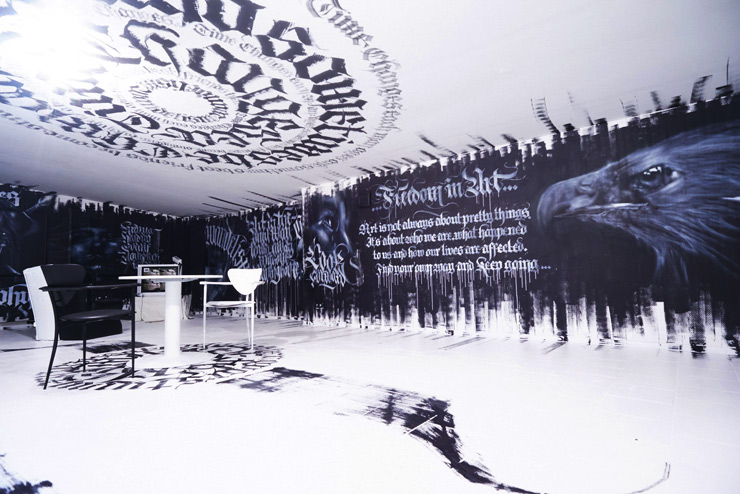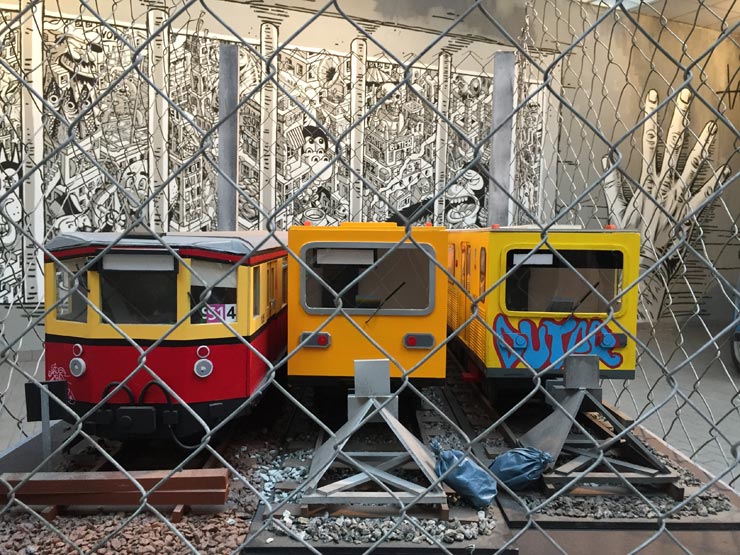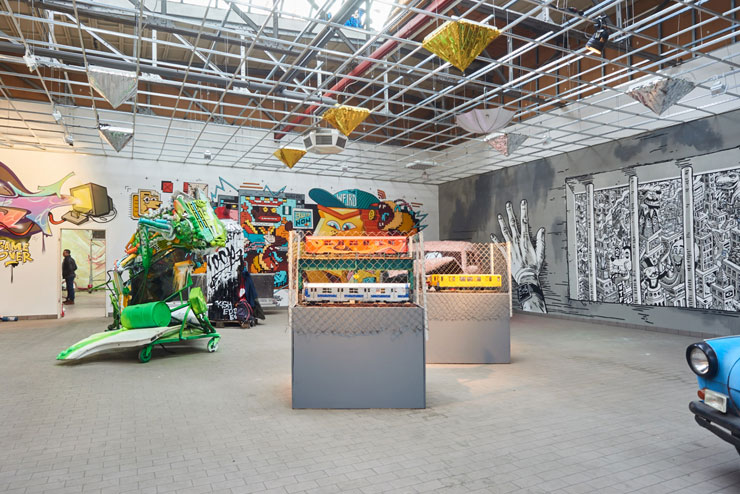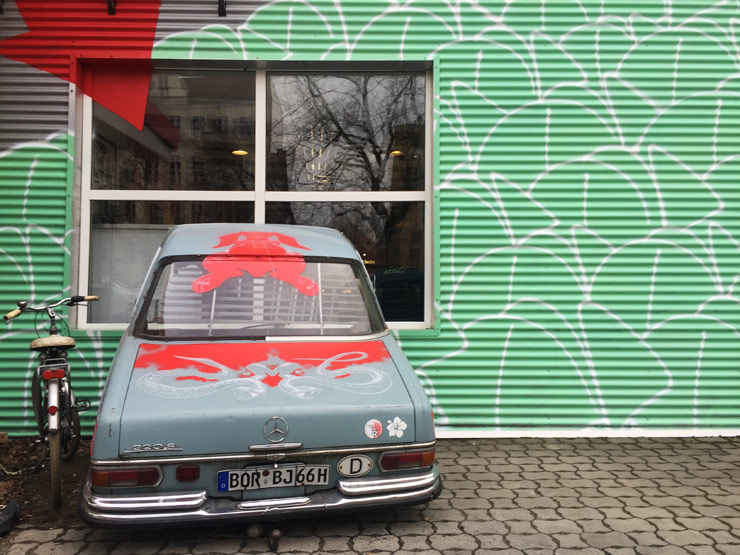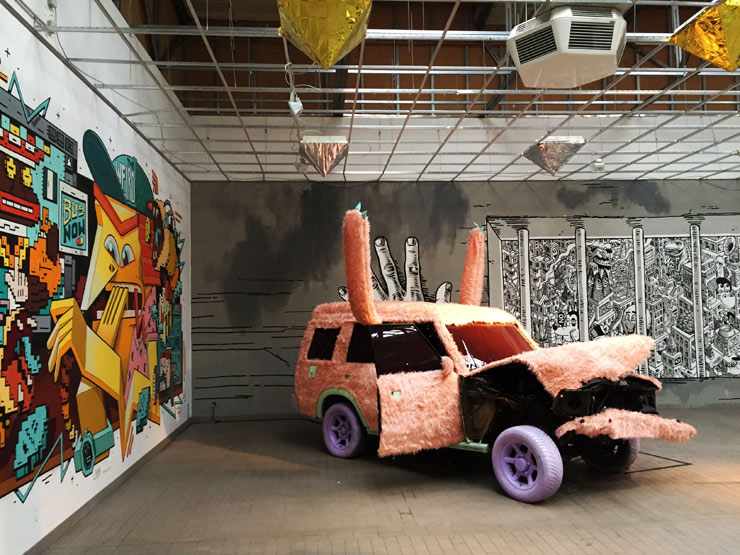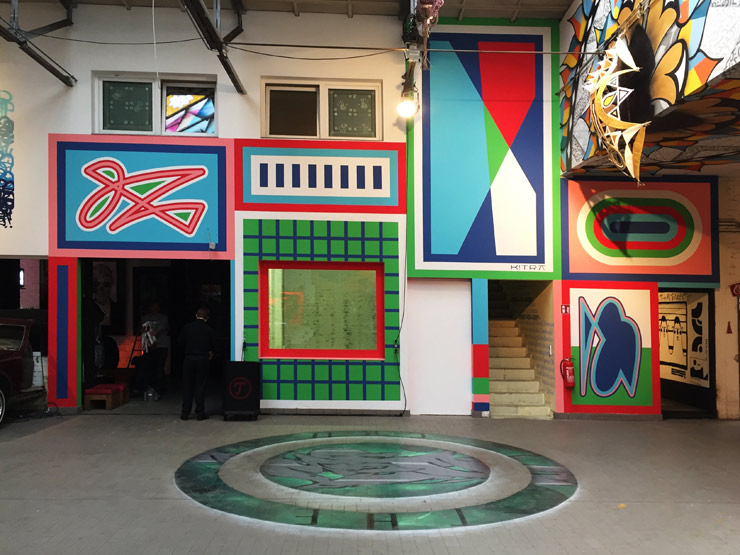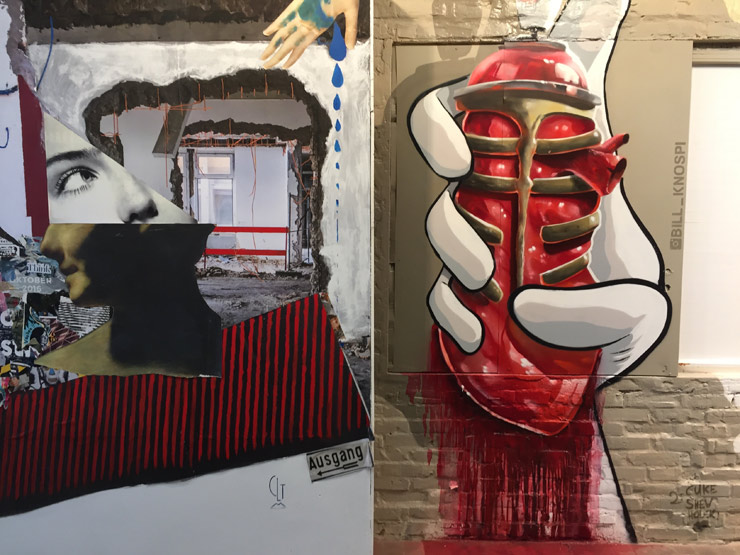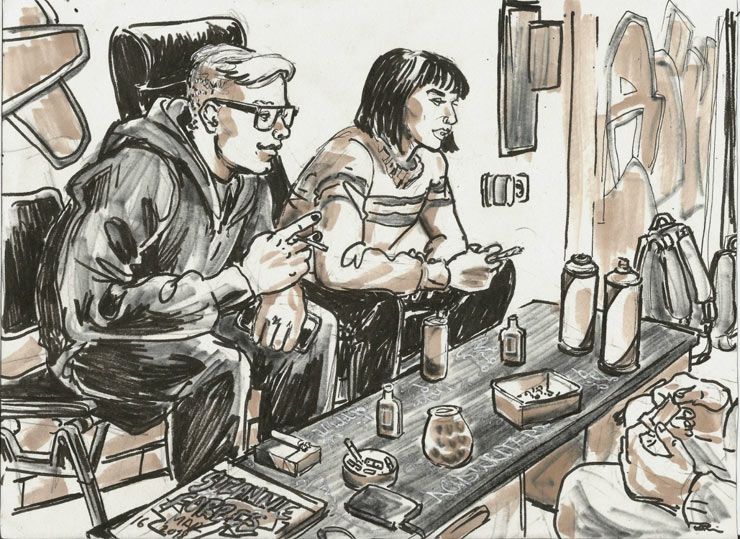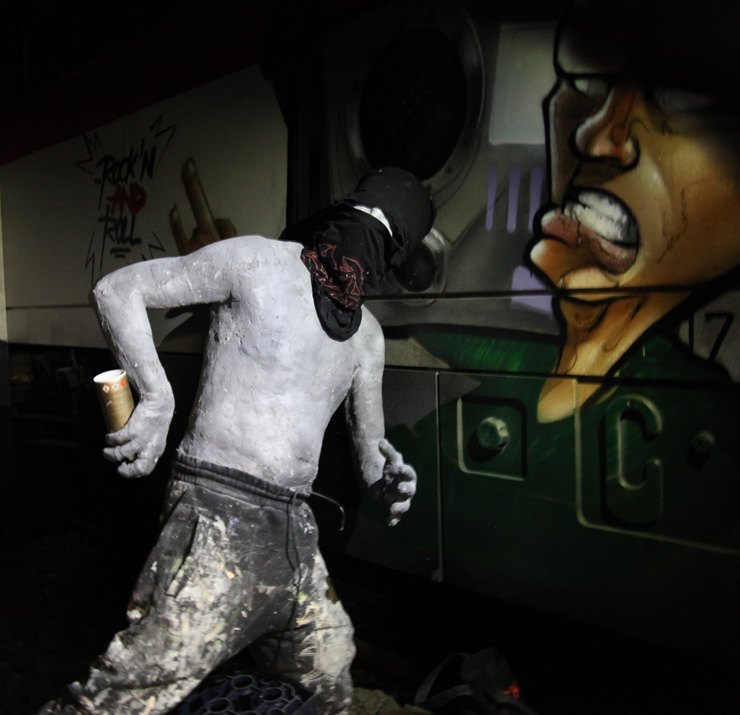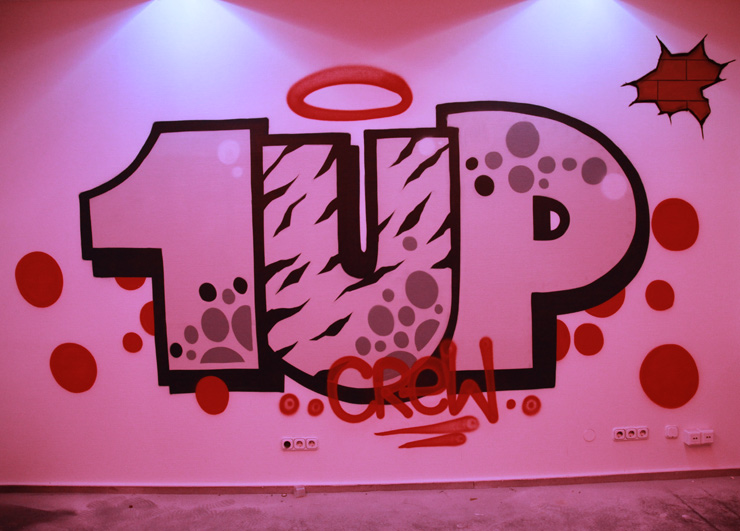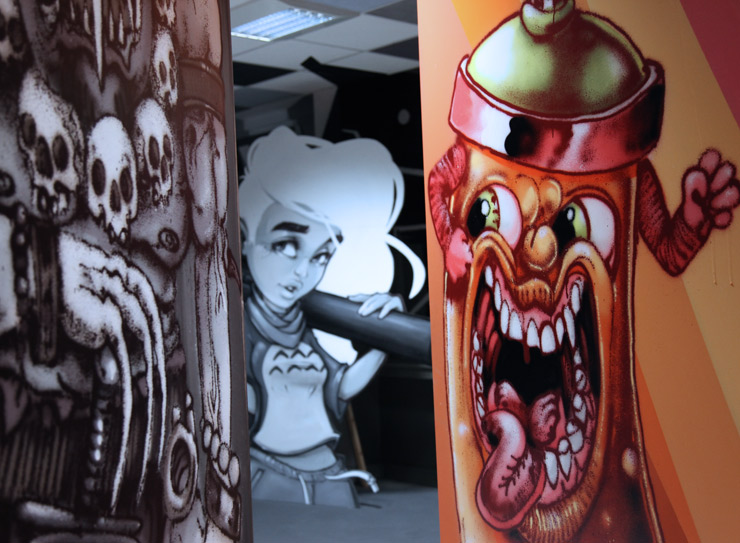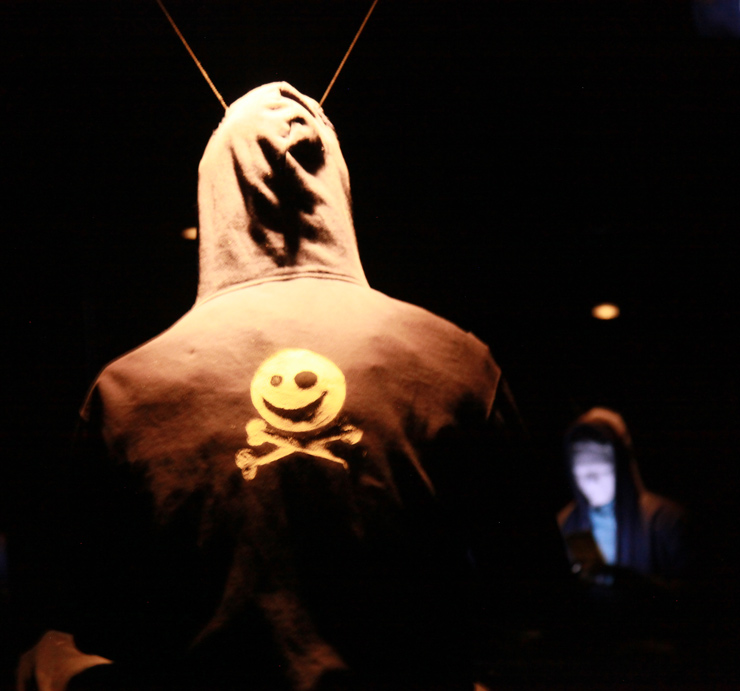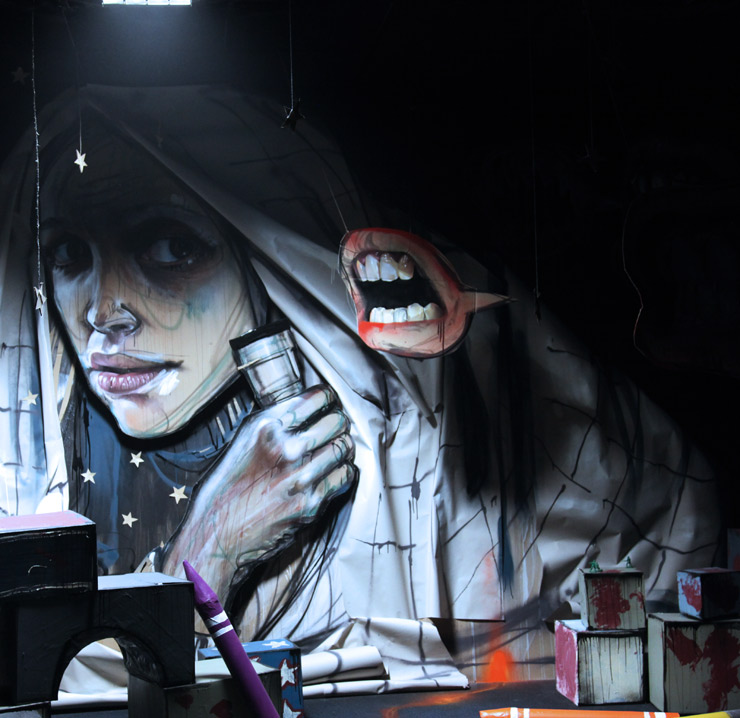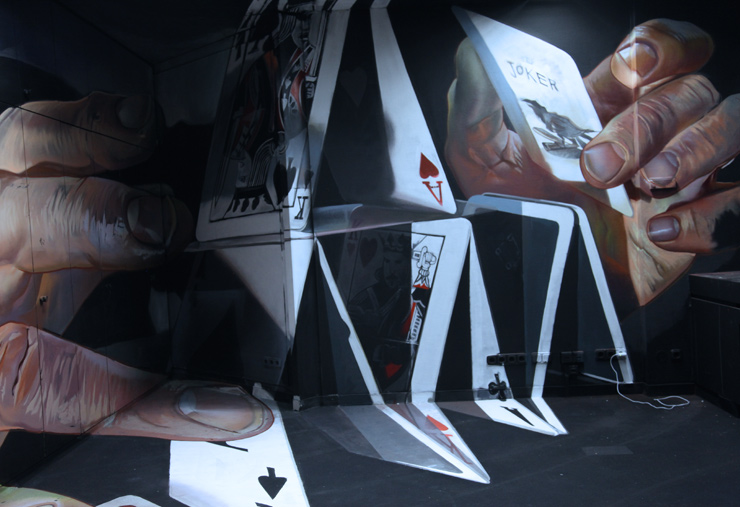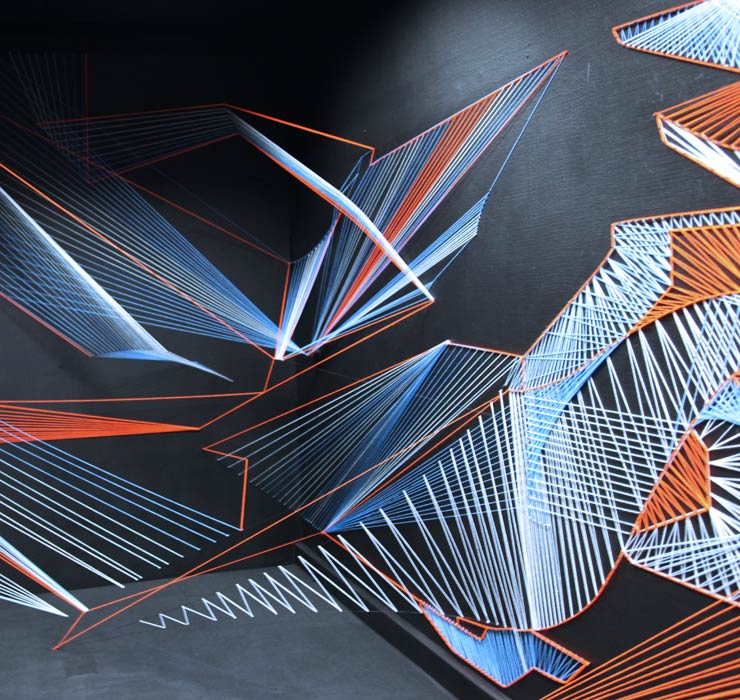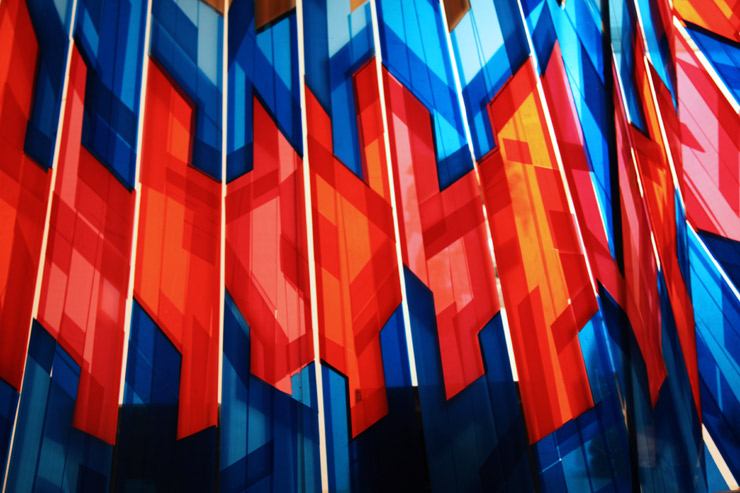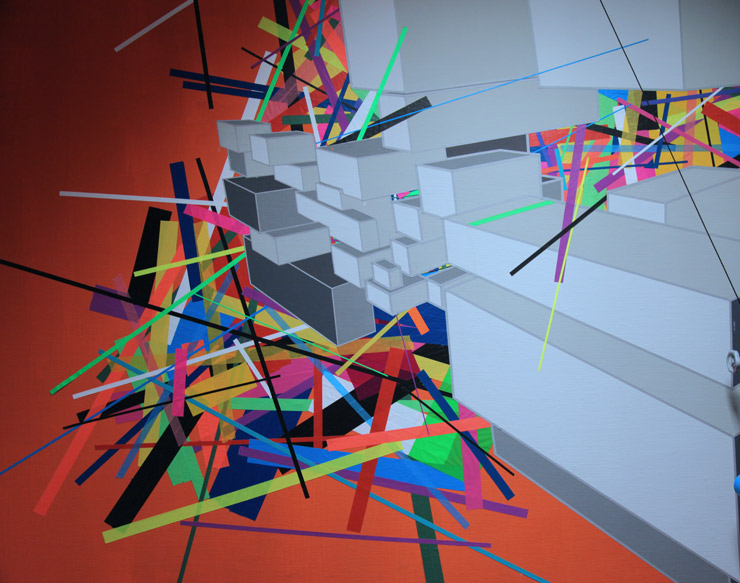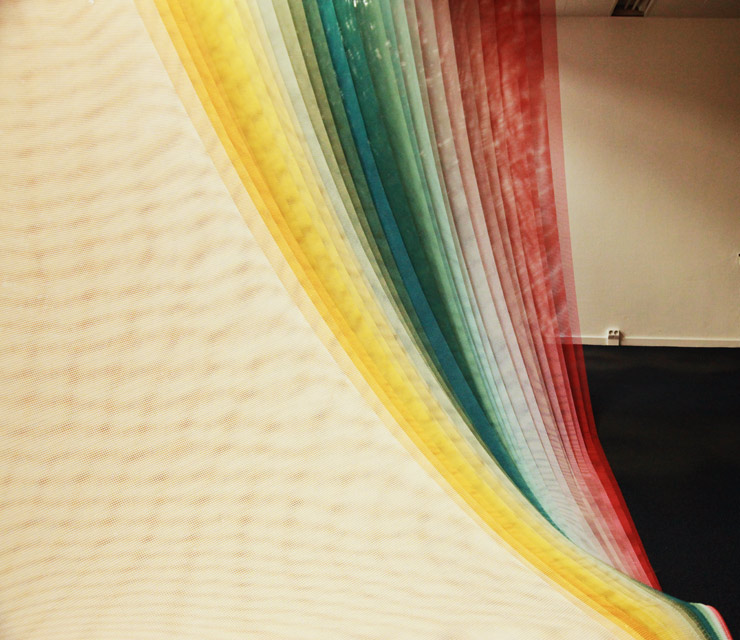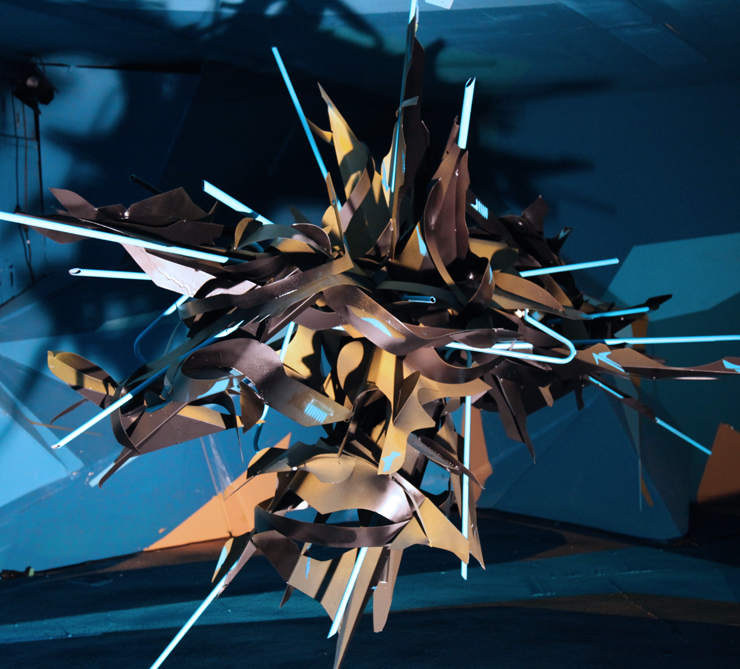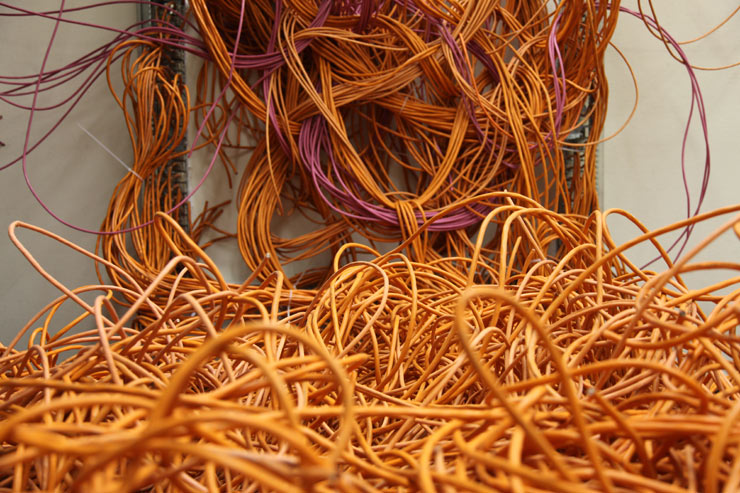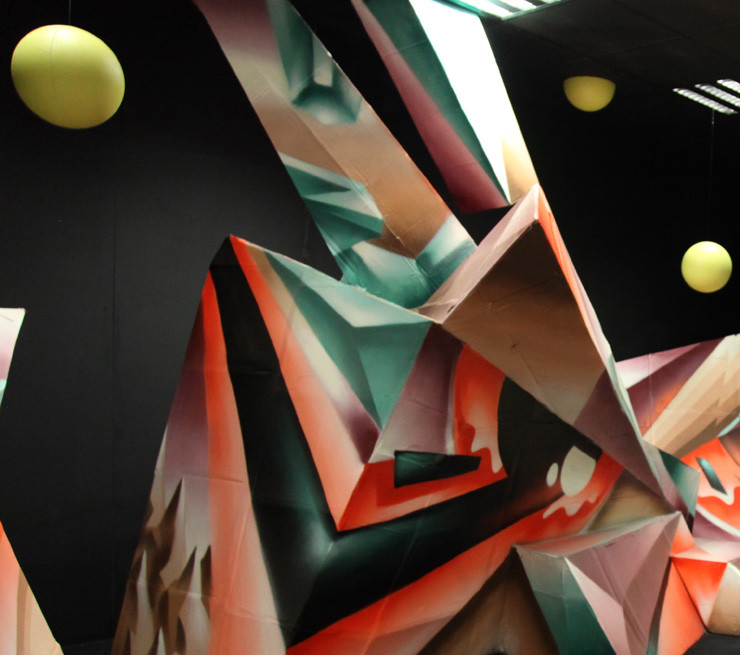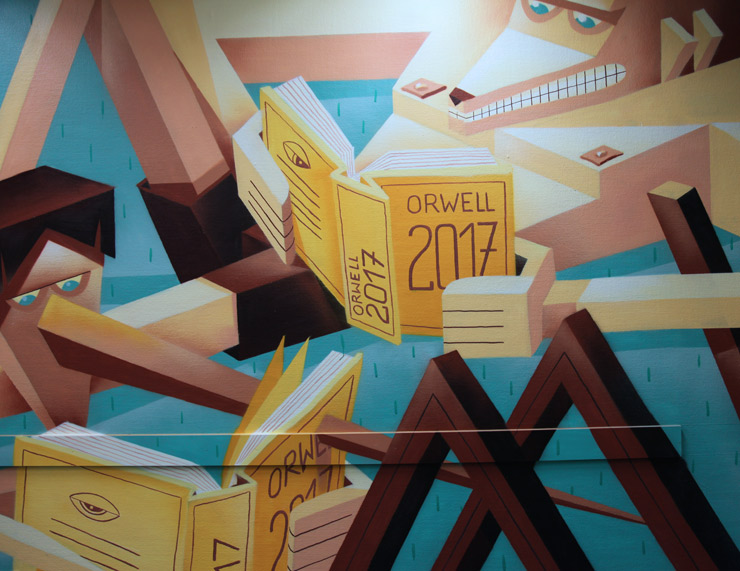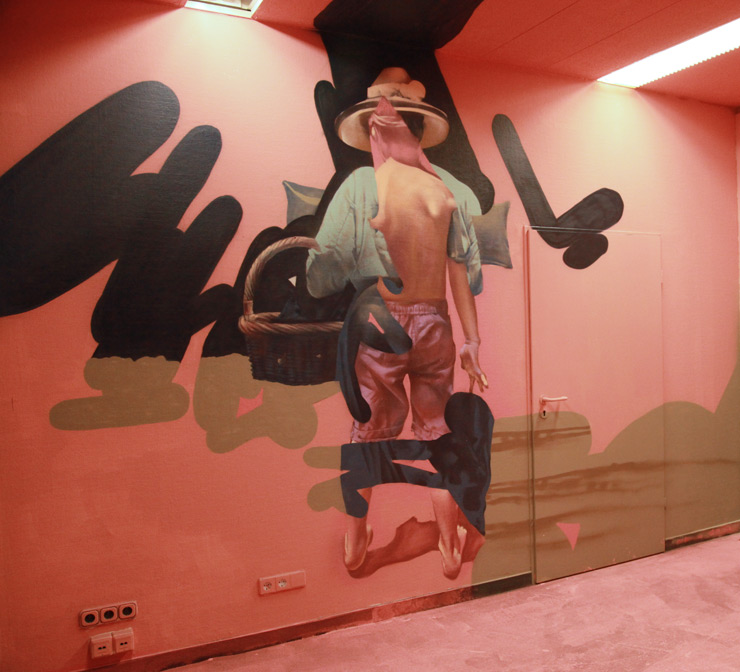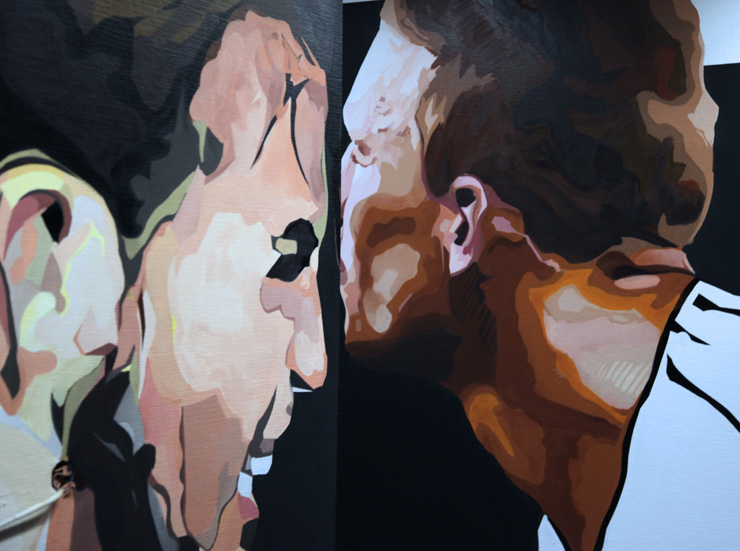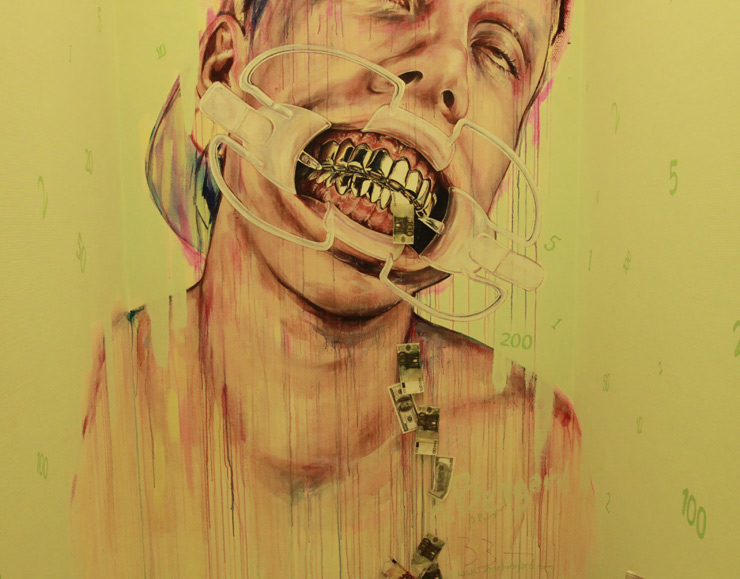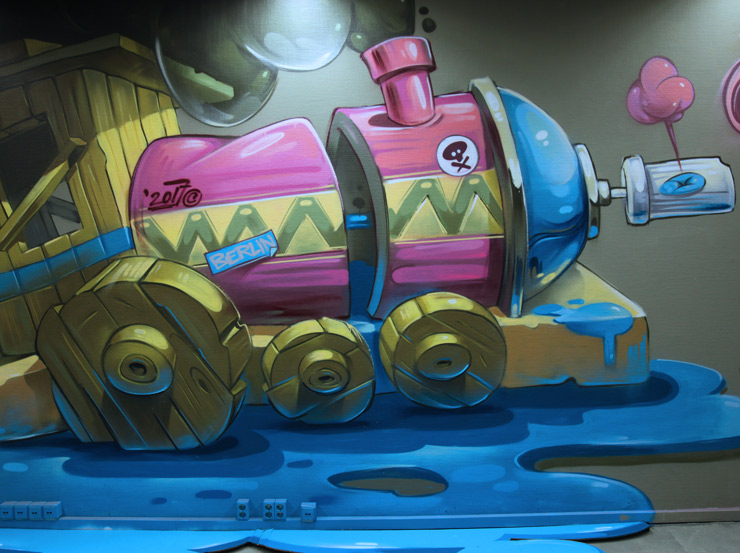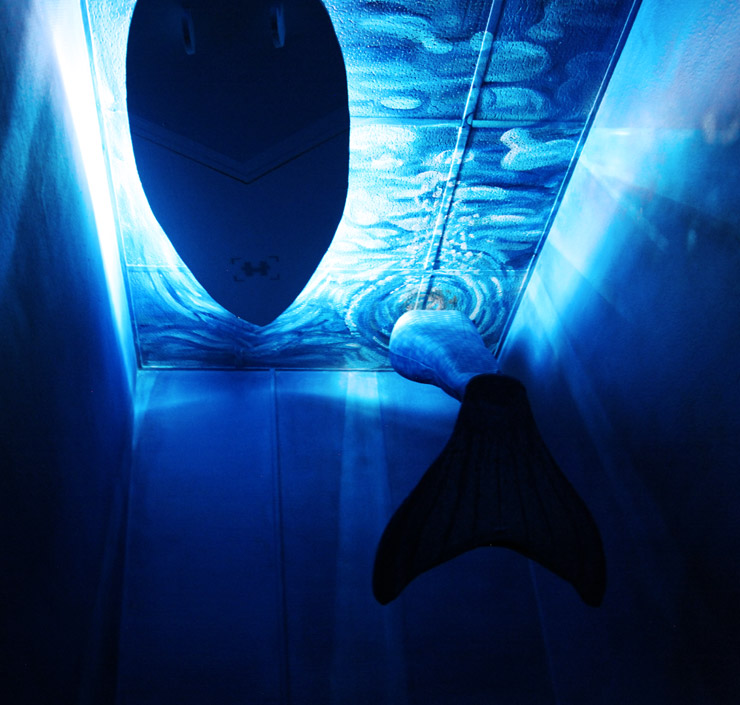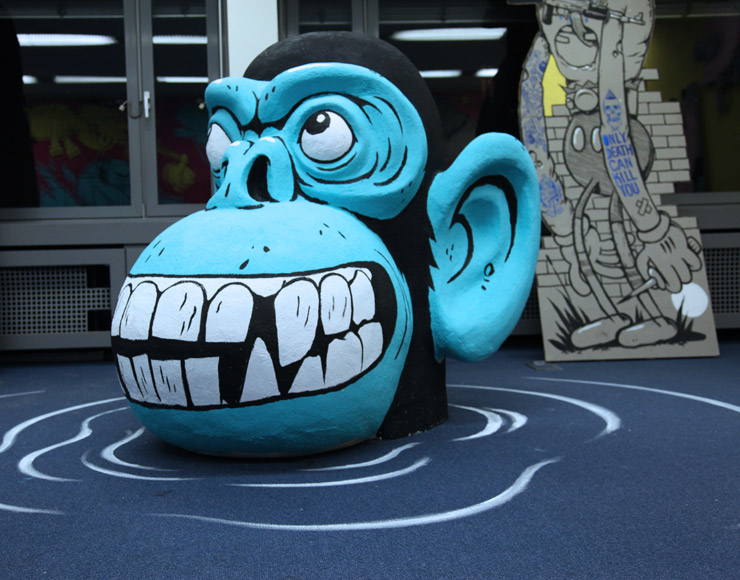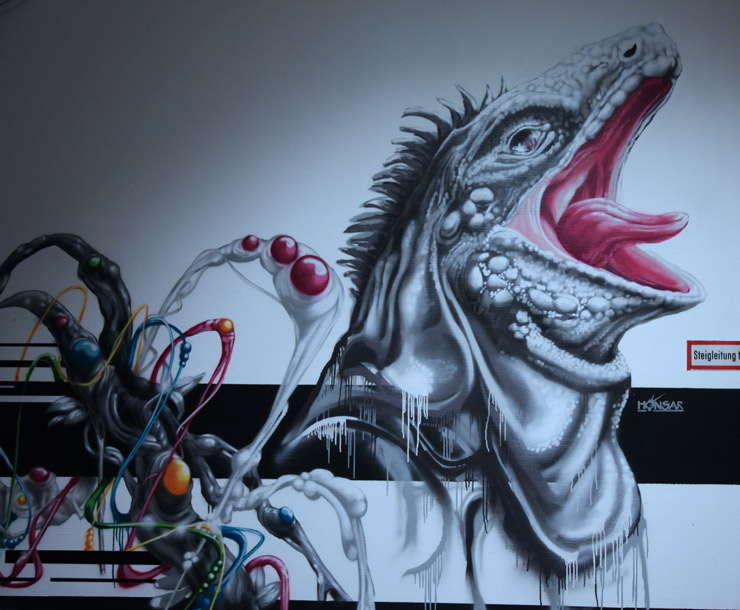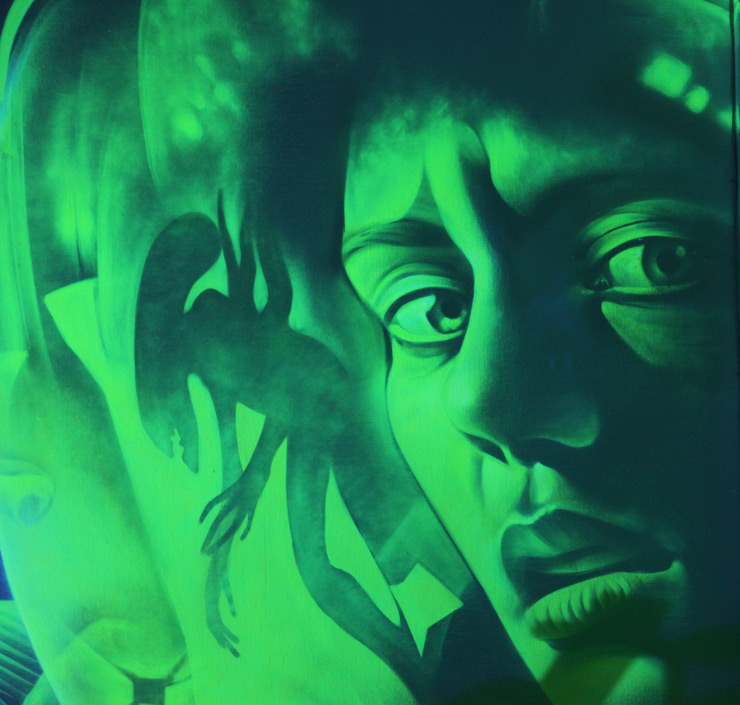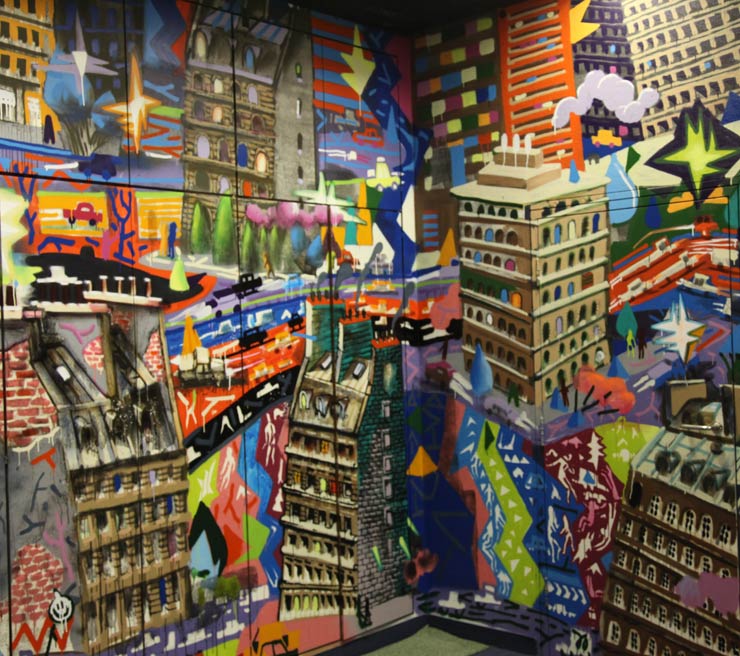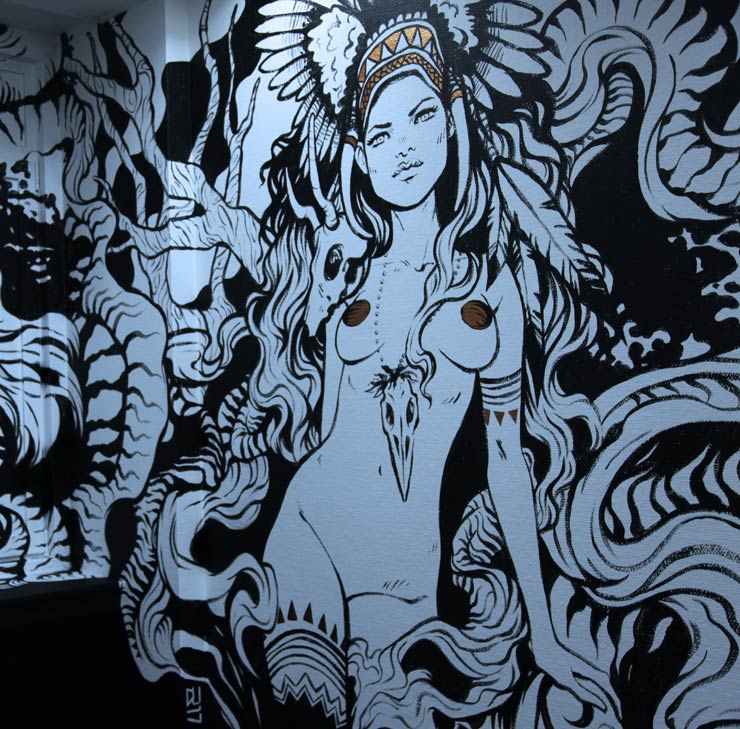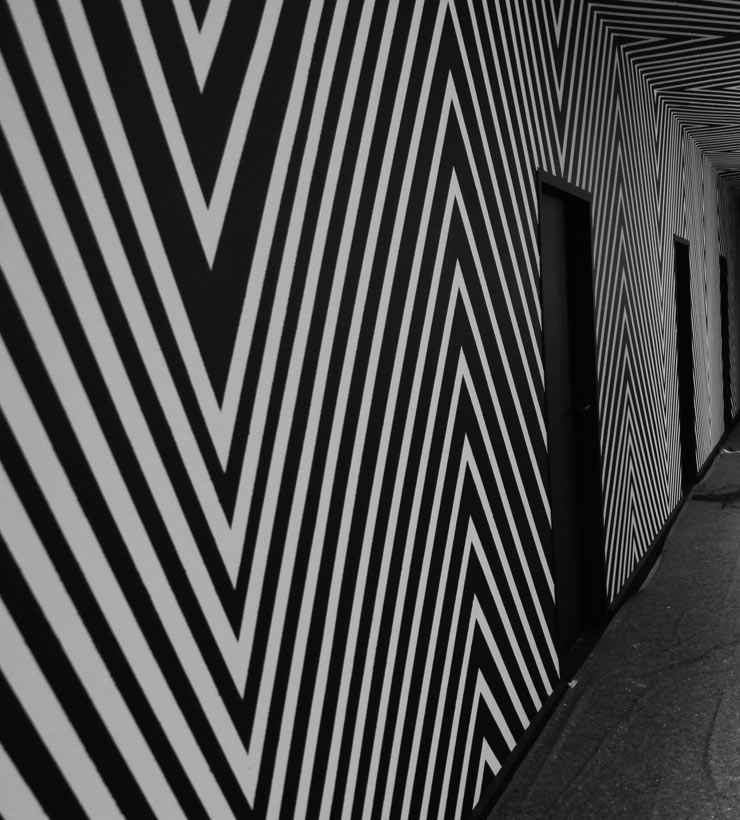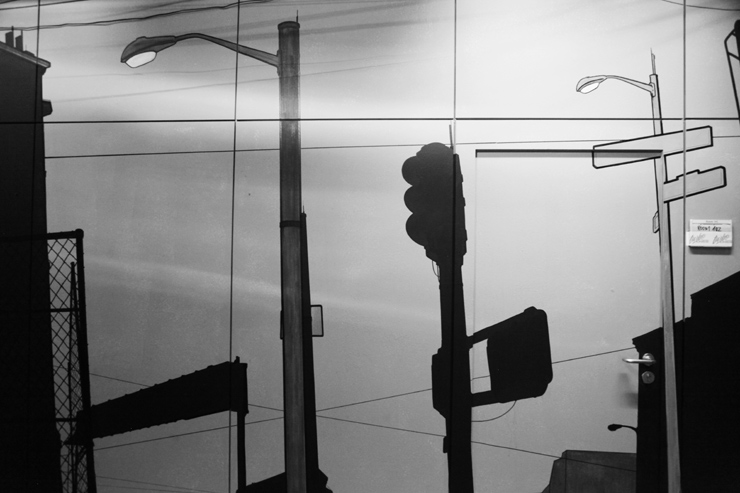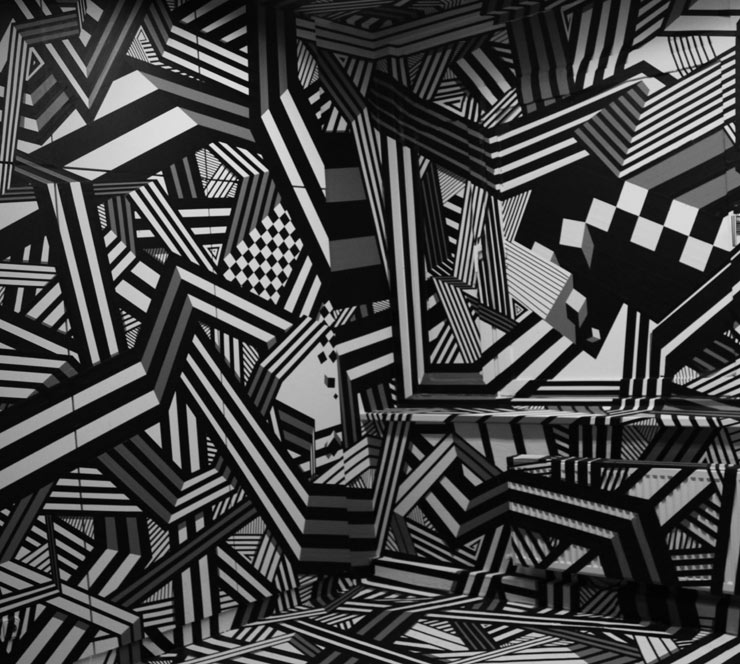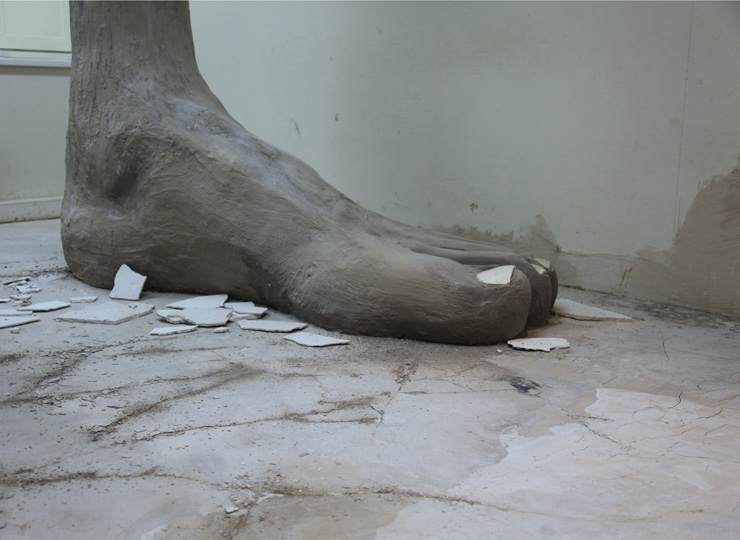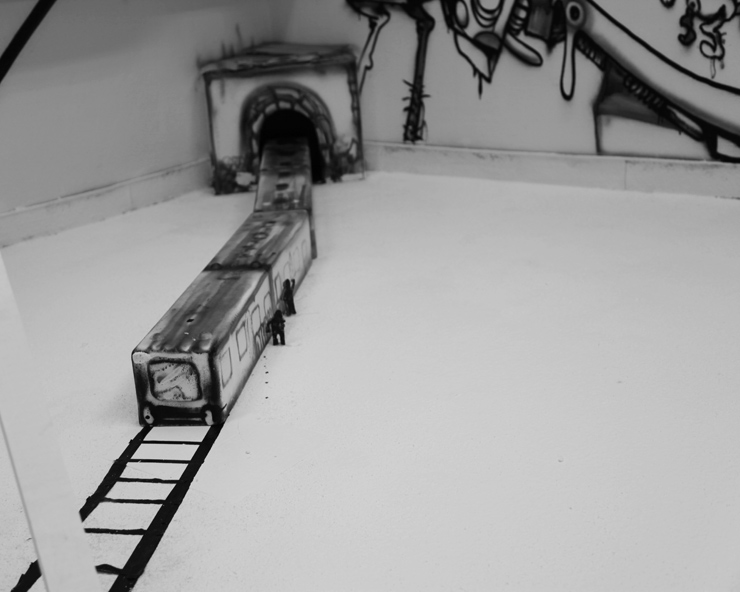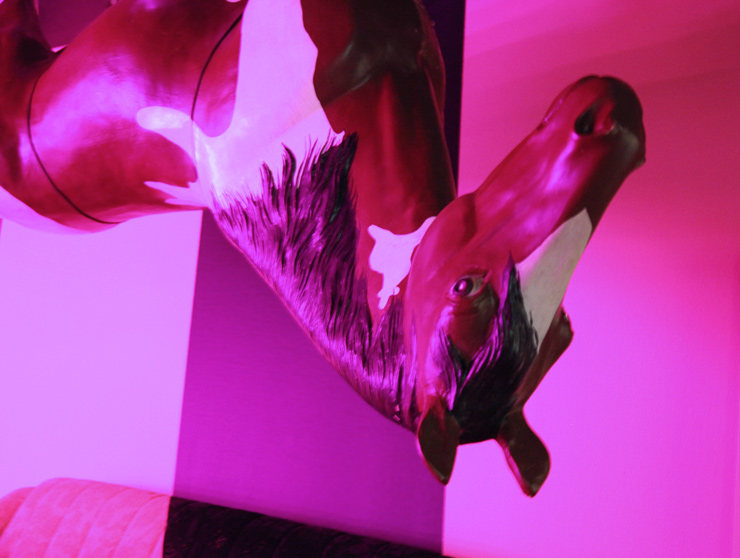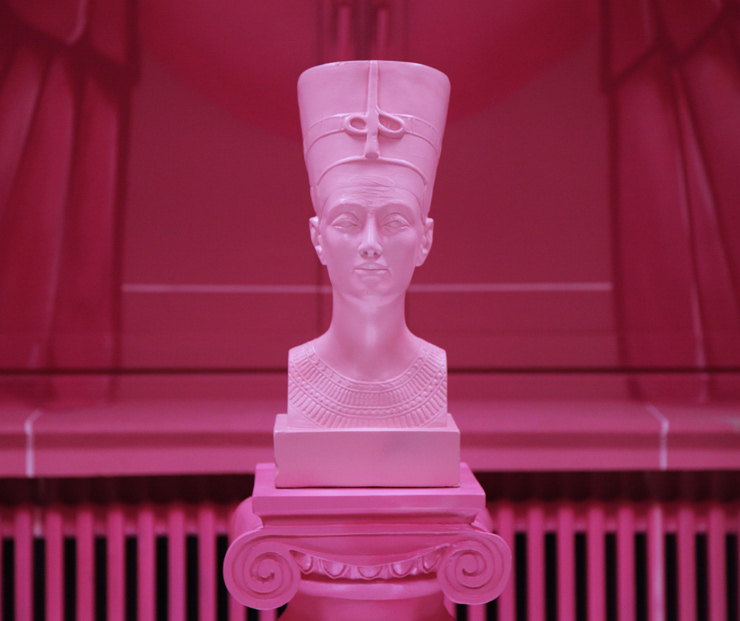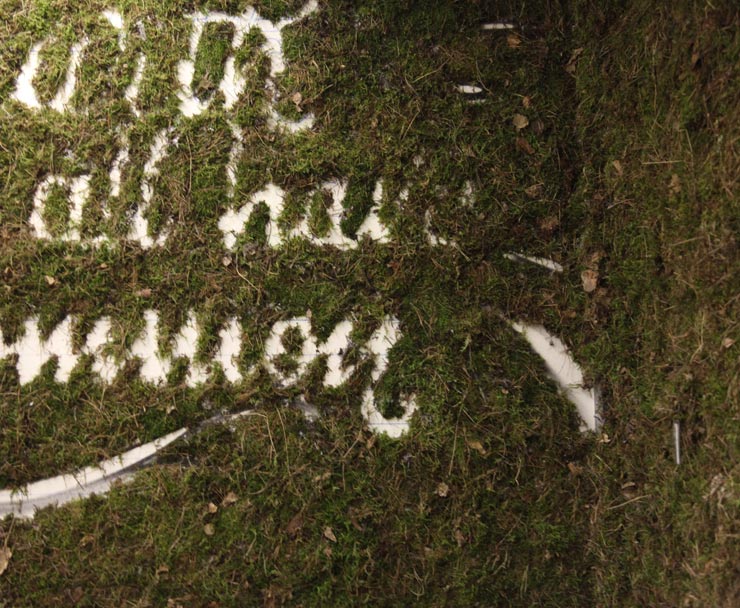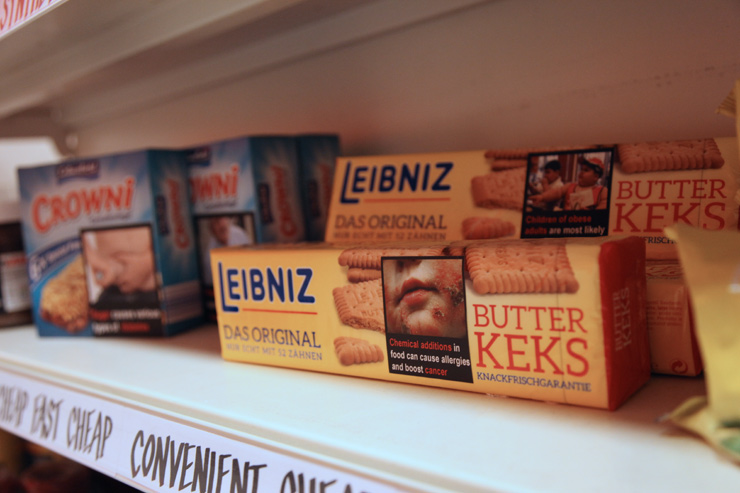When Jan Sauerwald, Urban Nation’s Artistic Director, began making plans in earnest for the new facade for the museum, he was pondering what the art on the walls should convey. Given the difficult Covid-inflicted times we are living in he thought that possibly something fun and humorous was what Berlin needed. Indeed, humor has the power to provide levity, but humor is also an exceptionally effective vehicle to impart knowledge and spread a positive message without appearing to be lecturing.
So it seemed most appropriate to gift the denizens of Berlin a fresh, humorous new mural, especially considering that collectively, the whole city had just endured months of lockdown, and they are just now slowly coming out to play outdoors and drink some beers with friends in the parks. Luckily Sauerwald knew who to call. Dave The Chimp. A Berlin-based artist, illustrator, and skateboarder who is known on the streets of Berlin for his simple but street-smart orange characters shaped like a bean. He calls them “Human Beans”.
We reached out to Dave The Chimp and asked him a few questions about the artists he invited to paint along with him and about his experience being able to get up and to get dirty again on the streets.
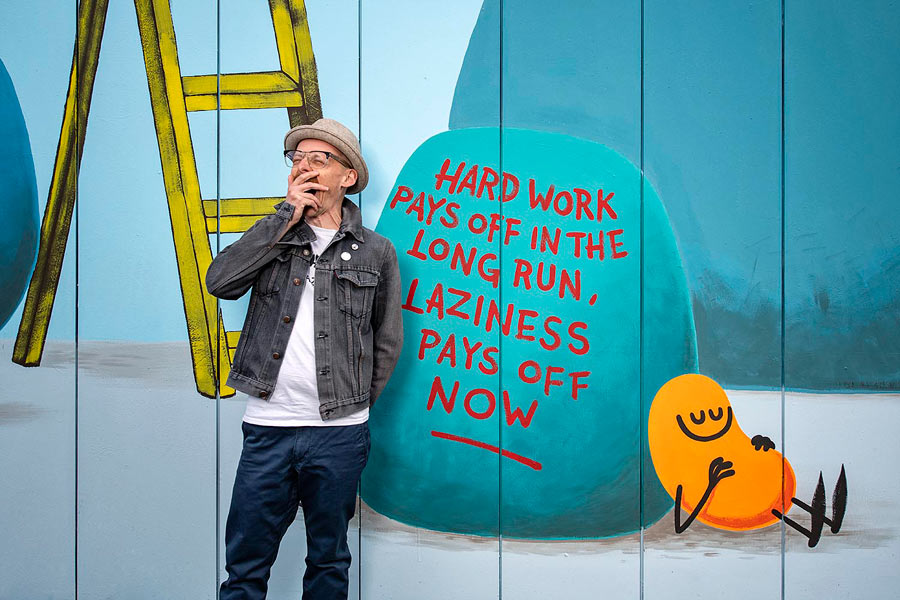
BSA: How did it feel to get up after the lockdown? How was the experience of working outdoors for the first time in many weeks?
DtC: I don’t work outside often. My work practice is constantly changing, sometimes painting, sometimes drawing comics or creating skateboard graphics, writing the text for zines, and in the past, I’ve organized costumed wrestling parties, played in a punk band, directed pop videos and tv commercials, compiled books… painting outside is just one of a constantly changing set of fun problems to solve!
I personally enjoyed the lockdown. I started meditating again, I was stretching and doing yoga and working out almost every day. Sitting on my balcony in the April sun, reading, catching up on all the movies I don’t have time to watch, helping plug the gaps in my son’s education, trying new recipes. All my projects and exhibitions were canceled so I figured “ok, guess I’m on holiday for a few months, so let’s forget about work”. I realized that this was a very unusual time, so why would I try and carry on with my usual life?
Germany locked-down early. Berlin was quick to organize an emergency fund for freelance workers, so most were able to receive money that meant they could survive a few months without worry. This lessened the fear. Fear shuts down the immune system, and during a pandemic, the one thing you need is a strong immune system!
It was great to come out of the lockdown here and be straight on a worksite, mingling with people, getting dirty, laying in the street. After two months of washing my hands constantly, it was fascinating to feel just how grimy I get just living a normal life! We’re a bunch of filthy little monkeys!
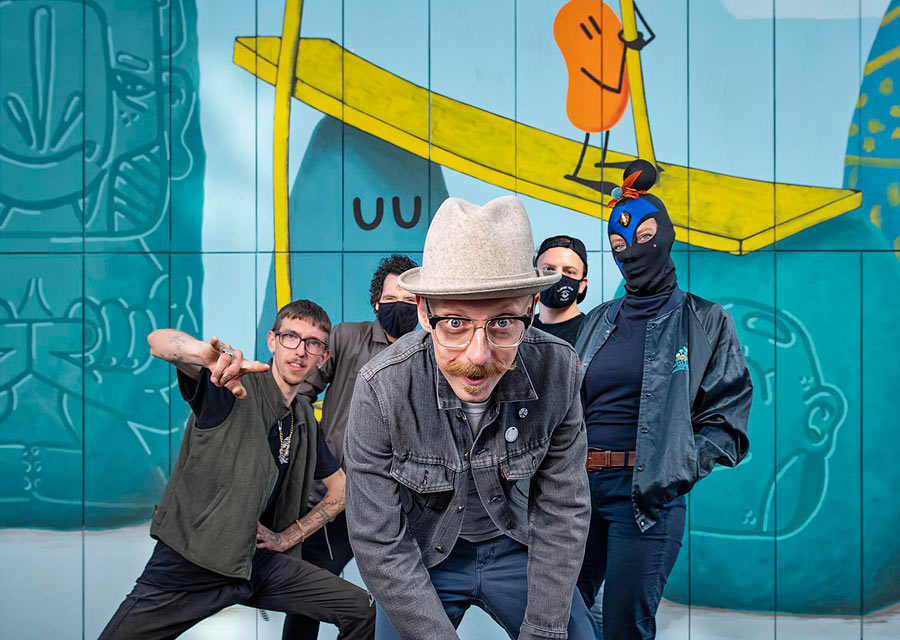
BSA: UN invited you to paint the UN facade for the first time. In turn, you invited four artists to join you. What were your criteria for inviting the other artists?
DtC: Due to Corona, the new museum exhibition had to be delayed until September. They had planned to paint the facade for this exhibition with other artists, so had the city permit to put the lift in the street at the end of May. The crisis has meant that all government offices are running slowly, and a new permit wouldn’t be possible until early 2021. Jan called me and asked me if I could paint the facade two weeks before work had to begin!
The first idea was for me to paint it with Flying Fortress, but unfortunately, he wasn’t available. This sowed the idea of working with others in my mind and I figured “if it would have been fun painting with one friend, why don’t I invite four?” I chose people I like, and whose work I like, and that I could see working with the theme I wanted to portray on the wall.
Originally I had a team of two boys and two girls, but one of the girls wasn’t available, and I couldn’t find another making the kind of thing I needed. Luckily my friend Matt Jones had recently sent me a zine of his doodles, and I saw how some of these could work as a kind of ancient alien language etched into my Stone Henge “stargate”. I invited Mina to paint her powerful females as prehistoric rock paintings, got my skateboard buddy Humble Writerz to chisel the faces he bombs in the streets into stone columns, and had Señor Schnu paste his posters onto boulders. And then I added my own characters so it looked like they were doing all of this work! 😉
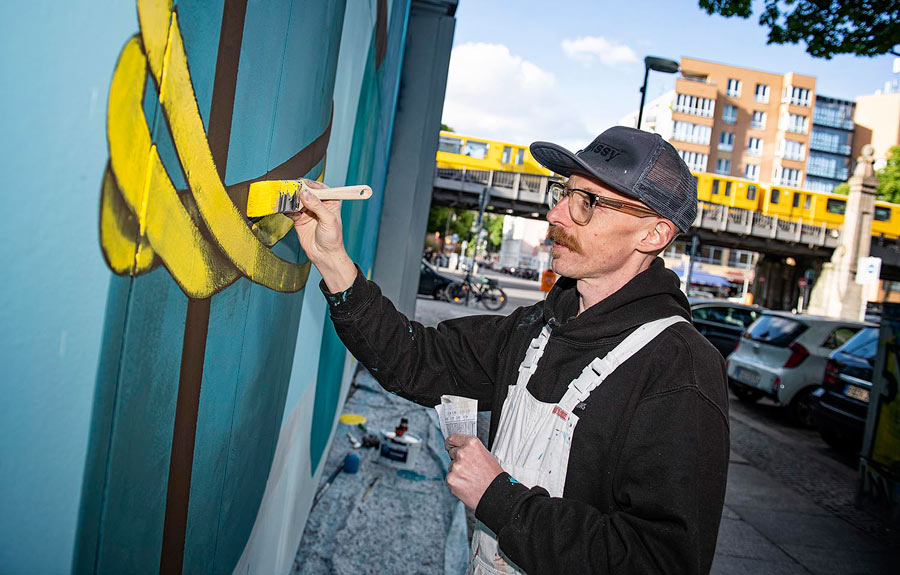
BSA: The mural has a playful tone to it which goes well with your character but it also has a message of a team effort in order to build a better world. Is that right?
DtC: I’m pretty sure we don’t need to use fear and anger to change the world. As PiL said, anger is an energy, but I’ve learned that it’s one that is soon burnt out. Much better to try and make the world a better place with love as your fuel. There’s an endless supply of love in all of us. Political action doesn’t need to always be a raised fist, a black, red, and white stenciled shout at the world. Why can’t protests be a fun day out, just like a festival, a carnival of change?
BSA: Can you tell us about the genesis of the concept for the mural? Did you have a brainstorming session with the other artists or did you know what you wanted and just told them your idea and they jumped into action?
DtC: I pretty much see complete ideas in my head. I knew I wanted to paint rocks, and I knew the work of the artists I wanted to paint with. And I had a week to work out the design of an 8 meter high by 50-meter long wall, with three doors, six windows, various corners, and parts inaccessible by the lift! I didn’t have time for brainstorming! I came up with concepts, told the artists what it was I’d like them to do, and then trusted them to do their thing. I had way too many things to think about – five artists with different schedules, a lift that took 20 minutes to move each time, and three days when we were not allowed to use the lift, created an organizational nightmare! Plus I had to try and paint huge structures that I’d never painted before, and 25 characters, all doing different things. But that’s kinda what I like. Painting is setting myself problems, then trying to solve them. It’s fun! If I know what I’m doing, how exactly to do something, and how it will turn out, in advance, then it just becomes work. Better to keep yourself on your toes, make it play!
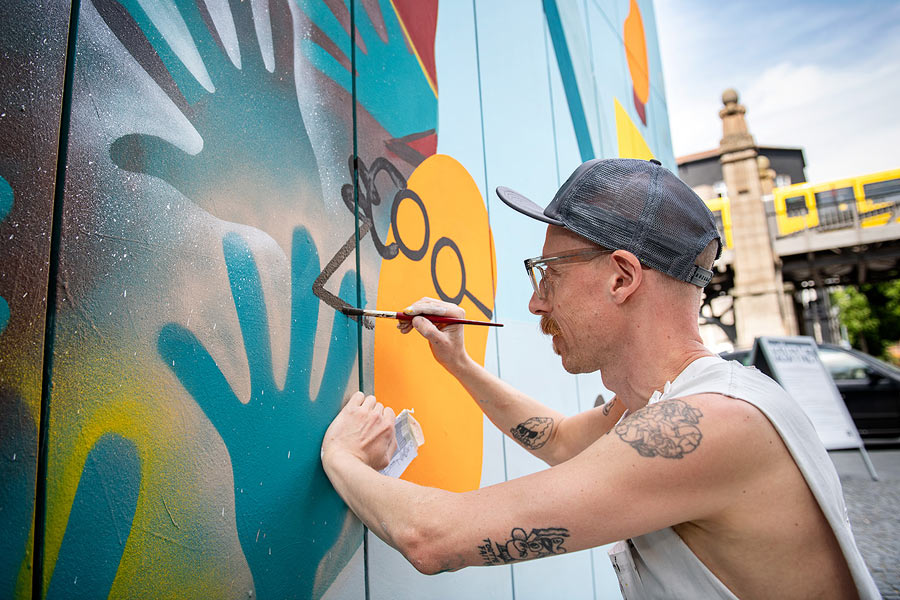
BSA: Where do you see public murals/outdoor murals going after Covid-19 and the worldwide protests about racial injustice, racism, and police brutality?
DtC: I’ve always thought of graffiti and street art as a political act. It is a reclaiming of the commons. In our cities only those with the money to buy the walls around us – public space – get to have a voice. Advertising is designed to make you require more, to feel like what you have, who you are, is not enough. This is psychological oppression and we are exposed to it thousands of times a day. If we can use walls to make people feel less than, can’t we also use them to feel greater than, to inspire, to cheer, or just simply to help people be satisfied that they are ok? Like Picasso, I believe art can be a weapon to wage war. Bad people win when good people stay silent.
I have been known to make political work and to use a lot of slogans and messages in my work, but right now, in 2020, I find that I am overwhelmed with things that need to be spoken about, with things that are being spoken about, and, frankly, I don’t feel able to speak. Things are changing so quickly. It’s all too confusing. So I am trying to keep my use of words to a minimum, and to try and communicate on a more subtle level. The rocks in this mural represent our belief in the human-built structures and systems of life. The scaffolding, the planks and ropes, represent just how fragile all these systems are, as we have been seeing, and show our need to work together to make life function.
A mural like this couldn’t have been made without a huge network of people. The group of artists I worked with, the production crew at YAP, the lift hire guys, the factory workers that made the brushes, the chemists who brewed the paint, the people that built the wall, the people that cooked our lunch, the people that farmed the food for our lunch, the people that made the bikes we rode to the site every day, that built the roads we rode on… thousands of people are involved in every single human action.
The world is a crazy place right now, and it’s important to remember that we’re all in this together. Maybe it’s better we stop finding ways to divide ourselves, and instead unite.
Together we are stronger.
Dave the Chimp. Berlin, Germany, June 2020
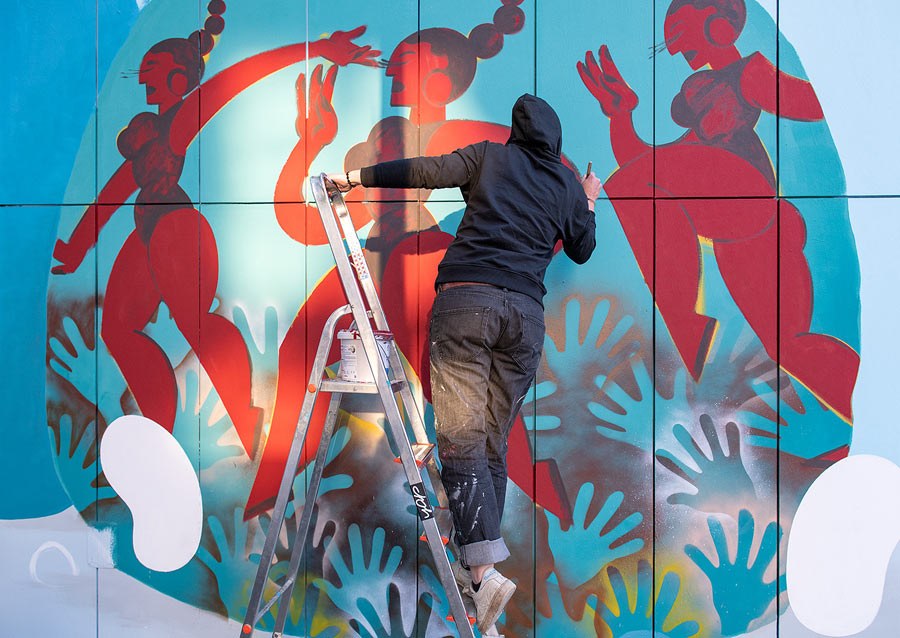
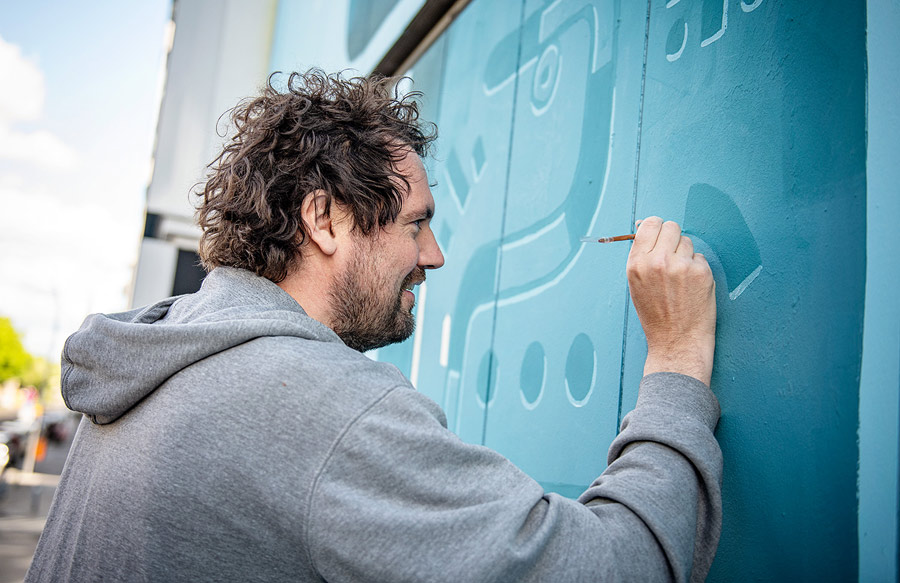
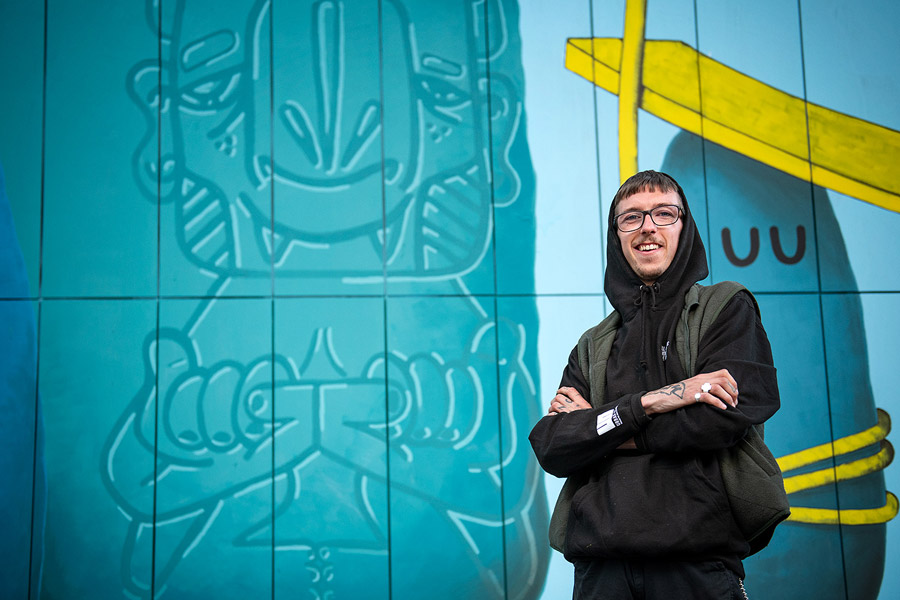
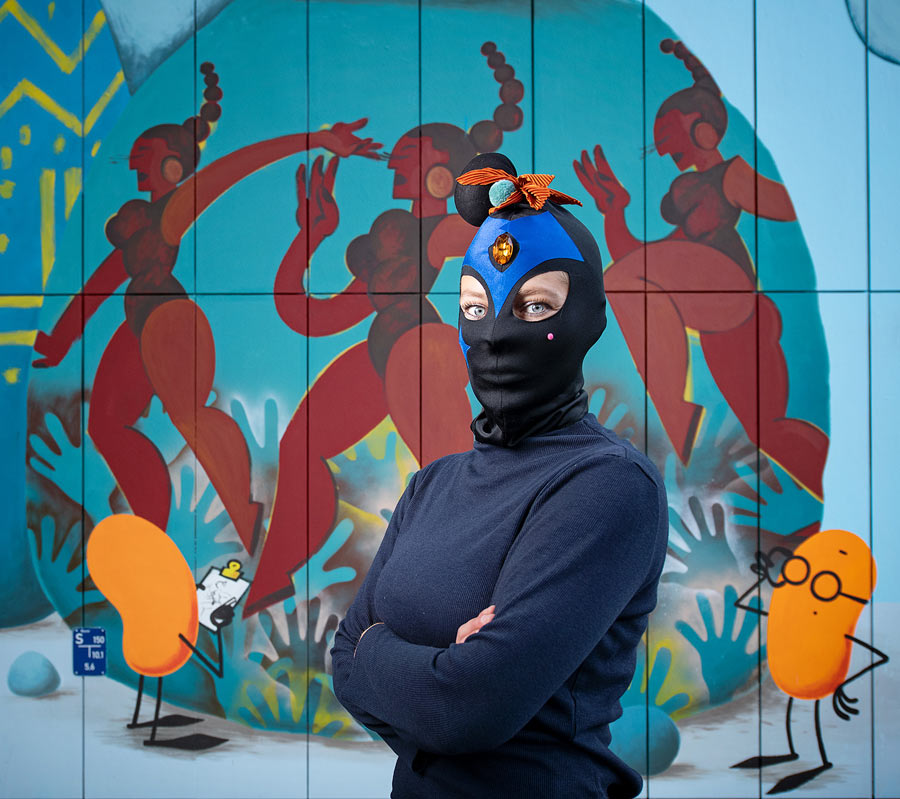
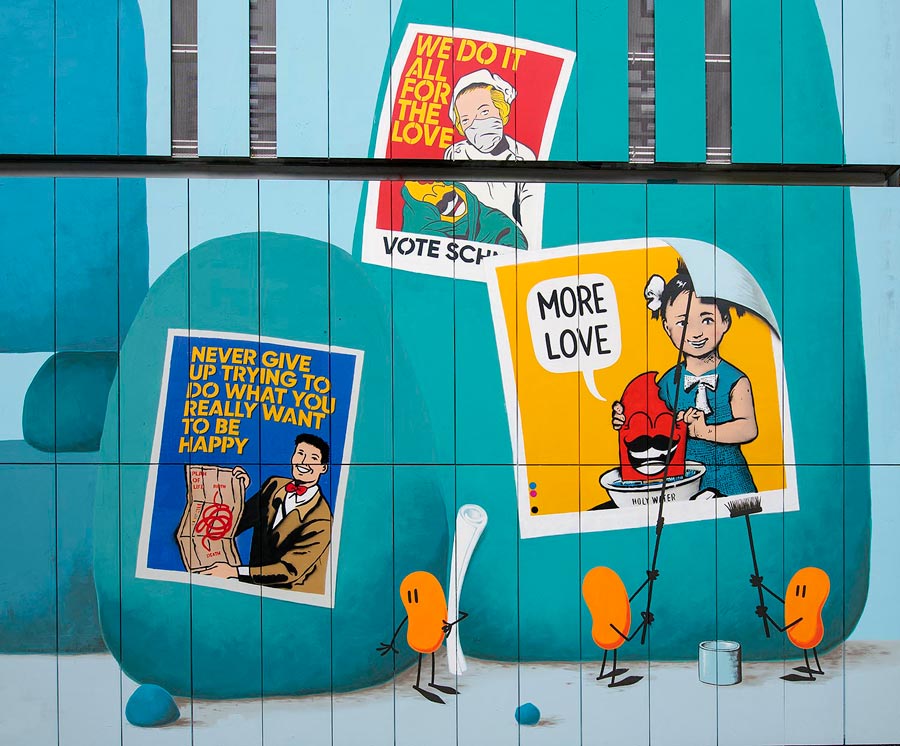
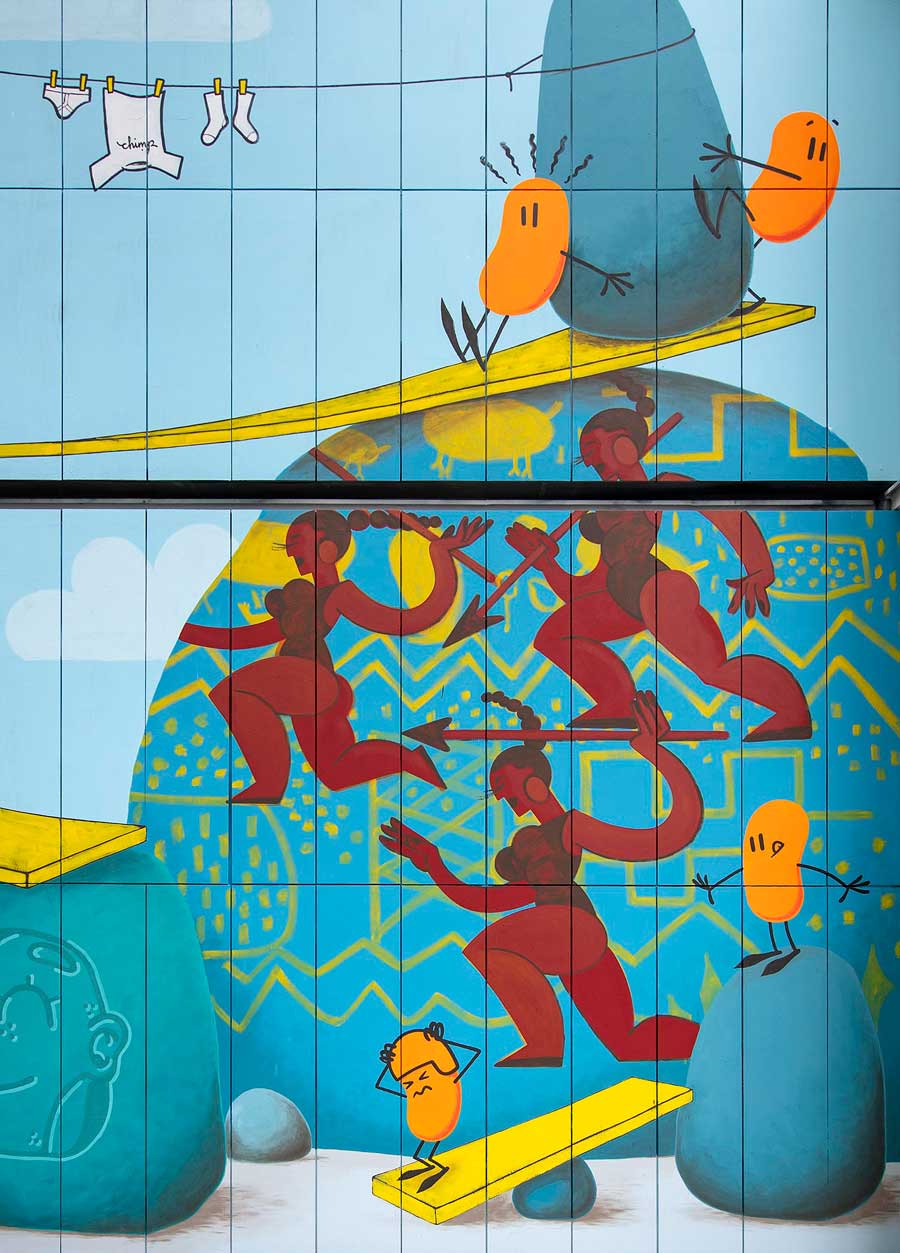
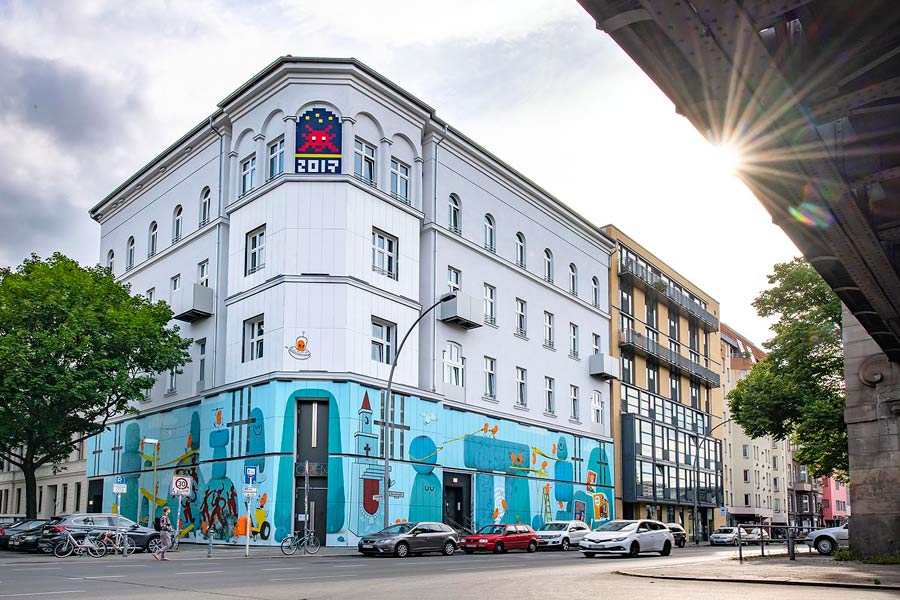
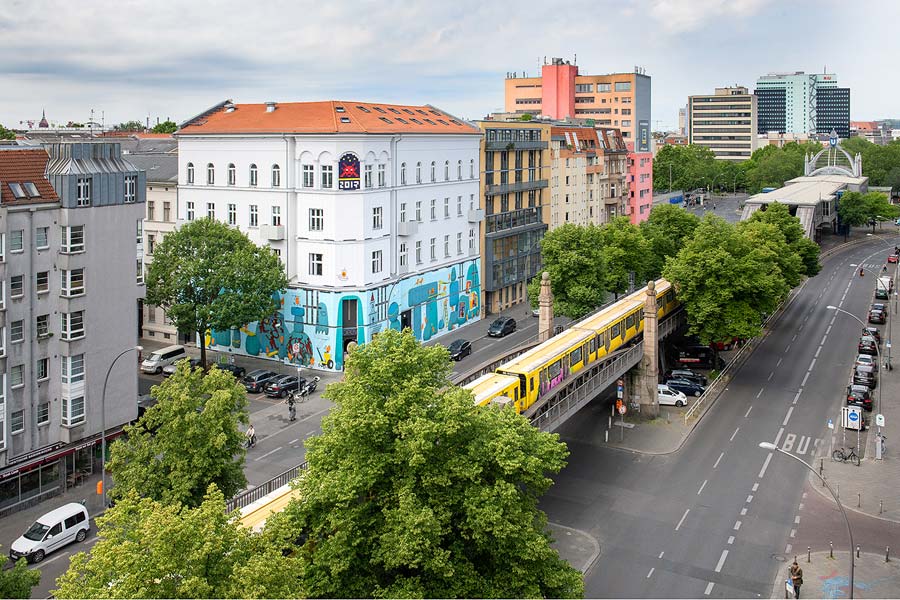
 BROOKLYN STREET ART LOVES YOU MORE EVERY DAY
BROOKLYN STREET ART LOVES YOU MORE EVERY DAY